GROWERS



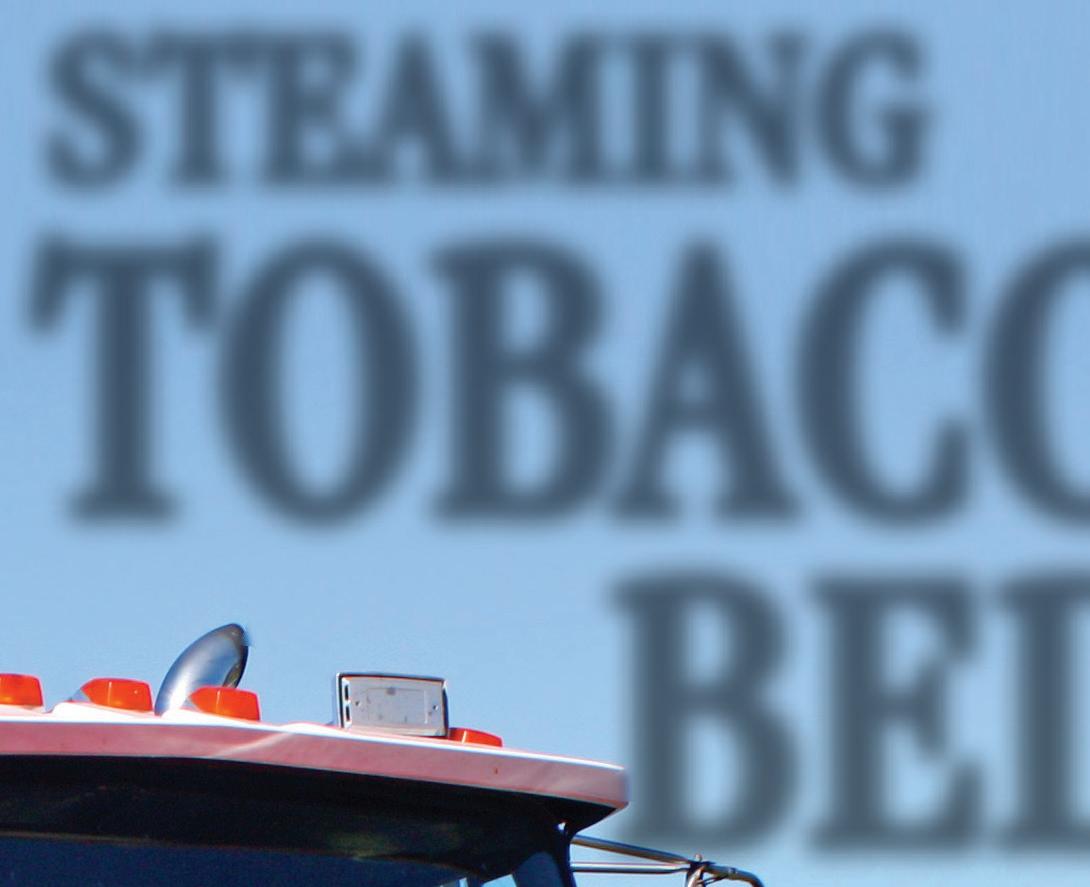

September 2023 Volume 26, Issue 2
STEAMING TOBACCO BEDS
Look for displays like this when Ford Motor Co. is the feature at the Edendale Crank Up next January in Edendale, New Zealand.
ONCE RELIED ON STEAM ENGINES TO KILL WEED SEEDS AND INSECTS
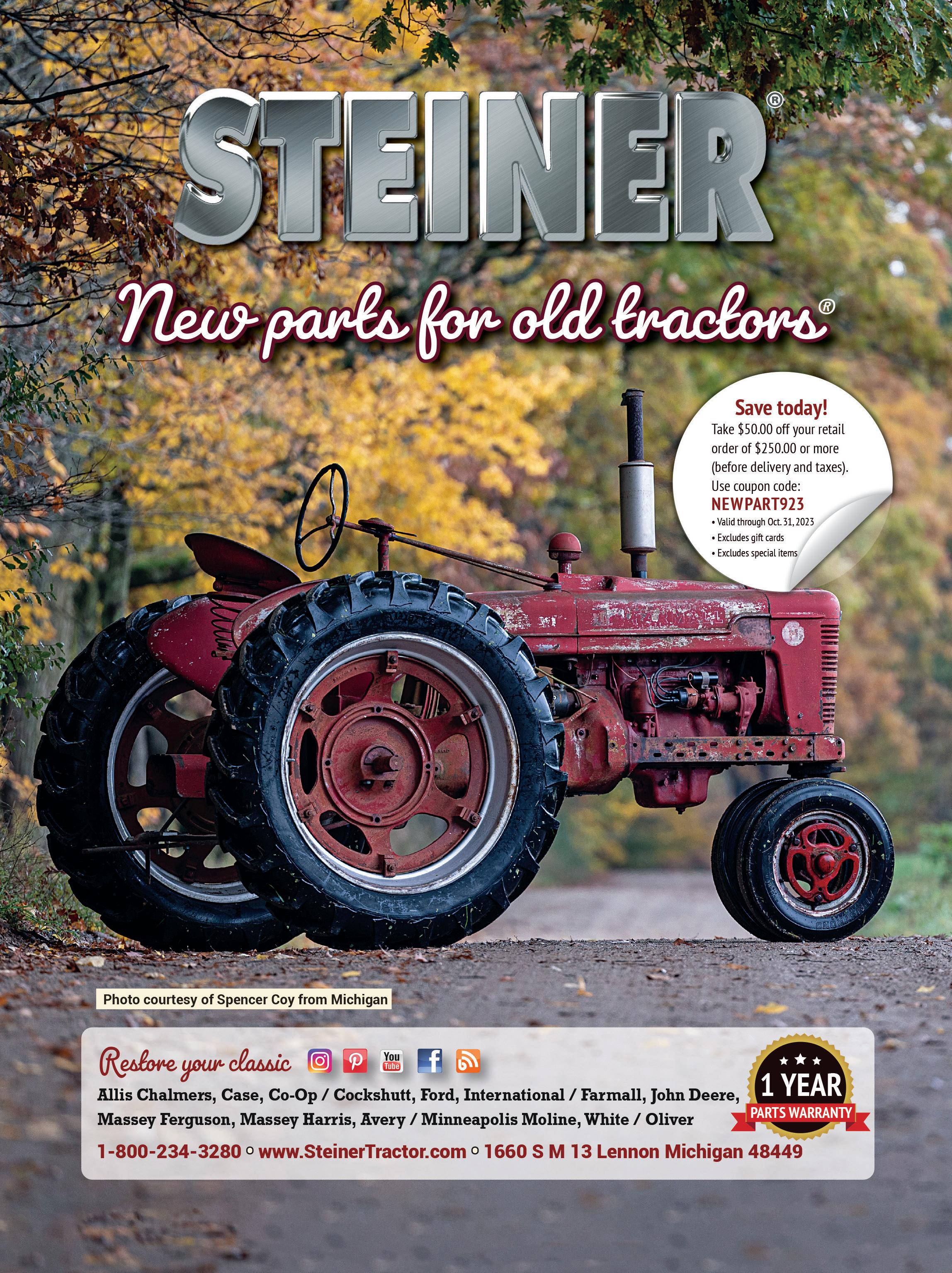
20 Fire at the Factory

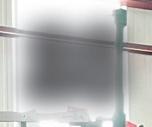
Once common in wood-frame factory buildings, fires were devastating to early manufacturers and neighbors.
Steaming Tobacco Beds

Using a grueling process, growers once relied on steam engines to kill weed seeds and insects.

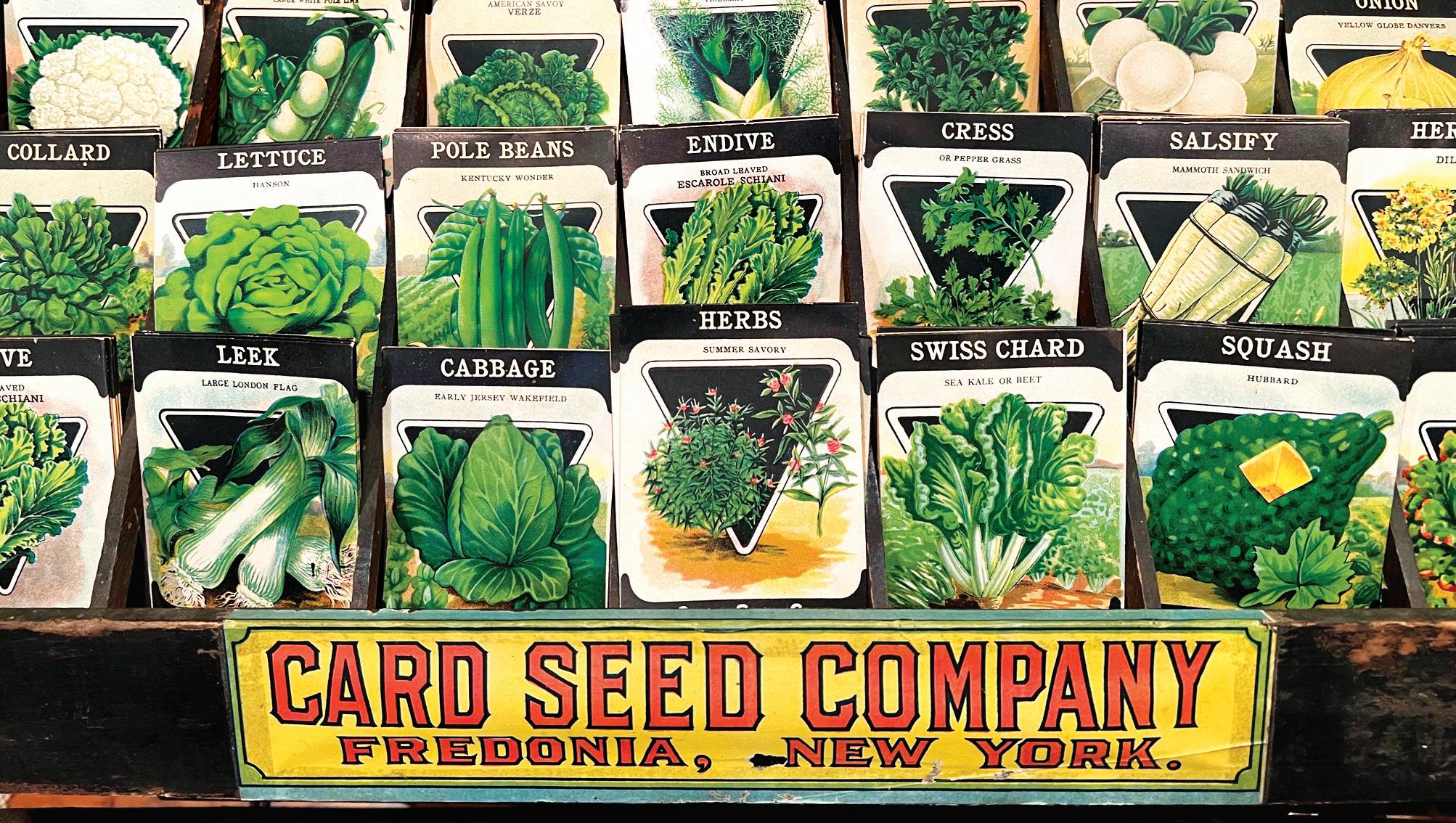

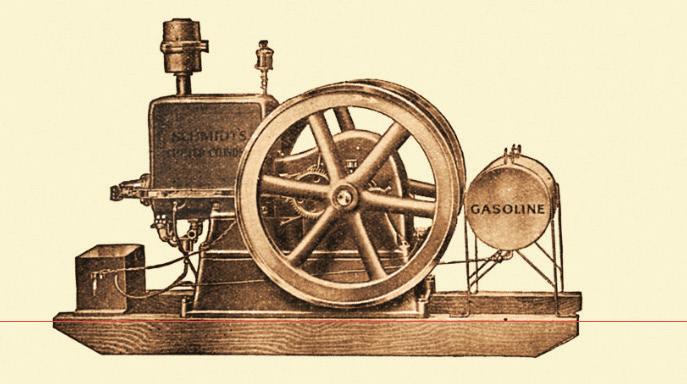



How Did They Do It?
Oiling windmills was not for the faint of heart.
34 A Growing Collection
Landscape



FEATURES SEPTEMBER 2023 DEPARTMENTS 2 First Things How did they do it? 4 Letters 6 What Is It? Can you name these gizmos and gadgets? 10 Let’s Talk Rusty Iron Technology eased the load on farmers’ backs. Sam Moore 14 Tales from Wales Jo Roberts meets a farm family heirloom of the Ferguson variety. Josephine Roberts 44 Classifieds
Barry Tuller 24
Billy M. Byrd 28
Jim Lacey
Sara Jordan-Heintz On the cover: Ford is the feature at the annual Edendale Crank Up in Edendale, New Zealand, in January 2024. Photo by Ken Bell. 24 20 28 34
architect is surrounded by gardening tools of the past.
Landon Hall Group Editor
Leslie C. McManus Senior Editor
Christine Stoner Associate Editor
Terry Price Art Director
Baylie Koch Advertising Coordinator

Web and Digital Content
Tonya Olson Digital Content Manager
Advertising Director


Brenda Escalante escalante@ogdenpubs.com
Display Advertising (800) 678-5779; adinfo@ogdenpubs.com
Classified Advertising
(866) 848-5346; fcmclassifieds@ogdenpubs.com
Newsstand: Bob Cucciniello; (785) 274-4401
Customer Care: (866) 624-9388
How
Farm practices of the past routinely leave me shaking my head. Take, for instance, the prospect of picking, say, 50 acres of corn by hand. By yourself, before winter sets in. Start before sunup and scoop the load into the corn crib at noon. Stop for a meal, return to the field and keep at it until dark. Scoop another load, take care of the horses, do chores and collapse into bed. Day after day after day, do it all again.
had to produce results – or their family suffered.
How did they do it?
That’s a question also posed by Jim Lacey in this issue, writing about the chore of oiling windmills before self-oiling mills existed. As one who has had considerable hands-on experience with antique mills, Jim knows the dirty secret of windmill maintenance back in the day. Quite simply, there wasn’t much of it.
Bill Uhler Publisher
Cherilyn Olmsted Circulation & Marketing Director
Bob Cucciniello Newsstand & Production Director
Bob Legault Sales Director
Randy Smith Merchandise Manager
Tim Swietek Information Technology Director
Ross Hammond Finance & Accounting Director
Farm Collector (ISSN 1522-3523), September 2023, Vol. 26, Issue 2. Farm Collector is published monthly by Ogden Publications Inc., 1503 SW 42nd St., Topeka, KS 66609-1265. Periodicals Postage Paid at Topeka, KS and additional mailing offices.
POSTMASTER: Send address changes to Ogden Publications, Inc., 1503 SW 42nd St., Topeka, KS 66609-1265. For subscription inquiries call (866) 624-9388. Outside the U.S. and Canada, call (785) 274-4366; fax: (785) 274-4305.

Subscribers: If the Post Office alerts us that your magazine is undeliverable, we have no further obligation unless we receive a corrected address within two years.
© 2023 Ogden Publications Inc. Printed in the U.S.A.
In accordance with standard industry practice, we may rent, exchange, or sell to third parties mailing address information you provide us when ordering a subscription to our print publication.
If you would like to opt out of any data exchange, rental, or sale, you may do so by contacting us via email at customerservice@ogdenpubs.com. You may also call 866624-9388 and ask to speak to a customer service operator.

Consider the tobacco farmer of a century ago. To get the plant bed in the best possible condition for planting, steam engines were used to steam the beds ( read about the process in this issue, beginning on Page 24 ). Using a large “pan,” steam was forced into the ground, killing weeds and insects alike.
Pans typically measured 9 by 12 feet. In the early days, they were so heavy that it took six men to pick one up and move it to the next position in the field. Imagine how many passes it would take to cover just one field in such a process – let alone acres of ground.
Compared to today’s world, life a century ago offered few diversions. To a farmer, diversions must have seemed like something that happened only to other people. Those who chose to farm
Elsewhere in this issue, Sam Moore explores the ways in which evolving technology began to spare farmers’ backs, beginning with hay loaders and barn trolleys. Sam recalls seeing, as a boy, old-timers permanently bent almost double, the price they paid for punishing their bodies for decades. He also tossed around a word we don’t hear much anymore: lumbago
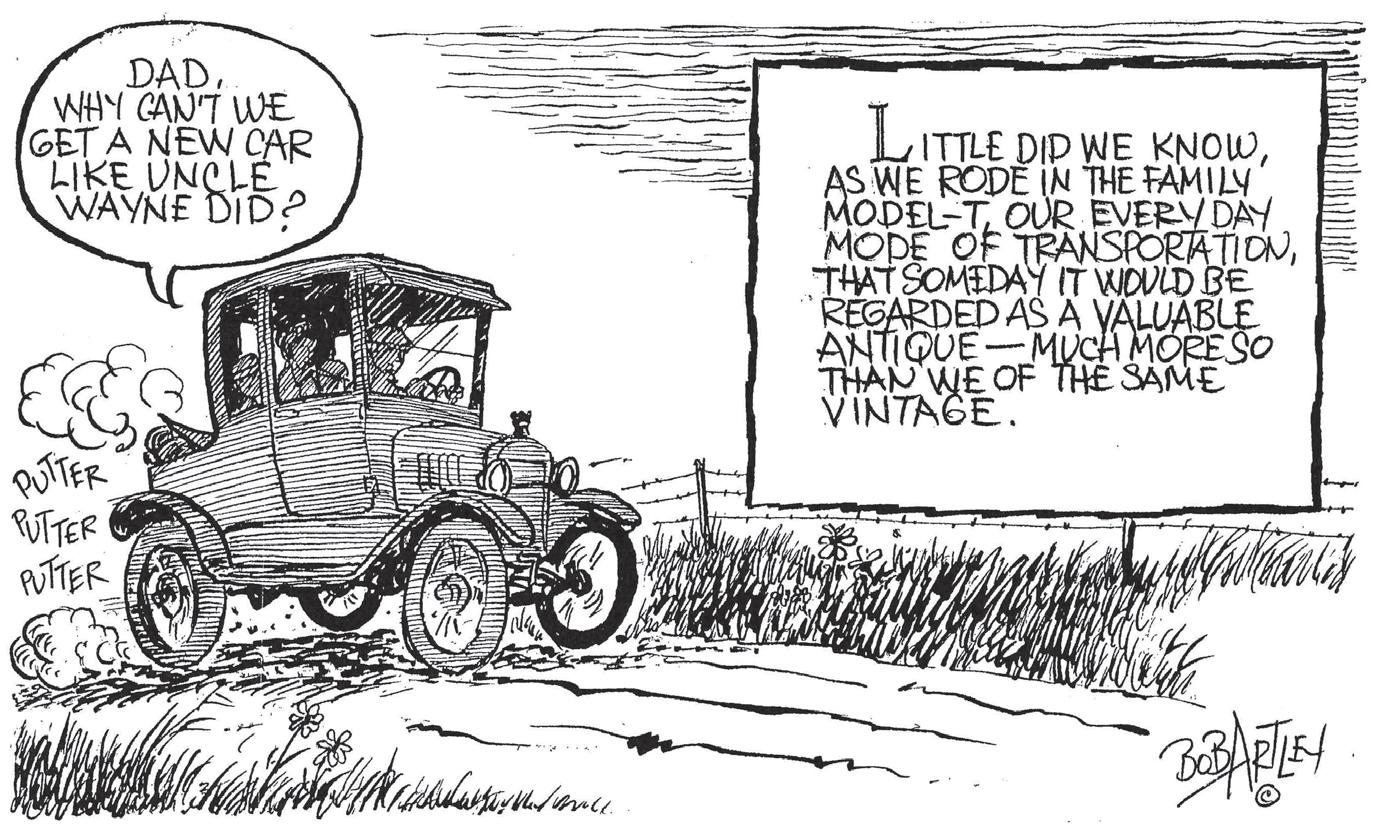
Today, roughly 80 percent of the western world’s population suffers from occasion lower back pain. Whether you farm or not, lumbago may be part of your daily routine. Just be grateful that you’re not picking corn by hand!
Memories Of A Former Kid®
Leslie C. McManus
LMcManus@ogdenpubs.com

First Things
Printed in the USA
did they do it?
2 September 2023 Farm Collector
postage included
Authentic period correct wood case buzz coil $90.30
Authentic wood case single spark coil, great for models $65
Low tension coils $90.30
72 Maytag Coil Eismann $145
WE ALSO CARRY PARTS FOR:

Wico EK, AH, H1, H4, F4, F6 Coils, points, condensers, Service & Much More. We also supply parts for many other brands.
GASKETS: postage paid
All gaskets are made in OUR shop, hi quality!
International LA/LB 1.5-2.5hp $31 & 3-5hp $33

International M 1.5-3hp spark plug & igniter $31
Maytag 92 Single & 72 Twin (Not paper gaskets) $14
Maytag Upright & 82 $14
Briggs 5’s/6’s $18
Briggs FH/FI $14
Briggs Model B $20
Briggs WM/WMB/WI $19
Fairbanks ZD $25
Lauson (Some gaskets, call)
Johnson Iron Horse 400 & 500 $19

Maytag 92/72 ball muffler on hose $48
Maytag Upright muffler $37
Maytag LeClair for 72 $55
John Deere 1.5HP $69
ENGINE MUFFLERS: postage paid
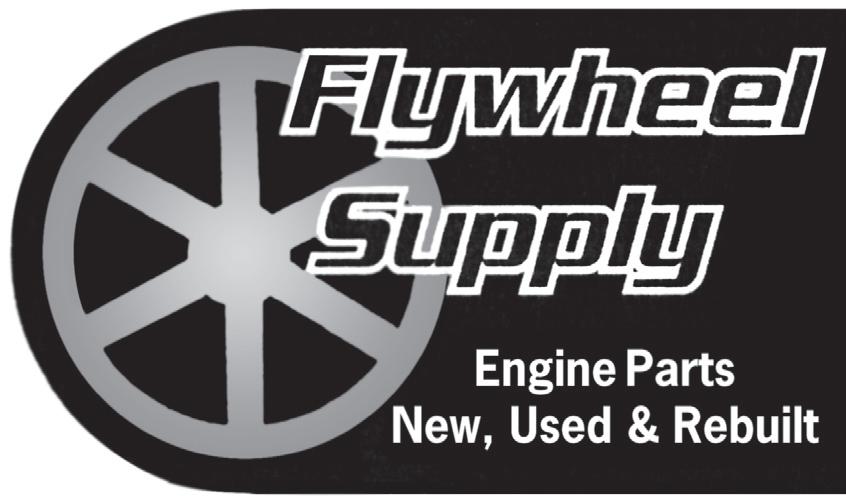
All sizes in stock and ship same day!
Custom sizes available, call.
MP=male pipe thread
FP=female pipe thread
International LA/LB 1.5-2.5hp 3/4”MP $25
International LA/LB 3-5hp 1”MP $27
Fairbanks-Morse 1.5hp 1”MP $46
Fairbanks-Morse 3hp 1.5”MP $51
Fairbanks-Morse 6hp 2”MP $61
Fairbanks-Morse Headless 1.25”MP $44
Universal Round Ball
5 inch ball 3/4” or 1” FP $44
10 inch ball 1.25”, 1.5”, 2” FP $65
Stover / Round ball
6 inch ball 3/4” or 1” MP $45
7 inch ball 1”, 1.25”, 1.5” MP $52
Cone / like associated
5.75 inch cone 1”,1.25” MP $54
7 inch cone 1.25”,1.5” MP $55
5.75 inch cone w/ round front 3/4”, 1” MP $48
PRODUCTS
Hit & Miss engine parts, Full Maytag engine parts line Custom machine shop– Full CNC & manual capabilities Magneto parts & much more Zach & Ashley Northway 235 Oak Street, Le Mars, Iowa 51031 (712) 490-5596 • info@flywheel-supply.com eBay Store: stores.ebay.com/TheMaytagShed We now own & produce the steel stamped mufflers formerly made by Minzel & Elroy of MN! Call with questions on any item. Accepting major credit cards, credit card orders ship same day! Please call before mailing any payment. International orders welcome, shipping extra. Check our eBay store for lots of pictures & 24/7 online ordering. Over 1,100
in
is
small sample.
not listed. Custom orders welcome! GENERAL: Spark plugs, wire & ends & related 10x26 roll gasket material $15 Higher temp MP15 material 3 pcs $24 Books, Manuals Piston rings Brass oilers & parts Brass Pet Cocks & Brass Fittings, many sizes and styles Red Kote Gas Tank Sealer Alcohol proof Postage paid $60
CARTS:
included Universal cast iron cart kit, 5th wheel & rear axle brackets $100 same kit w/ 4x 8inch cast iron wheels $228 International M cart kit, 5th wheel & rear axle brackets $106 same kit w/ 2x 9inch & 2x 12inch wheels
International LA/LB Cart $206
& MAG PARTS:
parts
stock, below
a
Call with questions & availability of anything
ENGINE
postage
$329
COILS
FREE CATALOG OF 2,000+
Author of Marvin Mill articles thrilled to find memorabilia from the fire at the mill
While I was doing research for future projects, I recently had a surprise discovery. I came across a real picture postcard that showed firemen fighting a fire in Fayette, Iowa. On the back of the card, the fire was identified as being at Marvin Mill on Nov. 6, 1909. The card was postmarked Nov. 11. The Marvin Mill was featured in articles in the July and August 2022 issues of Farm Collector. The articles told the story of rebuilding the mill at the Midwest Old Threshers Reunion in Mt. Pleasant, Iowa. The fire happened on a Saturday morning at start-up and quickly spread throughout the mill. The mill was located just across the Volga River from the town of Fayette. Firemen had just enough hose to stretch from a hydrant in town across the long bridge over the river to the mill. The entire mill was consumed in an hour’s time, leaving charred remains and twisted metal from machinery. Finding this postcard was just plain luck. But it was quite an exciting find, as it brings a clearer view of a moment in the past.
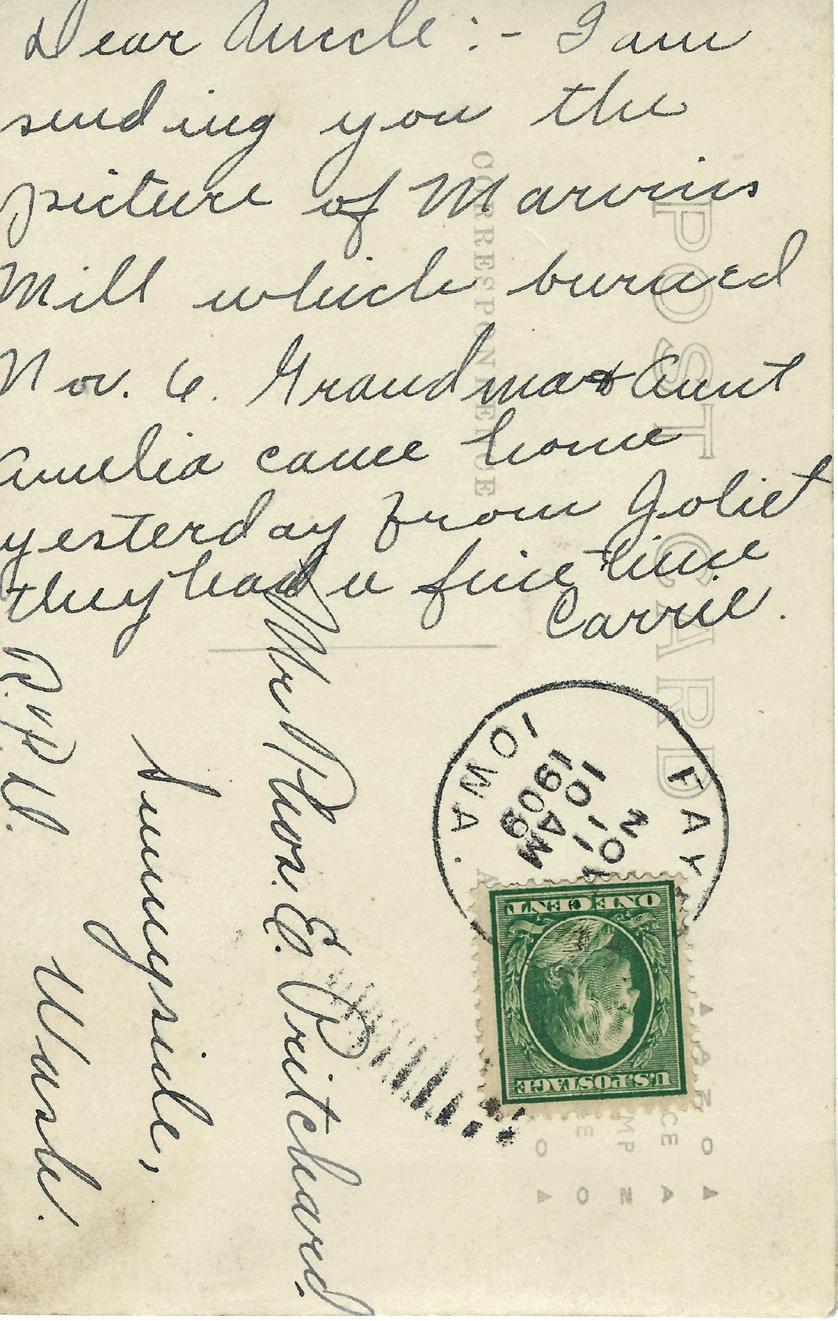
 Barry Tuller, Stevensville, Michigan
Barry Tuller, Stevensville, Michigan
Coming next month in Farm Collector!


Henry Ford’s Favorites
Leslie McManus takes in the Ford/Fordson
Collectors Assn. display showcasing classic tractors – including a rare prototype – at Southern Indiana show.

Four Seasons on the Farm
Historian Don McKinley takes us back 100 years, remembering fall as the season of harvest – and the time to prepare for the long, cold winter to come.

Murray M. Baker Looks Back at 80
From the Iron Men
Album archives, noted ag historian






F. Hal Higgins profiles the man who brought Caterpillar to Peoria, Illinois.

Working the Night Shift
Christina Staff tells the story of Missouri students who stretch their day past the “9 to 5” routine in order to revive an F-20.
Edendale Crank Up to feature Ford Motor Co. in January 2024
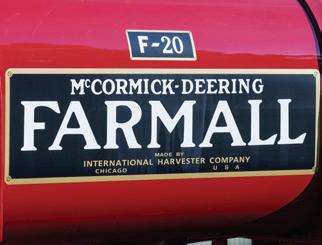
Looking for a way to combine old iron and warm weather next January? Consider taking in a show in Edendale, New Zealand. The Annual Edendale Crank Up will be held Jan. 27-28, 2024, and will feature Ford Motor Co. The offering includes steam engines, vintage sheep shearing, tractor pull, food and crafts stalls. For more information, contact Event Coordinator Ken Bell at kpbell@xtra. co.nz or visit www.edendalevmc.co.nz or the Edendale Vintage Machinery Club page on Facebook.

4 September 2023 Farm Collector Letters to the Editor
Remembering the experiences of working as a young farm hand

The photo of the threshing machine on Page 20 of the March 2023 issue of Farm Collector brought back memories. I am 86, headed for 87 in November. When I was in the fifth grade, I worked for my uncle on my grandma’s farm in Canton, South Dakota, during harvest and plowing in the fall. He bought an old Oliver Hart-Parr and my dad cut the wheels down and mounted rubber tires on it. My dad had his own garage in Canton starting in the 1930s and worked in it in the winter (he was on a gravel gang in the summer). Sometime in the early 1930s, after I was born, he quit the gravel gang and went fulltime in his garage.
“This is the only picture I have of the threshing in the late 1940s,” says Russell G. Hoffman. “The truck was a 1-1/2-ton Studebaker.”

I went on the threshing run with an uncle when I was in the fifth and sixth grades. I greased the machines at noon while the men rested in the shade. My uncle later bought a Farmall F-12 and Dad mounted rubber tires on it also. He had a jig to mount the hub and spokes on and welded the spokes to the wheels.
Dad and I used to go out in the evenings and help my uncle shock the oats. How many still know how to do that? When I was in the sixth grade, I worked for another farmer during the threshing run and would drive his cattle truck to the elevators in town. There were no driver’s licenses in South Dakota until about 1955. I had a car from when I was 13 on. My dad and his partner at Hoffman & Michelson sold Kaiser-Frazer cars from 1946 to 1954. I later had two different Henry J cars. Wish I had one now.
In the seventh grade, I started working for two brothers west of Inwood, Iowa (just across the Sioux River). I worked for them for six years. They bought a Massey-Harris 44 for me. I only weighed about 90 pounds in the ninth grade and the Farmall M clutch was almost more than I could handle. I had to hold onto the steering wheel and get the clutch in and then quick let go to shift before it pushed me back in the seat. They
bought a self-tying John Deere baler and I ran it all over Iowa and some in South Dakota. Sure beat the hand-tie baler they had when I started working for them. I got one cent a bale to drive the truck.
Those were memorable days for me. In the late 1980s, I tried to buy the 44 from one of the brothers. He said I could have had it but I was two weeks too late. He had already sold it to a farm in Inwood.
Russell G. Hoffman, Springtown, Texas


OLIVER NELSON IS OUR FEATURED ARTIST FOR SEPTEMBER!



Oliver Nelson, the son of Tanner and Alison Nelson, Dickens, Iowa, is this month’s featured artist. Oliver will receive a Farm Collector T-shirt: Congratulations, Oliver!

Have a budding artist in your family? Send your kids’ or grandkids’ farm-related artwork to Farm Collector, and we’ll send a T-shirt to the monthly winner. Send submissions to Farm Collector, 1503 SW 42nd St., Topeka, KS 66609-1265. Please include the artist’s name, age and hometown and a recent photograph. A release form will be sent to the parents of each artist whose work is selected for publication; the release must be signed and returned to Farm Collector before the artist’s photo can be published. For more information, contact us at editor@farmcollector.com.

www.FarmCollector.com September 2023 5
OLIVER NELSON AGE 9
Send letters to: Farm Collector Editorial, 1503 SW 42nd St., Topeka, KS 66609; fax: (785) 274-4385; email: editor@farmcollector.com; online at: www.farmcollector.com.
WANTED:
GADGETS, GIZMOS & CONTRAPTIONS


The genius of pioneer inventors can confound us. Countless contraptions that revolutionized farming in the 19th and early 20th centuries have become contemporary curiosities, or even mysteries. Here are six sent in by readers. Do you know what they are?

Answers to the September 2023 items will appear in the November 2023 issue. Answers for new items in this issue must be received by Sept. 13, 2023.




SEPTEMBER MYSTERY TOOLS

A. Tool measures 4 inches long. No markings other than those (0-100) on the dial.


B. Solid brass handle. Measures 9 inches long with a 1-5/16inch shaft hole and a 3/8-inch square keyway. The slot is 3 inches long and 1/2 inch wide. It measures just under 3/4inch thick in the flat area. No markings except for some green paint on the back of the lever.
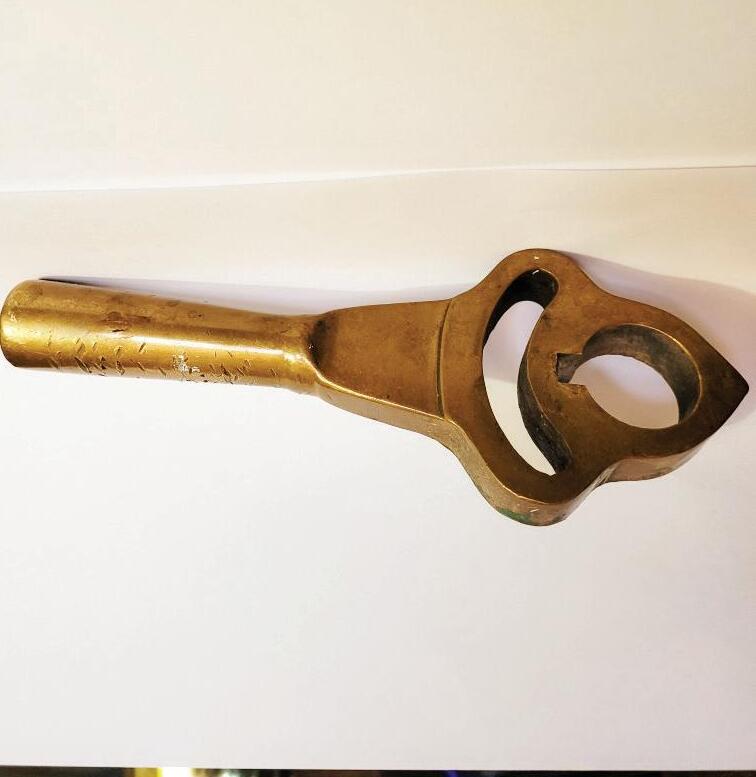
C. Box formed of two identical wooden halves that are hinged to a bottom board. The latch that holds the two sides together is a hairpin-like device made from one piece of heavy wire. A slight pull on this wire allows the two sides to fall open with a loud bang.
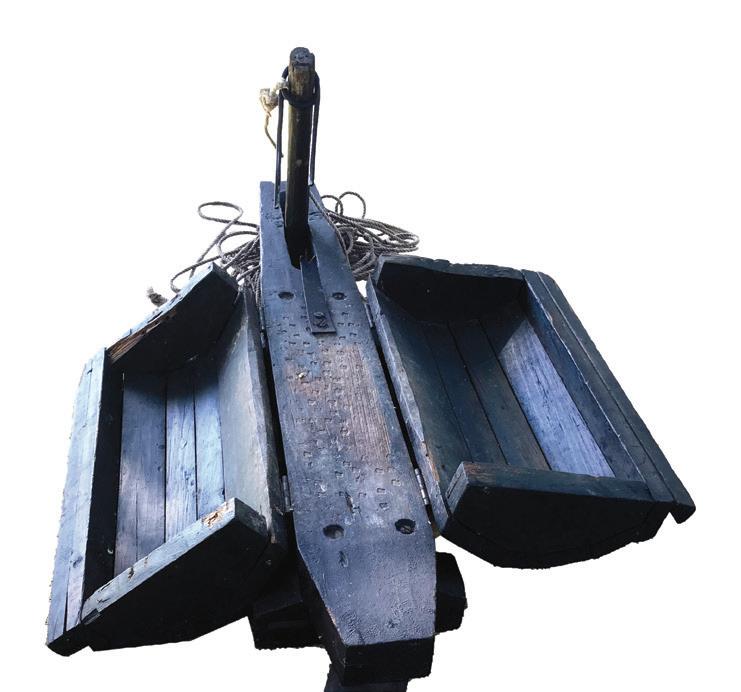
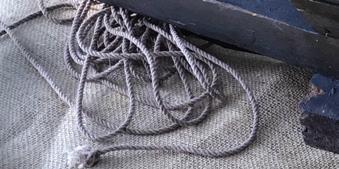
D. Mounted on a 4x4 block of wood. Measures 15 inches long with two 4- by 5-inch slides on top (one is missing). Also, a steel head action on top; spring returns.
E. Tool has a sharp blade on top.
F. Markings on flat surface are not legible. Round part end of the tool appears to have been beaten. Shown in open and closed position.
































To submit photos: Send prints to Farm Collector 66609. Send digital images to editor@farmcollector.com.
Photos should be taken in a well-lit area against a plain background. Include dimensions and any markings on the piece. We cannot guarantee every photo will be published, nor can we respond to inquiries regarding when photos will be published. No photos will be returned. Digital photos should be sent as .jpgs at a minimum of 300 dpi. To identify an item: Send answers (with your name and address) to Farm Collector, 1503 SW 42nd St., Topeka, KS 66609. Email responses may be sent to editor@farmcollector.com.

Answers for new items shown in this issue must be received by Sept. 13, 2023.

6 September 2023 Farm Collector
What Is It?
C.
ANSWERS TO B.












used in ice harvesting.





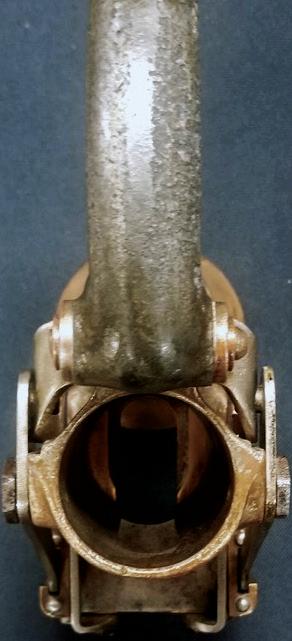





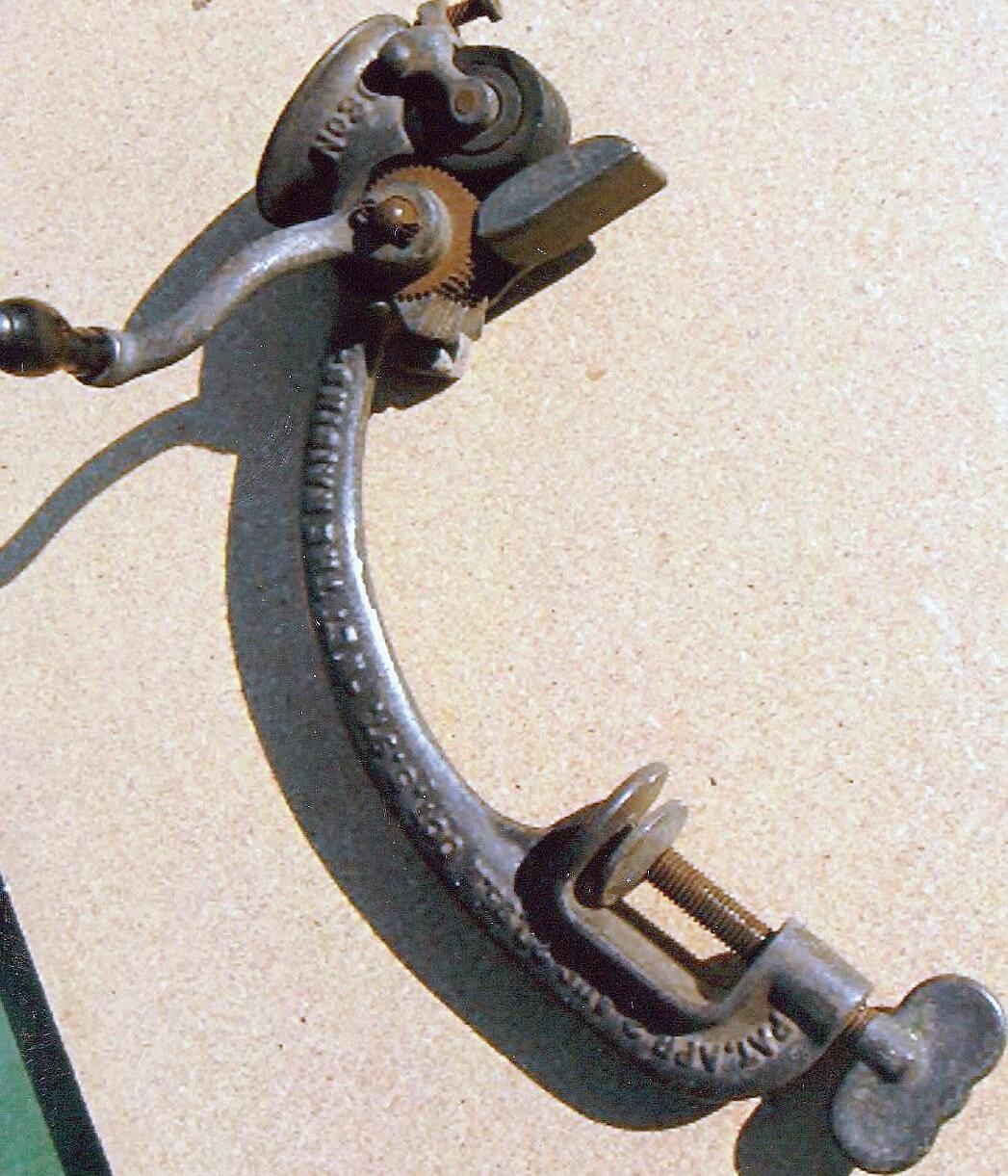

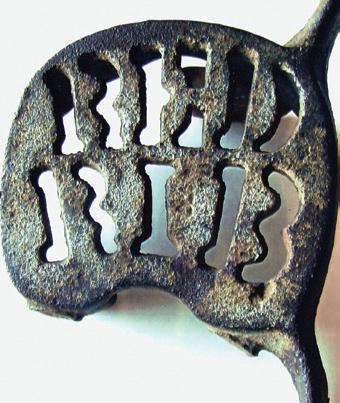
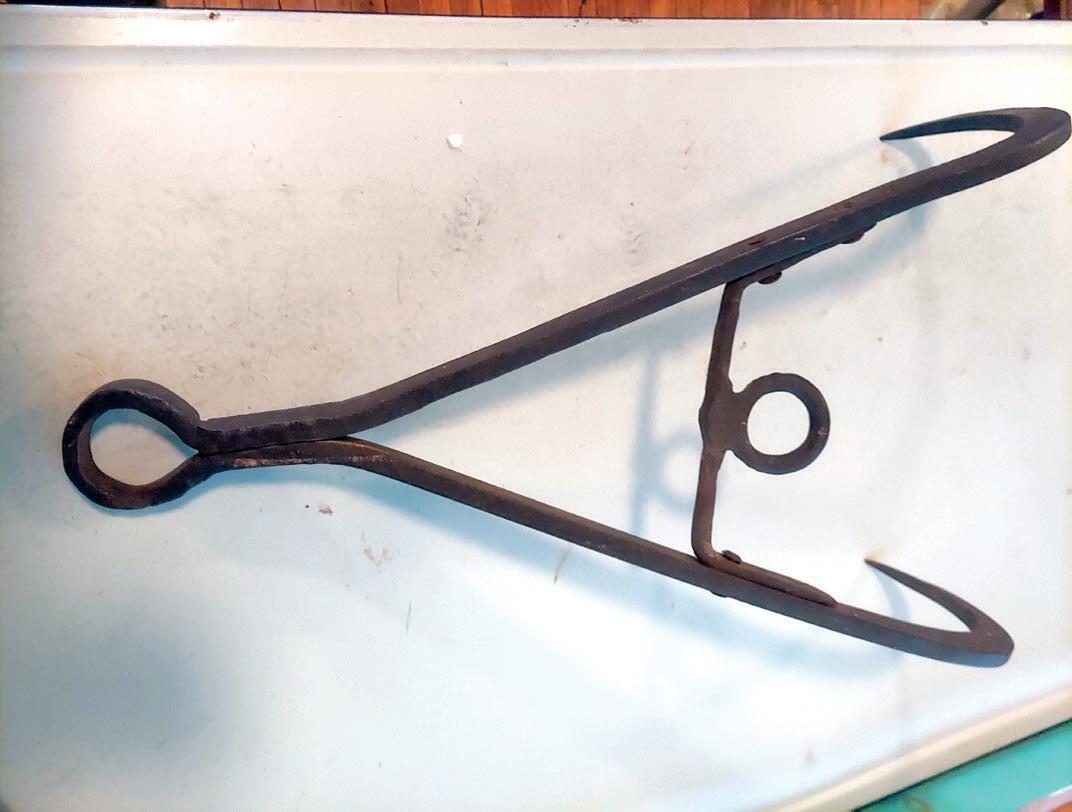







Patent No. 591,322:














Patent awarded to J.W. Brown Jr., Philadelphia, Oct. 5, 1897.
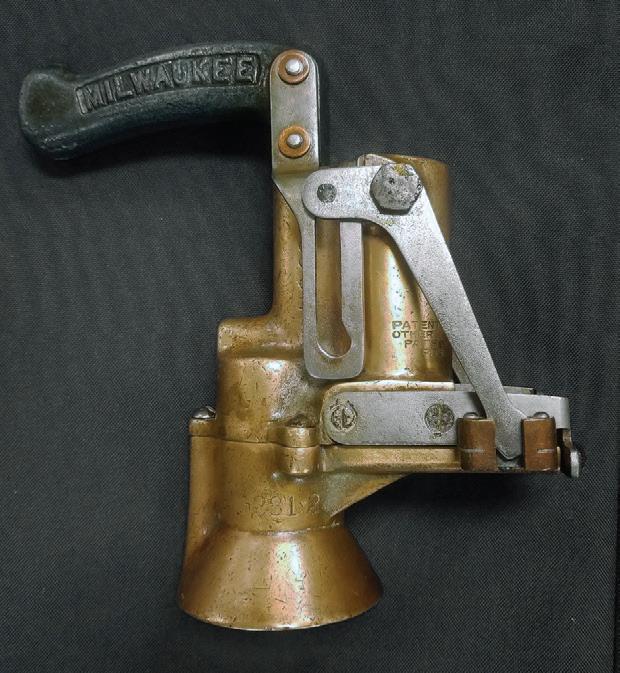


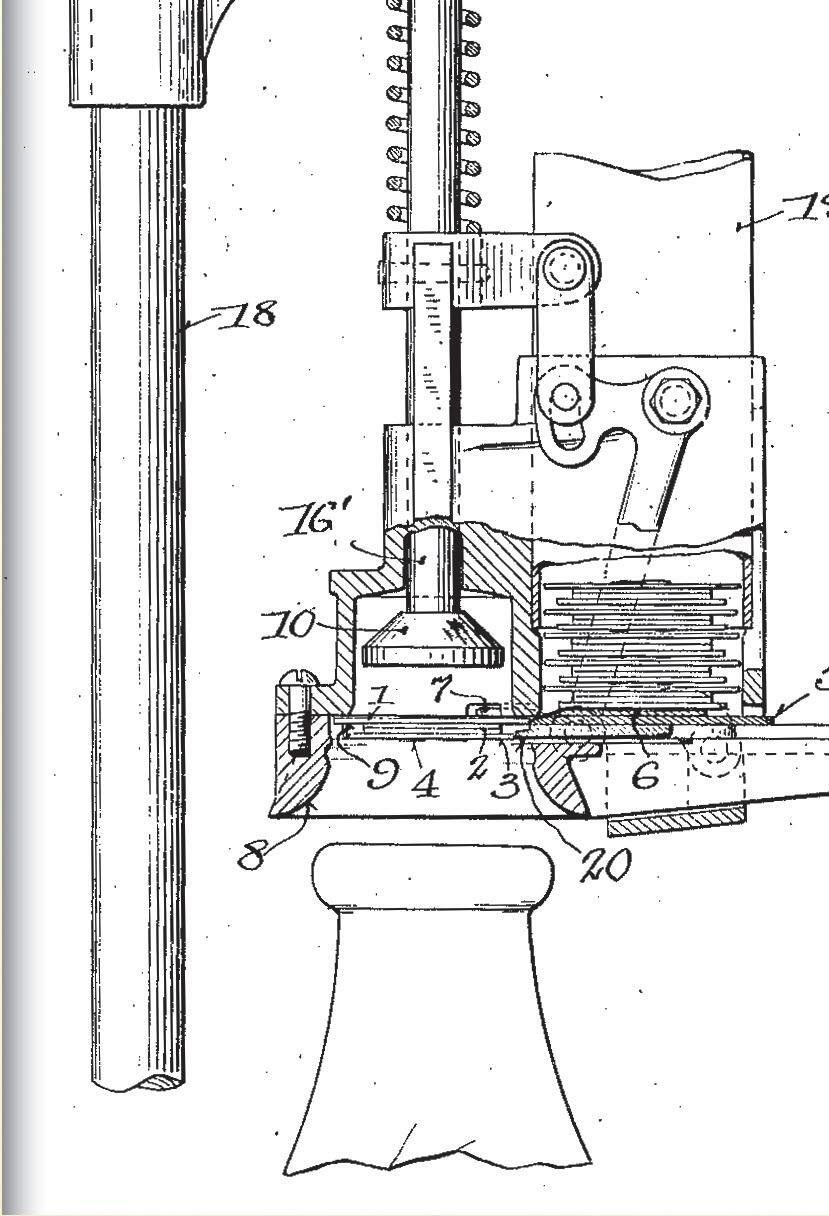

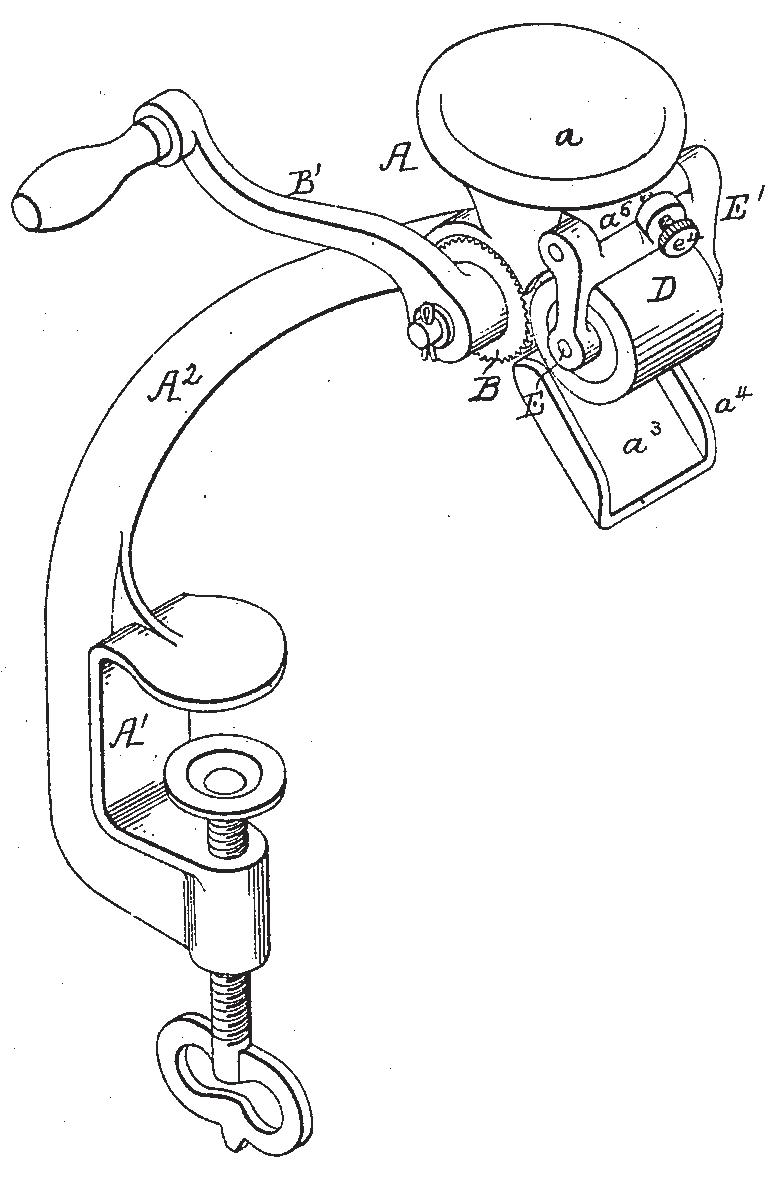
www.FarmCollector.com
JULY
tongs
Identified by Ron Ratajczak, Manitowoc, Wis. Photo submitted by Michael A. Tabolt, Croghan, N.Y.
F. Unidentified. Photo submitted by Rick Nidey, McLoud, Okla.
Ohio; Andy Hastings; Bob Barrett, Canaan, N.H.; and Donald Bernaski, Amsterdam, N.Y. See patent No. 1,360,463. Photo submitted by R.N. Dilgard, Ashland, Ohio.
E. Unidentified. Photo submitted by Rick Nidey, McLoud, Okla.
and Bill McAuley, Francestown, N.H. Photo submitted by Bob
Raisin seeder.
A. Unidentified. Photo submitted by Clarice Anderson, Shafer, Minn. Tom Parker, Canal Winchester,
Patent No. 1,360,463: Milk bottle capper. Patent awarded to Gustav Strandt, Milwaukee, Nov. 30, 1920.


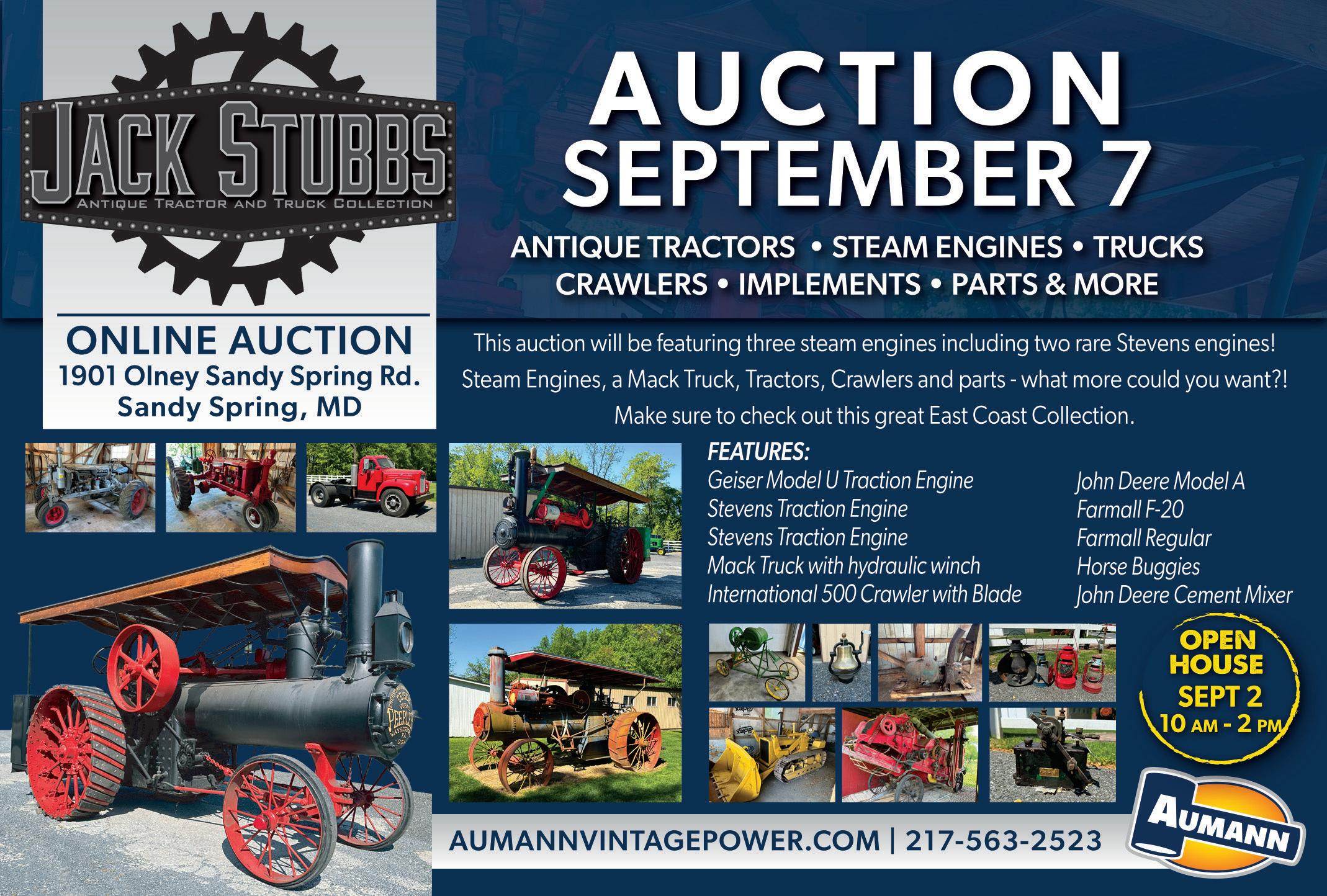

Technology Eased the Load on Farmers’ Backs
WhenI was a kid on the farm, dozens of everyday jobs required a strong back and a lot of muscle. This strenuous physical labor took a heavy toll on many farmers over the years. I remember a few of the old-timers around the neighborhood who were permanently bent almost double from a lifetime of punishing their bodies. Neither my father nor my uncle were large men, and probably never weighed as much as 150 pounds each, yet they, like so many others, did most of this hard work themselves, with the help of an occasional hired hand. I don’t know that they ever did permanent damage to their backs, but I do remember periodic bouts with what we then called “lumbago.”
One of the many back-breaking jobs on almost every farm was the annual struggle to get enough hay cured and stored to carry the livestock through the next winter. Until after the start of World War II, my father and uncle still made hay the same way my grandfather and great-grandfather had.
The grass was cut with a 5-foot McCormick-Deering mowing machine behind a team of horses. After curing in the swath for a day, the hay was raked
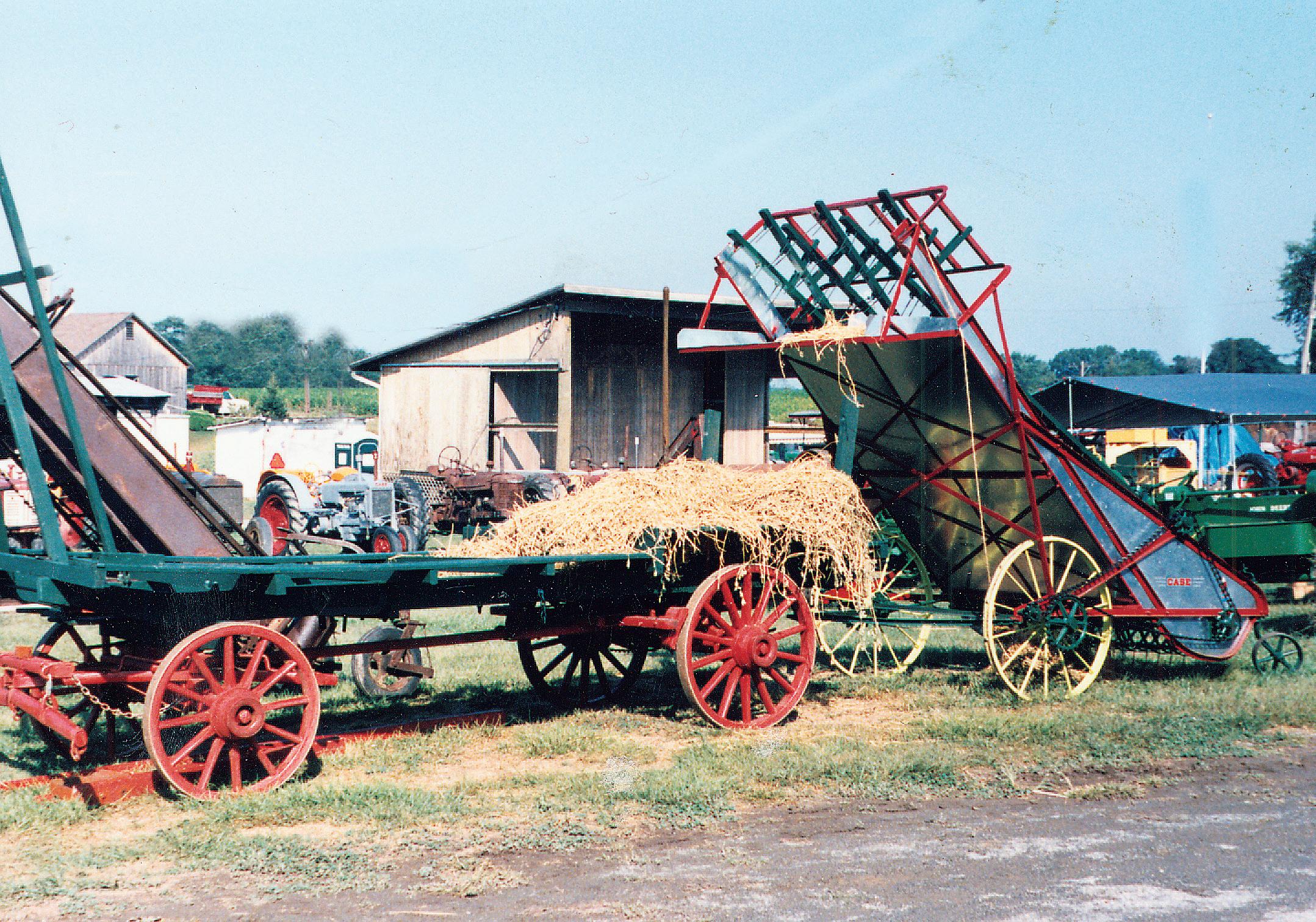
into long windrows with a dump rake. Usually, these windrows were then formed into individual small cocks, or hand-stacks, as we called them, with a pitchfork. Finally, a hay wagon was driven through the field and the handstacks were heaved onto it, again with a pitchfork, before being hauled to the barn. At the barn, there was more hand and back work, as the loads of hay were thrown up into the haymows, pitched and packed into position.

Innovative early design endured
Sometime, probably during the late 1930s, Moore & Townsend (the partnership formed by my father and uncle) installed a barn hayfork track and carrier in our dairy barn. With that, a horse or a tractor on the end of a rope provided the power to lift the heavy hay from the wagon into the haymow. Then, during the early 1940s, the partners wrangled a government permit
10 September 2023
Below: A Massey-Harris No. 5 hay loader from the 1930s. Pulled behind a wagon, the cylinder with the curved spring teeth picked up the hay and deposited it on the rope-and-cross slat conveyor that carried it up and dropped it on the wagon.
Left: A Case push-bar hay loader behind a typical hay wagon. The hinged unloading gate of the loader is in the lowered position. Photo by Sam Moore.
Above: Benjamin Townsend’s 1850 patent. The pointed, wooden teeth out front gathered the hay in the swath, which slid up and to the rear where it was caught by the spikes riveted to the leather belts. These belts, which were turned by a cogwheel on the main axle, raised the hay up the slanted elevator where it was dropped onto the trailing wagon.

Above: A hay raking and loading apparatus patented in 1848 by M.W. Baldwin and A.S. Lyman of Philadelphia. Two rakes as wide as the wagon, made so that one operated inside the other, worked out in front of the horses. When the front rake was full of hay, the man behind grabbed the lever attached to its rope and jammed the pointed end into the ground. This caused that rake to lift the load of hay up over the horses and back over the front where the hay dropped onto the wagon. In the meantime, the second rake was gathering its load. When it was full, the operator lowered the first rake into position, dropped that lever and grabbed the other. This operation was repeated until the wagon was full. In heavy hay the operator would have been pretty busy, and I wonder what the horses thought of all the activity going on right in front of their noses.
and bought a brand new side-delivery rake and hay loader. When these shiny new orange-and-green implements were delivered, we were ready to put up hay the easy way.
One of the earliest patents for a machine to load hay (shown above) dates to 1848. It shows a large wagon with two wooden rakes out in front and a system of ropes and levers. As the wagon was pulled across the mown hay, each rake was allowed to slide along the ground until full, when it was raised and dumped into the wagon by a rope and lever. This cumbersome outfit was never a success. In 1850, Benjamin Townsend of Quincy, Illinois, patented a “hay raking and loading machine” that somewhat resembles the later slanted hay loaders with which most of us are familiar, except it’s pulled in front of the wagon instead of behind.



Finally, in about 1875, Keystone Mfg. Co. of Sterling, Illinois, perfected a suc cessful hay loader in a design that was to be popular for many years. As the wagon and loader were pulled length wise along a windrow, the hay was gathered and lifted from the ground by a revolving cylinder with curved, spring teeth. The hay was deposited on a moving conveyor of ropes and
wooden slats that carried it up an incline and dropped it onto the wagon.
Later, a system of reciprocating rakes, or push bars, was substituted for the rope-and-slat conveyor. Upward angled teeth on the underside of those push bars carried the hay up a slanting deck. At the top of the deck, the hay was pushed off onto the wagon or hayrack, where a man with a pitchfork could build the load. Most later hay loaders featured a hinged, adjustable gate at the top of the deck that could be let down when starting the load so the hay didn’t have as far to fall onto the wagon. This was especially useful on windy days to prevent the hay from being blown off the side of the wagon. As the load got higher, the gate was raised to give more elevating height.
Abandoned by new technology
There are many stories of the reaction of the man on the wagon when a rattlesnake happened to get caught up with the hay. I witnessed just such an
on top of the load when I suddenly heard a thud on the truck roof above my head. The next thing I saw was Dad bounding onto the truck hood and then leaping to the ground. He was in for a lot of teasing when we all discovered that it was only a harmless black snake that had spooked him so badly. By the 1880s, most farm equipment manufacturers offered hay loaders, and they were widely used until pickup balers became popular after World War II. As the practice of putting up loose hay fell out of favor, unused hay loaders were usually abandoned in a fencerow, where the many parts made of wood, rope and light sheet metal soon deteriorated. Even though these machines undoubtedly saved many a farmer’s back during their heyday, they have been pretty much forgotten, and it’s a rare sight to see a restored hay loader at a show today. FC
Sam Moore is a longtime Farm Collector columnist. This column originally appeared in the July 2006 issue.
www.FarmCollector.com September 2023 11
Right: A load of hay heading for the barn.





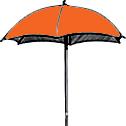
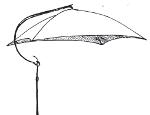















































































































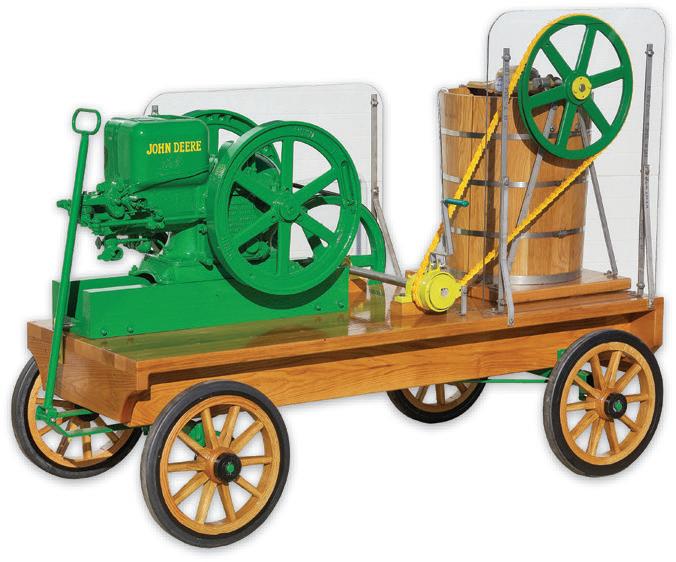














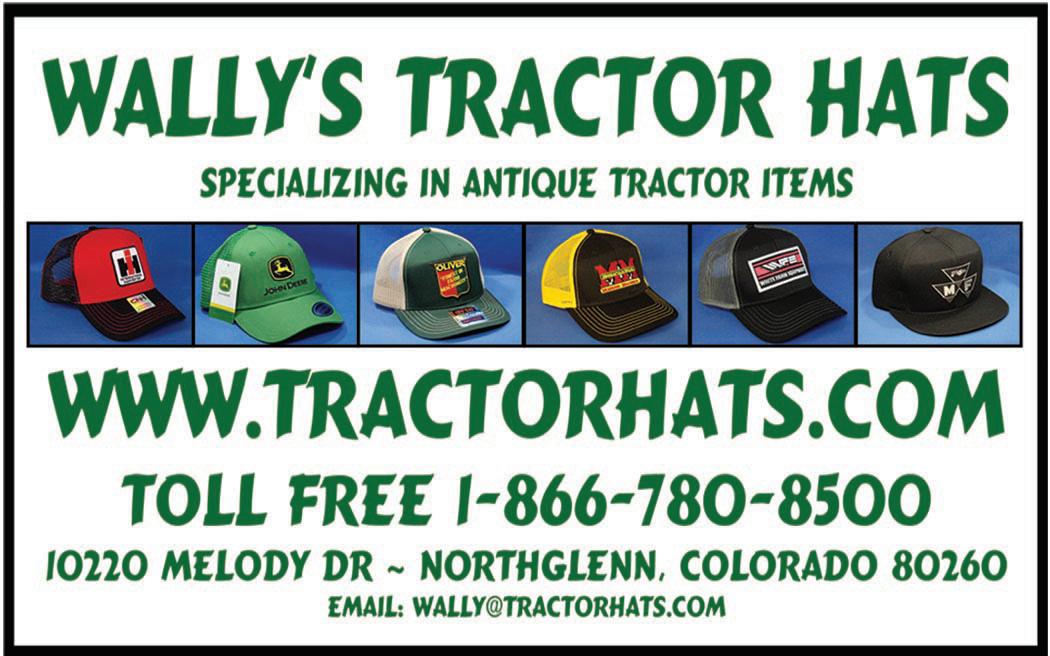
To advertise here, contact Terri Keitel 785-274-4384 Or email tkeitel@ogdenpubs.com Box 485, Raymore, MO 64083 Ph: 816-322-1898 Since 1984 Please visit our website: www.TractorUmbrellas.com “The Umbrella People” Bent Shaft Style Straight Shaft Parasol Style Curved Hanger Style Buggy Top 3-Bow Style Lawn & Garden Style Quality Farm Tractor Umbrellas & Replacement Covers Heritage Farm Power Heritage Farm Power Allis-Chalmers • Case • Dearborn • Ferguson • International Harvester • John Deere Massey-Ferguson • Massey-Harris • Minneapolis-Moline • Oliver Dakotah Toys Ltd. The Parts Supplier Farm Toy & Pedal Tractor Parts Send $4.00 for Catalog 44718 S.D. Highway 34 Phone 605-256-6676 Madison, SD 57042 Fax 605-256-9093 ✰ www.dakotahtoyparts.com Chris Wyman 16860 County Road 40 Carver, Minnesota 55315 C: (952) 913-0181 wymancar@gmail.com www.wymansonstractorparts.webs.com Wyman & Son’s Tractor Parts SCENIC VIEW ENGINE LLC Ervin Miller 5673 County Rd 59 Millersburg, Ohio 44654 330-674-2450 Hit & Miss powered Ice Cream Freezer Units Complete Units or Parts Antique Tractor & Engine Restoration Engine Repair Valve and Head Rebuilding Powdered Ice Cream Mix Ice Cream Freezers & Parts e-mail: scenicviewengine@ibyfax.com We Restore John Deere and other Engines Contact us for a free Brochure Specializing in “MADE IN USA” Antique Tractor Gauges Steering Wheel Recovering W7619 Walnut Drive Cell 715.520.7876 Spooner, WI 54801 Email: tractorgauges@yahoo.com www.evergreengauges.com
New Parts: Steering Clutches • Brake Bands Sprockets

Engine Parts • Grille Screens

Seat Cushions • Battery Sheet Metal Radiators • Much More

Track Rebushing Service, Rebushed Track Assemblies Used Parts for MC 40, 420, 430, 440, 1010 & 2010



Lavoy Wilcox, Horace, N.D., (701) 361-1006 (days)


Travis & Shirley Jorde (507)
SEPTEMBER 9 & 10, 2023
Admission: $10/day; Age 8 & under – Free
Featuring
• Parades & Shows
• Antique Equipment Demos
• Threshers' Breakfast
• Quilt Show & Raffle
• And so much more!
• Entertainers & Musicians Welcome Sat. & Sun.
SupperFri.,Sept.8
servedby Friends of theTrail - 5:30to7pm

For a complete schedule: www.carstensfarm.com


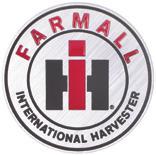

Open June thrOugh August by AppOintment. For more information, contact: Carstens 1880 Farmstead, (402) 690-0367

This unique farm is a witness to the changes farming has gone through in the 20th Century.

Just south of the Shelby / I-80 Exit 34
Carstens Farmstead 1880
41st AnnuAl
www.jdcrawlers.com New & Used JD Crawler Parts
Our Web Site For More
Visit
Information!
288-5483 935 Ninth Ave. N.E. Rochester, MN 55906 e-mail: decals@jordedecals.com www.jordedecals.com Decals for
Tractors Jorde’S decalS Since 1976 Backed by years of research and attention to detail. The choice of professionals. Licensed Product TEMPLE ELECTRIC MOTOR SERVICE
Starters and Generators for Antique Tractors. 2121 NW 2nd Ave
MN
1930 507-334-6989 Templelec@hotmail.com LIGHTNING MAGNETO A DIVISION OF FLYWHEEL SUPPLY a full line of reproduction E parts View online or write for your free parts catalog JOHN DEERE, WATERLOO BOY, REPRODUCTION TRUCKS. ANNOUNCING: NEW ONLINE STORE LIGHTNING MAGNETO 235 Oak Street • Le Mars IA 51031 Ph: (866) 657-5335 info@flywheel-supply.com Lavon Yoder 6035W600N Shipshewana, N 46565 574.304.4587
Iron Drawbar Lock! Unique one-piece device stops the drawbar from turning! No bolts or pins! $70.00 (free shipping)
John Deere
INC. Rebuilding
Faribault,
55021 Since
Cast
Tales from Wales
 Josephine Roberts
Josephine Roberts
THE FAMILY FERGIE
JO ROBERTS MEETS A FARM FAMILY HEIRLOOM OF THE FERGUSON VARIETY
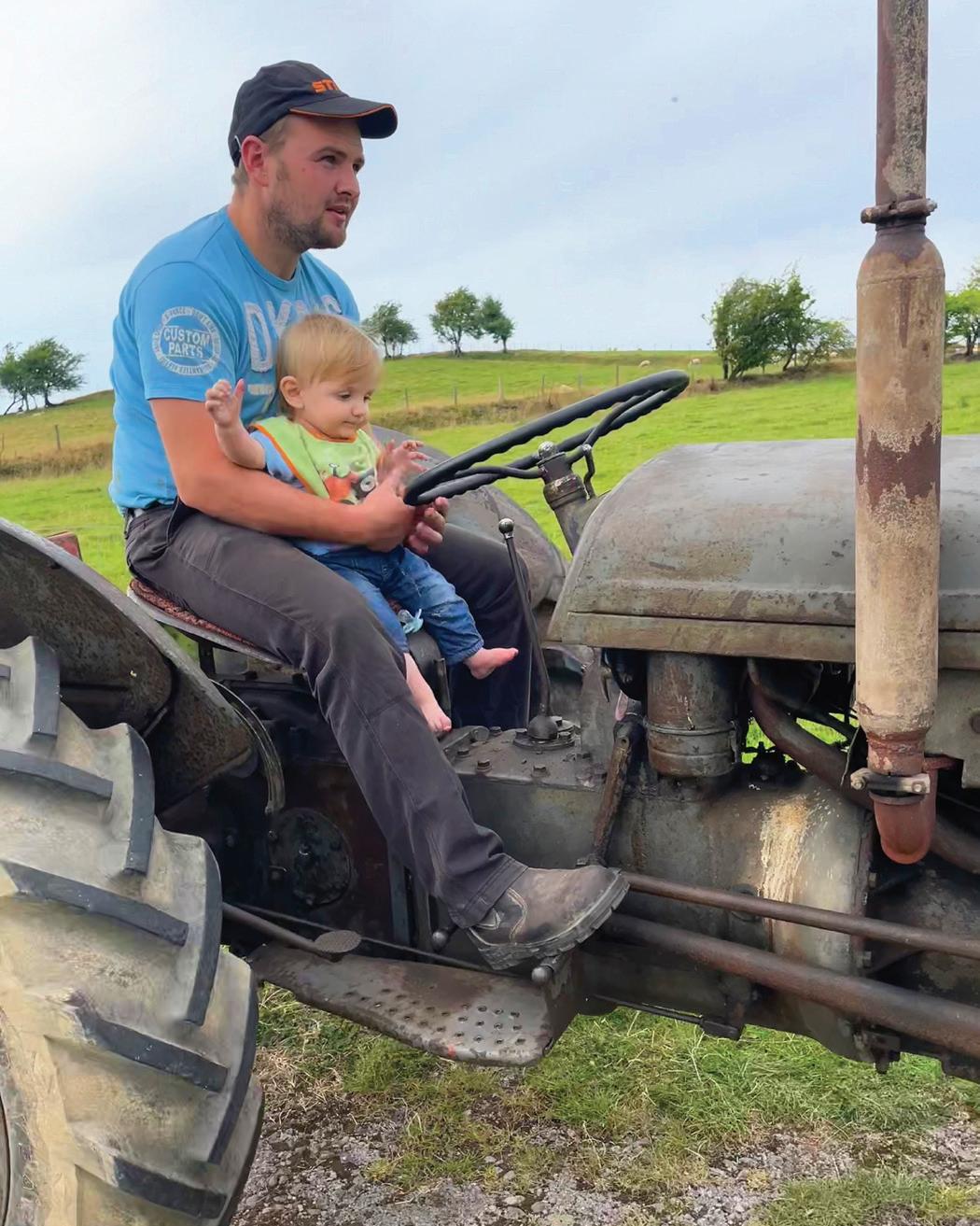
In my work as a “rural heritage journalist” (a term which is rather “bigging up” my work, as really all I do is go around chatting and listening to interesting people), I come across a lot of old tractors. Some of these old tractors are extremely unusual and very valuable, but it isn’t necessarily the case that these “wow factor” tractors will make the best stories. Often it is the more ordinary old tractors that make the best stories, and this month’s story features an old tractor that some might rightly say is quite commonplace here in the U.K., namely a Ferguson.
The little grey Ferguson tractors were made in the hundreds of thousands, and at one time pretty much every other farmer would have owned one. There are more of these tractors on the vintage circuit than any other type of tractor … so what makes this particular Fergie worth writing about, and what makes it, to me at least, more interesting than some rarity that is worth perhaps £10,000 more?
Well, you see, so many of the extremely rare and expensive tractors have no back story. They have very often been bought at auction by a collector who knows nothing of the tractor’s past, and who has very often only driven the tractor a few meters from trailer to the show-ring. Don’t get me wrong, rare tractors are always interesting to look at, but the older I get the more interested I am in the stories that go with these old machines, and the less interested I am in their monetary value.

14 September 2023 Farm Collector
Aled Jones and his son Dyfan on the tractor. “He loves having a sit on the Fergie,” Aled says.
A precious family photograph showing the tractor with Aled’s grandfather, Brynle Owen Roberts, as a young man in the driving seat, and his stepfather, Gwilym Moelogan Bach, standing beside him. Taken in the early 1950s, the photograph shows the tractor with a down-swept exhaust, but at some stage the exhaust was replaced with an upright example, which is still on the tractor today.
Aled’s Ferguson is special not only in that it has been in the same family since it was new, but also it has never been kept more than walking distance away from the dealership that it was sold through back in 1950.
I might be a sentimental old fool but I truly believe that old things – buildings, antiques and old machines, to some extent – seem to absorb some of the stories of the people who lived with them, drove them or handled them. What really drew me to this particular Ferguson tractor is the fact that the current owner of the tractor, Aled Jones, is the fourth generation to own the tractor, and that it has always been owned, since new, by the same family, in the same little corner of North Wales.
In the Welsh language there is a saying, “dŷn ei filltir sgwâr” meaning “a man of his square mile.” It describes a person who has always stayed close to his roots, and who never strays far from the place where he was born. This saying was true about a lot of the old farmers around these parts, but it is also true of Aled Jones’ little grey Fergie. This tractor has never travelled far from the dealership in the little market town of Llanrwst, where it was bought new in 1950.
Traces of a hand-painted registration
In 2016, Aled became the new custodian of the tractor, and like his great-uncle, who endeavoured to keep the tractor in the family, Aled too felt that it was important to ensure that the tractor remained in the family, and that it should stay here in the Conwy Valley. In these days of internet sales, it is becoming a rare thing to find a tractor that has remained in the same family and the same area for more than 70 years. It has been a blessing that not only did the tractor stay in the family, but also that it was stored indoors and was always well looked after.



It was Aled’s grandfather’s stepfather – a man known locally as Gwilym Moelogan Bach – who bought the tractor new in 1950. A treasured family photograph shows the tractor with Aled’s grandfather, Brynle Owen Roberts, as a young man in the driving seat, and his stepfather, Gwilym Moelogan Bach, standing beside him. Maelogan Bach was not Gwilym’s born surname, but it was the name of his farm, because here in Wales people were often informally known by their family farm, rather than their born surname. It was practical to refer to people using the name of their home, because a lot of people might share the same surname, for example Jones was (and is) a popular surname in Wales, but also in a local farming community it gave a person a link to a place, as if to announce that this is where their roots are. The tradition of using the home name in place of a surname continues today, but it is mostly only seen in old farming

www.FarmCollector.com September 2023 15
Part of Harry Ferguson’s success lay in the fact that he built a range of useful implements specifically designed to work in conjunction with his tractors. Shown here is a Ferguson sawbench mounted on the back of the tractor.
Aled loves the worn, warm patina of the old tractor, especially as the wear seen on the tractor was all created by his ancestors.
The Ferguson sawbench is also a family heirloom: It once belonged to Aled’s great-grandfather.
Unlike the tractor, the sawbench arrived in very poor condition. Aled has since restored it, totally replacing the wood sections, and it now works perfectly.
families, however it is something that is quite touching to see in today’s world, where people move around so much. This photograph, taken in the early 1950s, shows the tractor with the down-swept exhaust that it came out of the factory with, but at some stage the exhaust was replaced with an upright example, which is still on the tractor today. Here in the U.K., if a tractor is to be used on the roads, it is legally required to be roadregistered. Cars and tractors today have a license plate consisting of a mixture of numbers and letters, but in the 1950s, this was often hand-painted onto tractors.
The hand-painted vehicle registration that we can see in the old photograph is still visible on the tractor today, and it is wonderful that in all these years no one has painted over this, as an over-zealous restorer could easily have done so, and something of the tractor’s unique character (as well as the original registration) might well have been lost. Aled’s great uncle recalls that it was the dealership that painted the “number plate” onto the front of the tractor, rather than the family themselves.
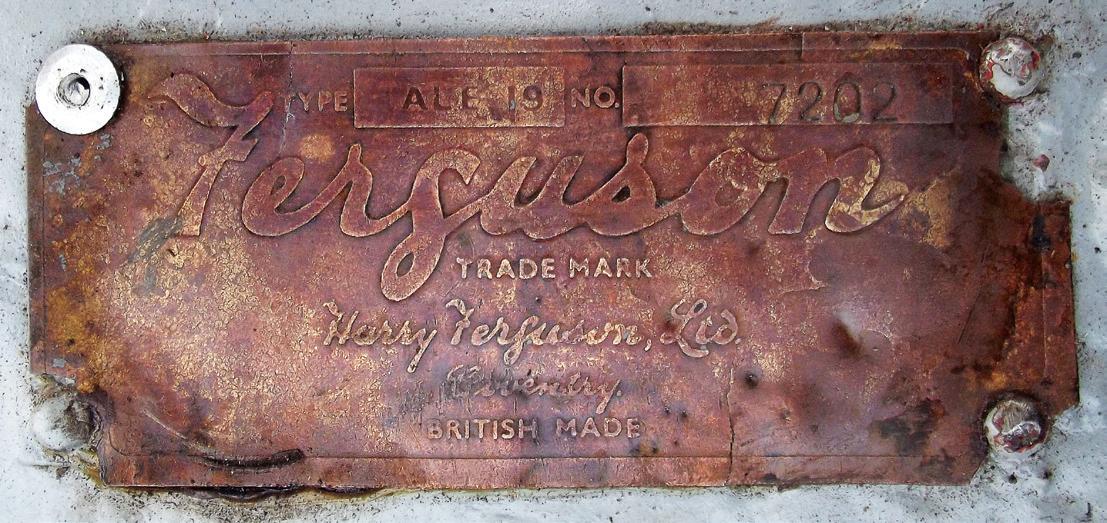
Ferguson proves its worth on the farm

Gwilym Moelogan Bach was a horseman, and prior to the arrival of the Ferguson tractor, all of the work on the farm was done by a pair of draught horses. Tractors had of course been on the scene here in the U.K. for many decades, but in North Wales many of the smaller scale farmers continued to farm using
Aled’s tractor, like all Ferguson tractors, was sold new with a Ferguson spanner (wrench). The larger end of the spanner fits the bigger bolts on the tractor like those on the wheels and axles, and the smaller end fits most of the rest of the bolts on the tractor and plough. Ferguson spanners vary in the sort of marks that are seen on them, and they are collectable items in their own right.

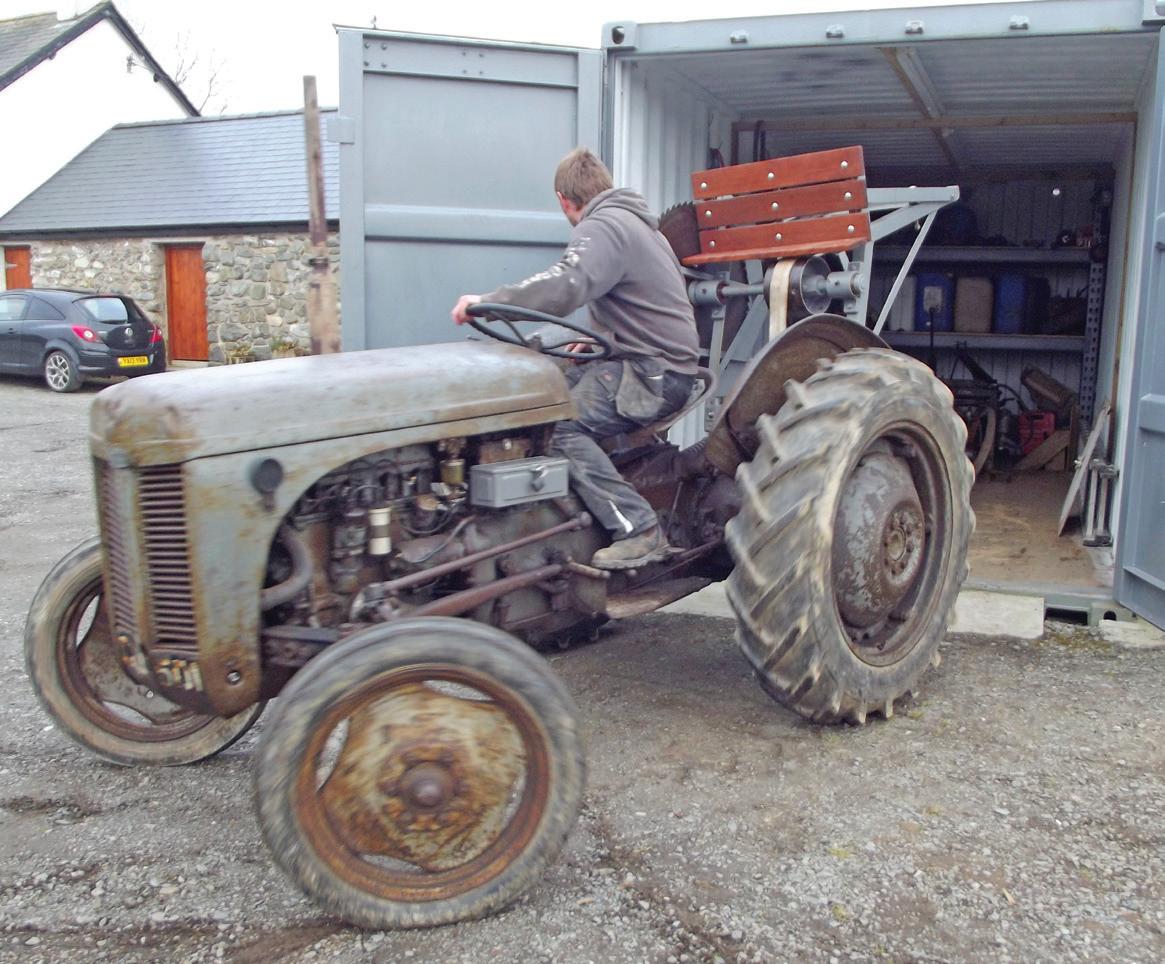

working horses right up into the 1950s. Given that Gwilym had never owned a tractor before he bought the Ferguson, one can imagine that this shiny new tractor must have caused a great deal of excitement it when it arrived on the farm. Aled’s great-uncle Elwyn remembers the day that the Ferguson arrived on the farm. “I was about 9 years old and it was Tuesday, February 14, so it was Valentine’s Day,” he recalls, “and Market Day in Llanrwst.”
Gwilym also bought a Ferguson plough and a mowing machine to accompany his new tractor, but for other work, the horses were still used, because even though mechanisation arrived on the farm the day that the Fergie rolled up the drive, the family kept their working horses for a number of years after buying the tractor. The horses remained on the farm as a
16 September 2023 Farm Collector
Aled stores the tractor inside a shipping container. This is one of the blessings of owning a small tractor.
back-up. After all, there was always a chance that these newfangled tractors could break down, and it made sense to have the reliable and familiar horses there as insurance. There were also a number of implements on the farm which were horsedrawn, and while some of these were converted to work behind a tractor, there was quite a crossover period where both horses and the tractor worked alongside each other.
After the horses left the farm, the family used the Ferguson for all of the farm work. At hay time, it was used for mowing and turning the hay. When it came to carrying the hay off the field, the tractor was fitted with a hay sweep, and the hay was carted into the barn where it was stacked loose using a pitch fork. The tractor would also be used to carry milk in churns in the transport box to the village, and it would make regular trips to the mill, carrying grain grown on the farm to be crushed and ground.
Even when larger tractors arrived on the farm, the old Fergie was still kept in work and it would be called on to row hay and for odd jobs where a smaller tractor was required. Aled’s great-uncle Elwyn recalls many happy memories of using the tractor, getting stuck here and there on the farm and driving it in the snow; “The narrow front tyres made it quite good in the snow!” he recalls. Elwyn also has memories of John Cae Coch, a local farmer and mechanic, who would come around every year to service the tractor.
Multiple strokes of luck
During the 1990s, there was something of a clear-up going on at the farm, and various bits of machinery were being sold, but luckily Aled’s great-uncle Elwyn wanted to make sure that the little tractor was preserved and kept in the family, so he took the Ferguson and stored it in his garage in the little market town of Llanrwst. Occasionally Elwyn would fire up the old tractor, to make sure it was alright, but it was largely left to slumber for over two decades.

Then, in 2016, Aled became the next custodian of the tractor and extremely proud he was to be the new owner of this treasured little family heirloom. Aled explains how glad he was that the tractor had never been re-painted, for although restoration has its place in the preservation of old tractors, it would have been a real shame if this particular tractor had been unsympathetically restored, because not only would the original painted-on registration have been lost, but the lovely patina, the paintwork worn smooth down by generations of Aled’s family, would have been lost too.
It seems there’s a lot of luck in this story. It was lucky that Aled’s grandfather, Brynle, had the tractor passed onto him by his stepfather, lucky that neither of these men decided to trade the tractor in for a newer model, and it was lucky that Aled’s great-uncle Elwyn decided to preserve the tractor safely in a shed for the next generation. It was also fortuitous that by the time Aled had grown into a young man he had become something of a tractor enthusiast, and although he doesn’t work as a farmer, he was keen to become the next custodian of the family tractor.
When Aled inherited the tractor, it was lurking under a pile of belongings in his great-uncle’s garage. When he unearthed the tractor, he thought he might encounter a few problems getting the Fergie going. After all, it had been standing for several years by that point, but in the end, all it took was some fresh fuel, a new battery, some air in the tyres and it was off! “I was really pleased that it fired up without any trouble,” Aled says. Since that day, Aled has become a father himself, so one day Aled’s son, Dyfan, will be the fifth generation of the family to own the Fergie.
Restored sawbench typical of Ferguson system
The little grey TE20 Ferguson tractor was a reliable, affordable, simple-to-use machine, but what made it stand head and shoulders above the other tractors that were available at the time was its innovative three-point linkage system. Harry Ferguson, the man behind the machine, was something of a genius when it came to business. He didn’t just design a tractor that everyone would want to own, he also built a range of implements to work with his tractor.
Many people who bought a new Ferguson tractor between the late 1940s and early 1950s also invested in several Ferguson implements. Ferguson’s range of implements was vast, and it included hedge cutters, plant sprayers, ploughs, harrows, drills, potato planters and diggers, a variety of loaders, rakes, hole borers, graders, earth scoops, fertiliser spreaders, muck spreaders, trailers and portable sawbenches
On the day I visited Aled, he had a Ferguson sawbench mounted on the tractor, and this too, he tells me, is something of a family heirloom.
“My great-grandfather from the other side of the family bought the sawbench when it was new,” he says, “but by the time I found it, it was in really poor condition and I had to replace the wood, the blade, the springs and some of the nuts and bolts, as almost everything had either rusted solid or rotted away.”
Once the sort of thing that could be found covered in rust, dumped in the corner of a field, Ferguson sawbenches are now attracting interest, and good examples can fetch several hundred pounds. Gone are the days when these implements were worth nothing but scrap money. Nowadays it is well worth restoring a Ferguson implement, particularly as many are still capable of a good day’s work. Aled has worked the sawbench to cut a few bags of logs, and is pleased to see it work as it should. FC
Josephine Roberts lives on an old-fashioned smallholding in Snowdonia, North Wales, and has a passion for all things vintage. Email her at josiewales2021@aol.com


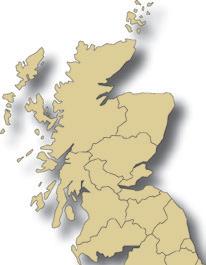



www.FarmCollector.com September 2023 17
Britain
Wales ✭
Great
Snowdonia North
Aled and his son Dyfan on the tractor. “He loves having a sit on the Fergie,” Aled says.
The captivating hist y of the int nal c busti engine and the eative individuals who br ght it to life.
Internal Fire is the captivating history of the internal combustion engine and the creative individuals who brought it to life. From gunpowder to diesel, the development of these early powerhouses has been recorded from all sides. The influences of new technologies, patents, and obtainable fuels, as well as a growing understanding of the very nature of heat itself, are all explored.
Internal Fire is not intended as a textbook, but as the wellresearched and readable chronicle of a mechanical servant that has greatly influenced life in the 20th century and beyond.

You will find in this comprehensive book:
• Gunpowder and Steam
• Air Engines Thermodynamics: Carnot Charts a Course
• Patents: Origin and Influence
• Internal-Combustion Engines: 1791-1813
• Searching and Perfecting: 1820-1860
• The Genesis of an Industry




• Otto and Langen
• Otto’s Four-Stroke CycleBrayton and His “Ready Motor”
• The Two-Stroke Cycle
• Gas and Gasoline Engines to 1900
• Oil Engines: An Interim Solution


• Rudolf Diesel: The End of the Beginning
Order today by calling 866-624-9388 or by visiting Store.FarmCollector.com.

This book is a reprint of an important publication that was first published by the Society of Automotive Engineers in 1989. It is an authoritative and entertaining account of the evolution of the very early internal combustion engine.
Item #11824 $39.95
Mention promo code MFCPANZ2. Price does not include shipping and handling.


FIRE AT THE FACTORY
Once common in wood frame factory buildings, fires were devastating to early manufacturing enterprises and surrounding properties
By Barry Tuller
Two young men, fresh out of business college, launch a company. It is a story full of promise – but for the Schmidt brothers – Bernard (“Ben”) and Franz – of Davenport, Iowa, it is also a story of tragedy. Ben Schmidt was 29 and his brother Franz just 22 when, in 1898, the two purchased a portion of the Voss Bros. Mfg. facility in Davenport and established Schmidt Bros. Co. Each brother had completed a course of study at Davenport (Iowa) Business College.
Four years later, in 1902, the Schmidt brothers joined forces with Sam White to found White Lily Washer Co. Although established to build washing machines, by 1904 the company was making gasoline engines, including one- and two-cylinder, water-cooled marine engines, and a 2hp vertical air-cooled engine for stationary applications.

In 1909, the Schmidt brothers sold their interests in White Lily Washer Co., but retained the engine business. For a couple of months, the engines were advertised by another of the Schmidt brothers’ businesses, Davenport Ice Chipping Machine Co., but by September 1909, the company name was changed to Schmidt Bros. Co. Engine Works.
The engine offered was the upright aircooled model (with some design modifications and uprated to 3hp), still advertised as the White Lily for a short time. Schmidt
Bros. soon added other engine offerings, including horizontal hopper-cooled engines in a variety of sizes and a smaller 1-1/2hp vertical air-cooled model specifically targeted for pump jack applications. The company also added a number of items for use on farms. The company advertised extensively and did a good business selling engines.
A singularly unlucky day
November 13, 1913, was a typical fall day at the engine factory. The weather was turning colder, with overnight temperatures dipping into the low 20s (F). On this particular Thursday, the temperature had risen into the 50s by early afternoon. Using the door in the extreme northeast corner of the factory, Plant Fireman Al Howard brought a horse-drawn wagon in to get a load of engines ready for shipment.
Along the driveway into the plant was an abandoned elevator shaft piled full of empty barrels. The fireman was the first to notice smoke coming from the elevator shaft. It was 1:40 p.m. He ran into the factory, yelling “Fire! The factory’s on fire!”
Plant Superintendent F.W. Bunch was in the shipping room when Howard rushed in shouting about the fire. He called out to several of the men to grab chemical fire extinguishers and a number of them hurried to the fire’s source. The extinguishers had little effect, and the fire quickly spread toward them. Bunch and Shipping Clerk August Kroeger ran out a door into the alley adjoining the plant on the east side. There they turned in the alarm to the fire department.
Howard also rushed into the fire with an extinguisher, to little avail. He then tried to get into the boiler room to gather his street clothes but couldn’t get in. He ducked out a door to the outside just as a fire wagon arrived. The firemen asked him to take the
 Collector
Collector
20 September 2023 Farm
This map of Davenport, Iowa, dates to 1888, just 10 years before Schmidt Bros. Co. was launched. Courtesy Library of Congress.
Bernard L. “Ben” Schmidt was president of Schmidt Bros. Co. and earlier served in the same capacity at White Lily Mfg. Co.
horses, which he did, leading them by alley to Third Street.


A few blocks away, Ben Schmidt was having lunch at home. He was interrupted when a neighbor rapped on his window, calling his attention to the clouds of smoke. “I believe it is your factory,” he said. Schmidt concurred and quickly rushed to the scene by auto.
Office workers rally to save records
On the second floor, directly above the boiler room, was the paint room, where quantities of varnish, gasoline and paint were stored. At the time of the fire, there was no one on the second floor. Head Painter Charley Koch reached the top of the stairs but could get no further. As Koch attempted to return to the tool room to retrieve his personal items, his overalls caught fire. Foreman Toolmaker H.T. Becke was also stopped by flames as he tried to get his coat. Bunch and Kroeger returned to the plant, but the fire had advanced so much they knew the factory was doomed and they fled for their lives.


The company’s administrative offices were housed in the southwest corner of the factory, where several girls worked as stenographers and clerks. Hearing of the fire in the building and seeing smoke, they leapt into action, seizing ledgers and throwing them into the company’s concrete vault. The eight girls and four men who worked in the office made a heroic effort to save the company’s important documents.

Just as the vault was about to be closed, 14-year-old office boy Chris Krogmann ran in, clutching a heavy volume containing shipping department records. He had gone to the eastern end of the factory to get them, with heavy smoke pouring throughout. The shipping records were added to the vault, it was locked and the clerks evacuated the building. Krogmann’s own belongings, his hat and coat, were consumed by the fire.
Neighboring homes and businesses threatened by nearby blaze
Outside the building, the fire drew a crowd. A stiff north wind pushed flames through the factory buildings. The heat from the blaze was quite intense, endangering houses across the street to the south of the factory. Families in houses south
and east of the plant were evacuated. The intense heat badly scorched the houses and many windows were broken. The Fuhs Blue Print Paper Co. just east of the engine factory also was destroyed by the fire.

All companies of the Davenport Fire Department respond-

www.FarmCollector.com September 2023 21
The Schmidt Bros. Co. Engine Works in Davenport, Iowa.
Cover of a 3hp Schmidt upright air-cooled engine catalog.
ed to the fire. The city had seven hose and two ladder companies, with 20 horses and nearly 40 paid firemen. The closest company to the plant was Hose Co. #7 on Fourth Street, less than a block away. The time of the fire call delayed the response, as some firefighters were on their lunch break. Several wagons arrived with just two men, one to stand at the hydrant and the other to drive. The rest of the men soon arrived by foot.
During the fire, explosions scattered flaming debris through surrounding neighborhoods. Claiming there were no large quantities of gasoline inside, employees attributed the explosions to oil containers.
It quickly was apparent to the firefighters that the factory was beyond saving and efforts were turned to saving surrounding houses. Water was directed onto several. During the height of the blaze, telephone and electric wires in front of the plant fell onto the trolley wires. Power had been cut off shortly prior, averting more serious issues. Trolley service was interrupted for several hours during the fire.
At 2:35 p.m., only an hour after it was reported, the fire was declared under control. Firemen pulled down the building’s west wall shortly after. Firemen remained on the scene until 8 p.m. to monitor the fire.
A small blaze reignited in the early morning; Company #7 returned to put it down.
The next morning, the only thing still standing at the site was the company’s concrete vault. The entire structure had burned to the ground. Schmidt Bros. Co. Engine Works was no more.
Entwined businesses expand rapidly
Various manufacturers operated at the site before the Schmidts arrived on the scene. As early as 1877, W.H. Voss built washing machines in a small building next to his home at 1330 W. Third Street. As the business grew, his brothers joined him, creating Voss Bros. Mfg. Co. The adjacent property at 1332-1342 W. Third Street was acquired and additional factory buildings were built as operations expanded into manufacture of stairs, office and store fixtures.
In 1898, the Schmidt brothers bought the western portion of the factory complex from Voss and began producing doors, windows and blinds, complementing the Voss offering.
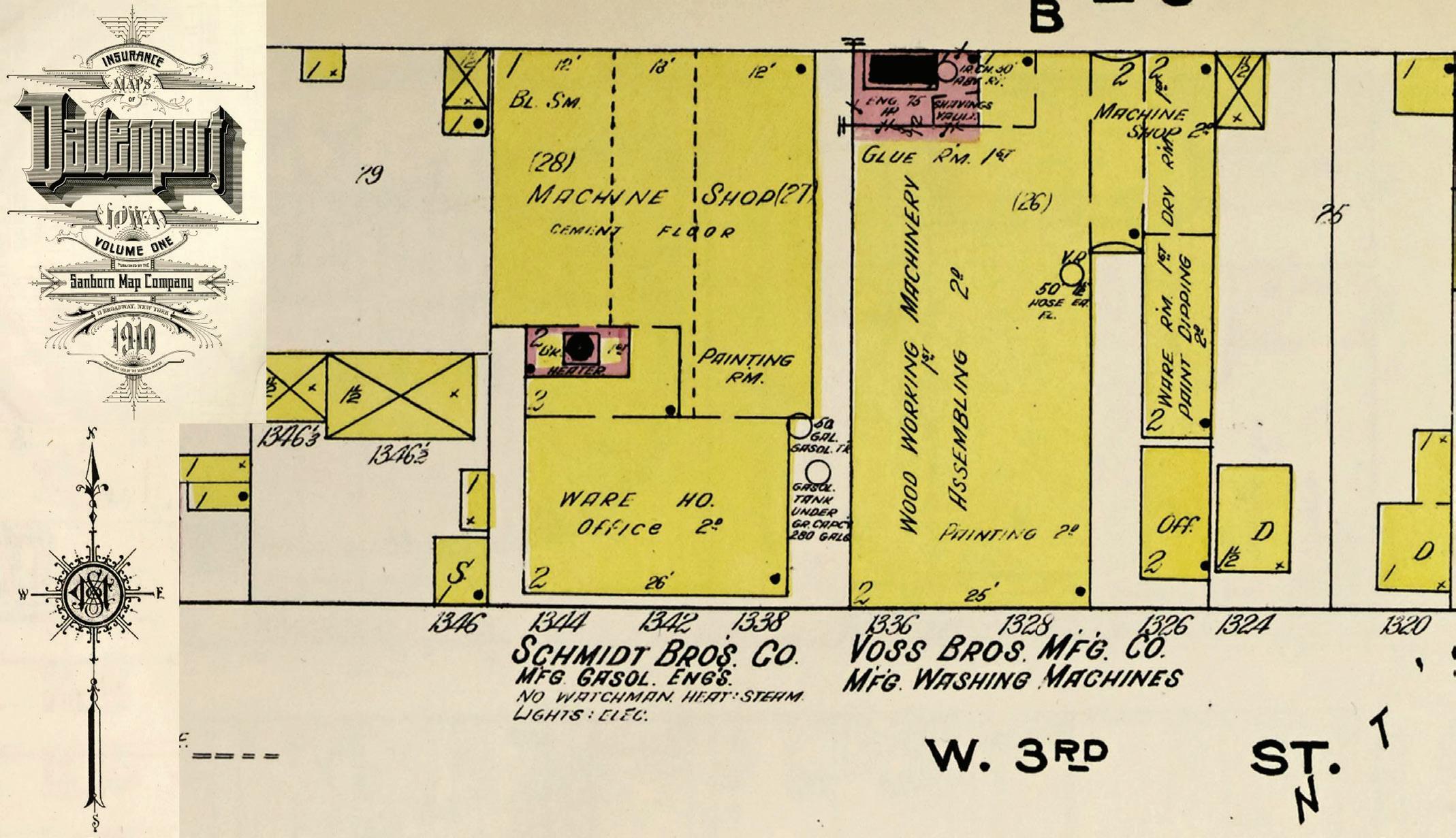
Schmidt Bros. became Davenport Ice Chipping Machine Co. in 1903, and ice chipping machine manufacture was added.
Over the next several years, Voss made further expansions to the eastern portion of the factory. With purchase of the engine business from White Lily, the Schmidt brothers also enlarged the western factory, doubling
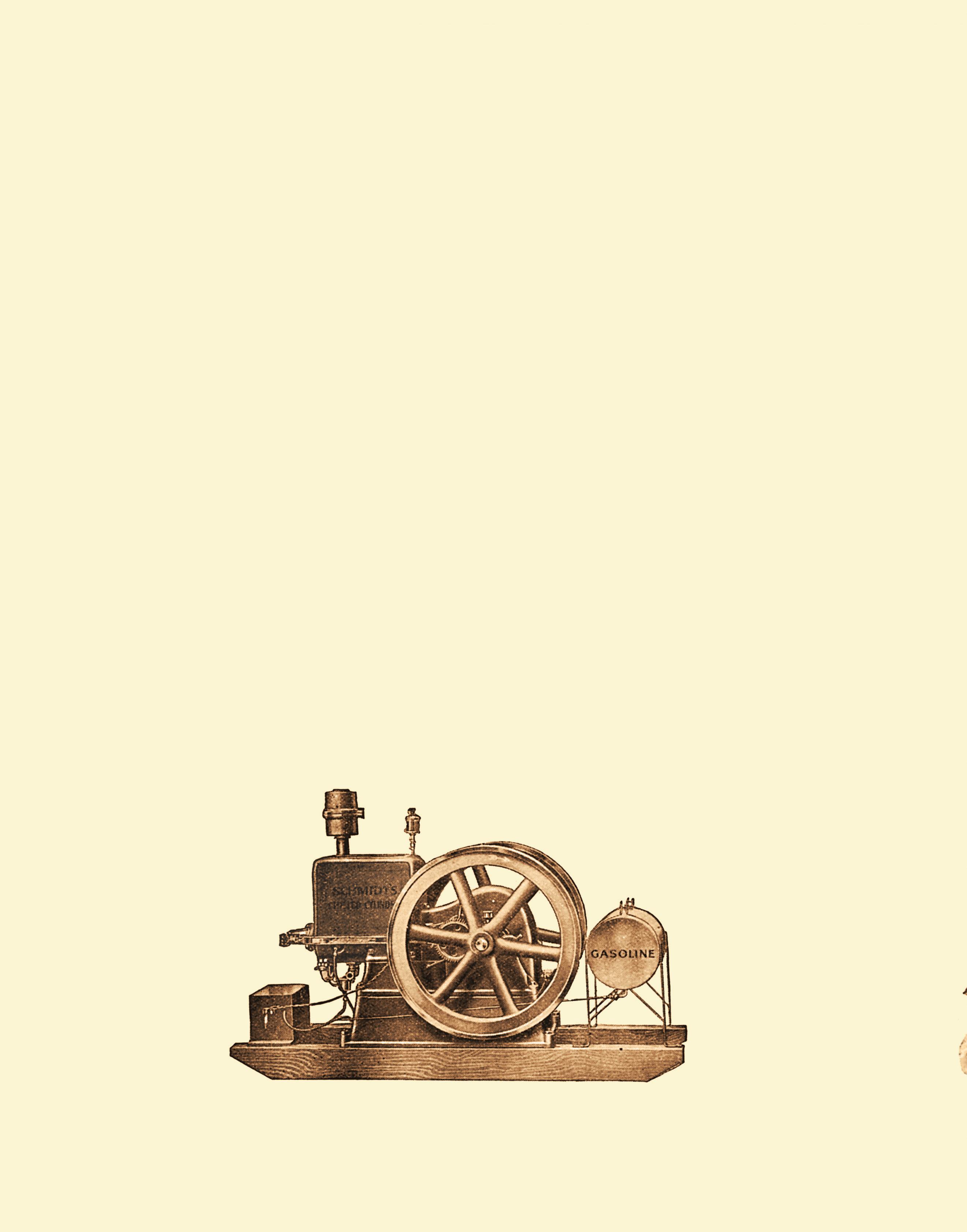
22 September 2023 Farm Collector
Offered in several sizes, Schmidt horizontal hopper-cooled engines were introduced by 1912.
This Sanborn Map Co. fire insurance map dating to 1910 offered the most current localized fire protection information available at the time of the 1913 Schmidt fire. Schmidt Bros. took over the Voss Bros. portion of the factory late in 1910. The fire originated near the boiler room in the northeast portion of the plant.
it in size with a large single-story addition in 1909. In 1910, Voss built a new factory on W. Second Street. After that, Schmidt Bros. expanded to take over the eastern portion of the Voss factory at Third Street.
A fateful business decision


Wood frame construction was used for all of the factory buildings. The boiler and engine room in the eastern side of the factory was surrounded by brick walls, and the boiler room in the western side used wood and brick construction for walls. The boilers were used for heating and were in operation in November. Electricity powered the plant’s lights and various motors.
The day after the fire, Schmidt Bros. stockholders met at the offices of a nearby law firm, but no decision was made as to rebuilding. The company had $95,250 insurance in force. Because of its high cost, additional coverage totaling $18,000 had been cancelled on November 1. While the company awaited an insurance settlement, the law office served as its temporary headquarters.
On December 29, Schmidt Bros. leaders dissolved the company and dispersed the assets to the stockholders. Ads for the sale of salvageable remains from the factory – machinery, bricks, white pine joists, tools and a boiler – appeared in local newspapers during the next month. Charred wood was given away for the hauling, and the property was put up for sale. The filing for official dissolution of the company finally came on November 25, 1914. All assets had been disposed of and all liabilities resolved. Just over $70,000 in stock remained outstanding, funds that stockholders would not recover.
Advances in fire protection come too late for Schmidt Bros.
The fire at the Schmidt Bros. factory was the worst such incident in Davenport in all of 1913. A total of 365 fires were reported in Davenport that year, with losses totaling nearly $262,000. The Schmidt fire alone accounted for over half of that figure, its losses totaling $134,500, with more than $37,000 of that uninsured.
The business of fire insurance was in an evolutionary phase in the second half of the 19th century. During that time, the insurance industry began to use more systematic and increasingly accurate methods of assessing risk and calculating insurance costs.

Fire insurance maps were a key tool used in defining such risks. The maps detailed a city’s fire protection infrastructure, including fire hydrants, water mains and fire alarm boxes. By the beginning of the 20th century, Sanborn Map Co. dominated the mapping industry, eventually providing maps for more than 20,000 cities and towns in the U.S. Updated regularly, the maps were also useful in code enforcement and compliance. Over time, building practices designed to improve fire prevention helped drive down risk and occurrence.
Rising from the ashes
In a short newspaper article in mid-January 1914, formation of a new company – B.L. Schmidt Co. – was announced. A factory at 417 W. Fourth Street had been secured to manufacture ice chipping machines. Bernard L. Schmidt was named president of the new firm (Franz L. Schmidt died in August 1912).
The new company continued in support of the previous engine business by offering replacement parts, but no complete engines were produced. A new product – a cylindergrinding machine – was developed under the tradename of “Micro Machine.” In 1922, the company was renamed Micro Machine Co. Ice chipping machines remained in the company’s line into the 1920s. Ben Schmidt died in 1937.

Today, the former site of the Schmidt Bros. Co. Engine Works factory on West Third Street is occupied by a couple of small businesses, a clothing store and a transmission shop. FC
Barry Tuller is a collector of gas engines and related beltdriven equipment, literature and advertising. He enjoys learning about engines and researching the history of the people and companies that made them. Email him at btengines@gmail.com
www.FarmCollector.com September 2023 23
Schmidt Bros. Co. engines were guaranteed for five years, as noted in this certificate, complete with Bernard L. Schmidt’s signature.
Schmidt 1-1/2hp engine with auxiliary jack shaft working three machines at once. ✭
Iowa
Davenport
STEAMING TOBACCO BEDS
Iwas born in Adams, Tennessee, in Robertson County, which is the heart of the tobacco growing country, both air-cured and dark-fired. There are large tobacco markets located at Springfield and Clarksville, Tennessee, and at Hopkinsville, Kentucky, all within a radius of 30 miles.
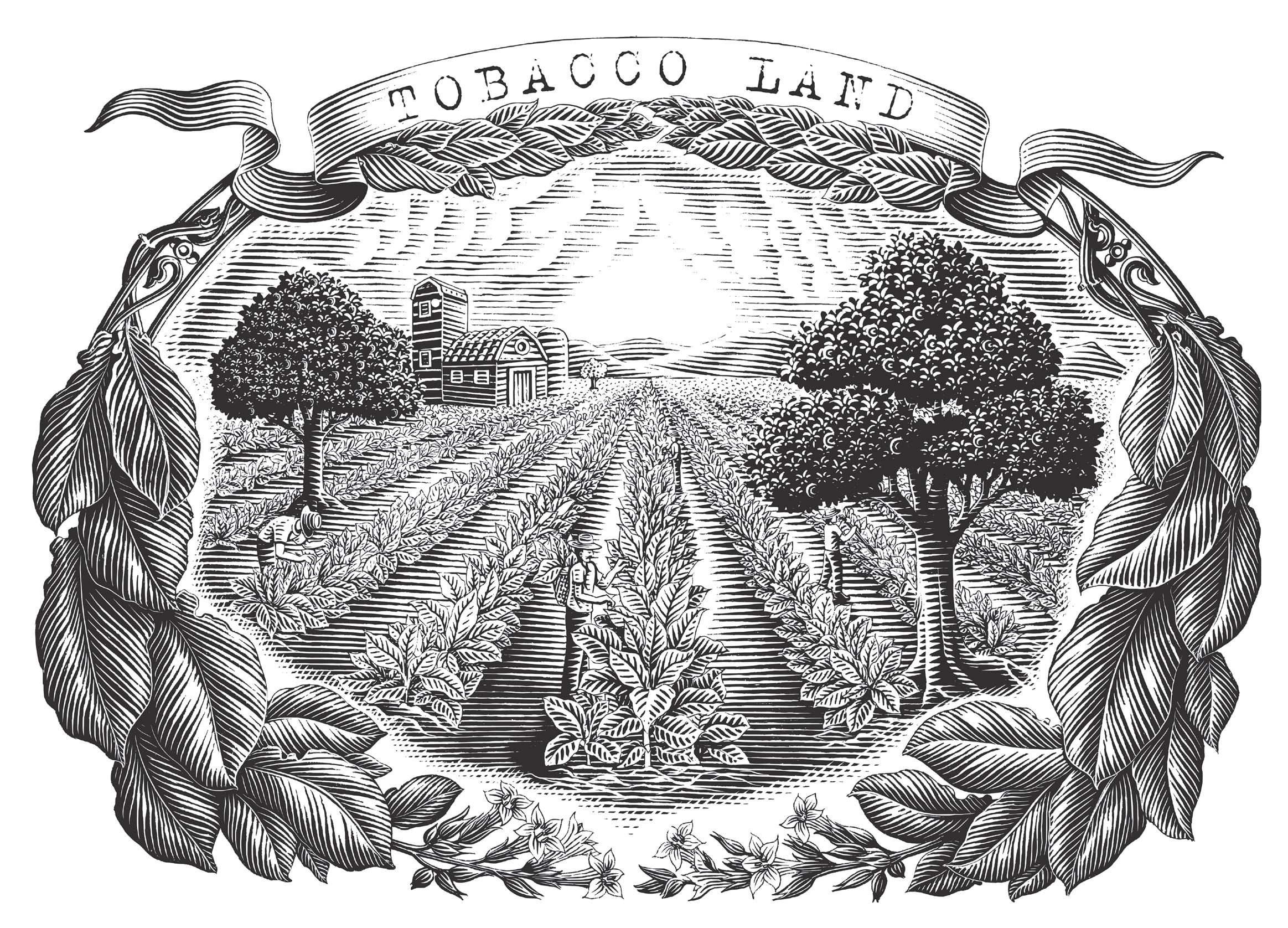
Tobacco plant beds were either burned or steamed. When one was to be burned, the ground was cleared off. Brush and small logs were then cut and piled up several feet high and burned to kill the weed seeds and insects.
There was also a device called a burner. It had a set of wheels on one end and handles on the other. It was about 8 feet long and 3 feet wide, and consisted of a pan-like piece of metal with an opening on the end, where the wheels were located, for the smoke to come out. A fire was built under it and the loose dirt was shoveled up on the burner and cooked and then shoveled off the burner and put back on the plant bed.
By Billy M. Byrd
In steaming, a portable boiler – or most of the time, a traction engine – was used. A rectangular metal box usually
Collector
24 September 2023 Farm
Using a grueling process, tobacco growers once relied on steam engines to kill weed seeds and insects
This idealized vision of a tobacco field does not reflect the time and toil exerted to create a sterilized planting bed.
This 20-70 Nichols & Shepard steam engine was used to steam tobacco beds in Wisconsin for more than 50 years. “It was used on a sawmill in 1945 when my father purchased it for $200,” recalled Jim Koltes (since deceased), De Forest, Wis. “The trucking to Waunakee, Wis., was $250. He used it to steam tobacco beds for 50 years and my brothers and I also ran it.”

called a pan, 9 by 12 feet and 6 inches deep, was used. The ground was prepared by plowing or was forked up.
The pan was put on the ground. Dirt was packed all around it to make it steam-tight. Then steam was piped to it from the engine, usually with a 1-inch pipe. Of course, the higher the steam pressure used, the better the ground was prepared. Usually, 150 pounds pressure was used.
A fellow I knew always bragged about the high pressure he had: 175 pounds. He was steaming with an old KeckGonnerman engine. I happened to see it one time when it wasn’t under steam and the steam gauge hand was sitting on 50 pounds.
The best way to prepare a plant bed
The water in the boiler was kept as low as was consistent with safety. To make the steam hotter and drier, a pan was usually steamed from 20 to 30 minutes, depending on the farmer who was having the steaming done. Some people steamed 25 minutes, allowing 5 minutes to move the pan and get set again. That would give you two pans an hour. A pan had three metal loops on each side and two on each end.
Back in the early days, the pan had to be picked up by laborers and moved. Large sticks of wood, something like a wagon standard, were cut. They were stuck in the loops and it took six strong people to pick it up and pack it. In later years, the pans were put on wheels with arms. A winch and cable operated by an electric motor and battery picked them up. Others put cables in the loops with a ring in the middle, had a boom made and picked up the pan with a 3-pt. hitch tractor.
The last plant bed I steamed, in 1978, took just three of us. I took care of the engine and moved the pipe and the other two took care of the tractor and pan. The farmer had
to furnish all the labor, coal and water for the engine, and had to feed the engineer at the noon meal.
Steaming was the best way to prepare a plant bed. It killed all the weeds, insects and conditioned the ground. As soon as the pan was taken off and the steam cleared, the plant bed could be sown and the canvas put on to keep weed seeds from blowing in so you would have plenty of strong, healthy plants to set.
Chemicals are now being used as it is hard to get farm labor, and where coal used to sell for $3 a ton, now it’s $25 a ton, plus the fact that there are not too many steam engines left.
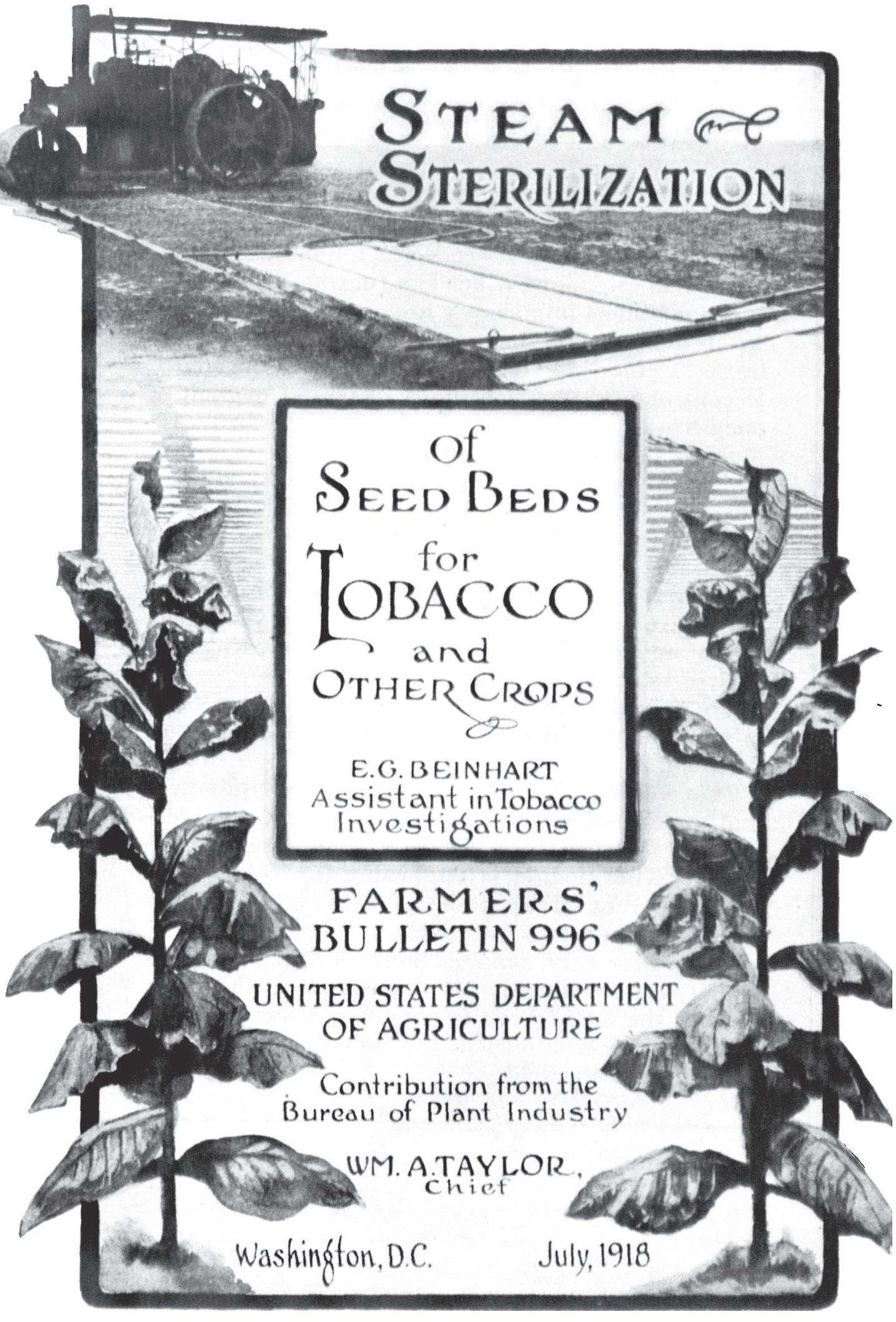
Steaming his way back home
Back in the 1930s in Robertson County, custom steaming was done by Sam Duff with a 20-60hp Case, Luster Strange with 19hp and 22hp Keck-Gonnermans, and Connell McEwing, who ran Mr. Q. Flynn’s 26hp Advance compound. Tobe Overby had a 16hp Advance that he had graded roads with.
www.FarmCollector.com September 2023 25
This Farmers’ Bulletin outlining the process of steaming and sterilizing tobacco beds was issued by the U.S. Department of Agriculture in July 1918.
“Mr. Tobe was one of the lowest water men I’ve ever seen. All he wanted in the water glass was a little moisture. He guaranteed that if any weeds were in the plant bed, there was no charge for the steaming.”
The drivers were worn slick, plus a big part of the left drive wheel had been broken on a rock. The engine going across a field reminded you of a person with one leg shorter than the other.
Mr. Tobe was one of the lowest water men I’ve ever seen. All he wanted in the water glass was a little moisture. He guaranteed that if any weeds were in the plant bed, there was no charge for the steaming. Charley Browning had a 20hp Advance that he used for steaming in the winter and put on a sawmill in the summer.
Dick Mitchell had a 14-mile run. He would go to the far end and steam his way back home. He had a 20hp double-cylinder Nichols & Shepard engine with a big water wagon, pan wagon and a Buick automobile tied on behind. Going down the road, that was a sight to see!
I was helping him one time and a Tennessee state trooper told him to get the engine off U.S. Highway 41, as the engine still had the steel cleats on the wheels. Mr. Mitchell told him that was the only way he could get to where he was going, and
if he couldn’t run on that road, they would have to build him one alongside for him to run on. I knew we were going to get a free ride, but the cop left us alone.
Another part of lost Americana
Among the farmers who steamed for themselves were the Hollingsworth brothers, Rosson brothers, Bill Simmons, Homer Burney, John R. Fletcher, Charles Corbin, George Washington and Felix Ewing, the last two being brothers-in-law and great rivals who tried to outdo each other. Unbeknownst to each other, they both bought steam engines. One was a 25hp Nichols & Shepard, and the other was a 35hp Nichols & Shepard. Both came in on the same railroad flatcar.
The fellow who bought the 25hp engine wouldn’t unload it, but sent it back to the factory and exchanged it for a 35hp engine that ended its days pulling a sawmill before being scrapped in World War II. Steaming plant beds was hard work. It was hard on an engine, as there was no “let up.”

26 September 2023 Farm Collector
Moving the steam pan is a two-person job, as shown here on the Marcus Martin farm, Denver, Penn., in 2019. Lancaster Farming
photo by Art Petrosemolo.
“Back in the early days, the pan had to be picked up by laborers and moved. Large sticks of wood, something like a wagon standard, were cut. They were stuck in the loops and it took six strong people to pick it up and pack it.”
Steaming started around Nov. 1 and continued until the 10th of April. Usually, the weather was cold. The engineer had to get up early to have steam by daylight. If it got too cold and wet and the engine was sitting miles away, he would have to bank the fire for several days or else drain it to keep the boiler from freezing, and then fill it up with a bucket or tank pump, which was slow, tedious work.
But after all, it was fascinating work, each farmer depending on the other for help, like as in threshing wheat. While steaming, eggs, potatoes and the like were put under the pan and cooked and that tasted good on a cold winter day. Steaming plant beds went out in the 1970s. It is another part of Americana that is gone; something the younger folk will never be able to see. FC
Billy M. Byrd, who lived in Madisonville, Kentucky, until his death in 2001, was a retired railroad engineer with the Tennessee Valley Railroad Museum, and a founder of the Tennessee-Kentucky Steam Thresherman’s Show in Adams, Tennessee. This article first appeared in Iron Man Album in 1983.



John H.L. Johnson, Springfield, Tenn., was awarded U.S. patent No. 1,021,530 for design of this improved steam pan on March 26, 1912. Johnson was an employee of the Springfield Plant-Bed Steaming Co. The notations at top and left read “unsteamed soil”; those at right and bottom right read “steamed soil.”
“If desired, the tobacco bed may be covered with manure or fertilizer prior to placing the steaming hood in position on the bed,” the patent description explained, “and the seeds of clover, grass and weeds in the manure will be effectively destroyed. The steam, however, does not destroy the fertilizing qualities in the manure in any way.”


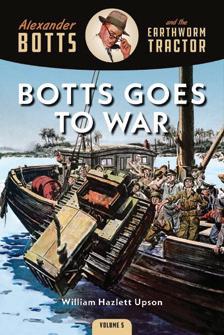



A gift card to the Farm Collector Store is the ideal gift for the individual dedicated to the preservation of vintage farm equipment. You will receive a gift card code by email that your recipient can use at checkout. Print it out to wrap and share or present however you choose!
$10 · $25 · $50 · $100 · Order today by calling 1-800-624-9388, or visiting store.farmcollector.com/products/farm-collector-gift-card







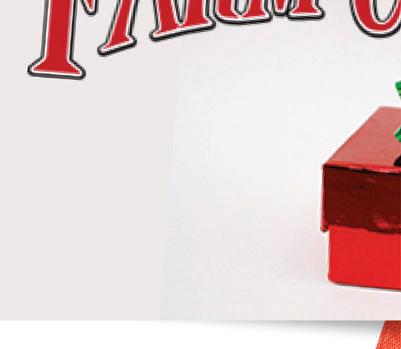


















www.FarmCollector.com September 2023 27
Take
Guesswork Out of Gift-Giving!
Want with a
–
FCM GIFT CARD HalfPage.indd 1 7/11/23 10:46 AM
the
Your Friends and Family Will Love Choosing Exactly What They
Gift Card
Plus, There’s No Expiration Date!
HOW DID THEY DO IT?

OILING EARLY WINDMILLS WAS NOT FOR THE FAINT OF HEART!
By Jim Lacey
Inasmuch as there were at one time a couple hundred windmill makers in the U.S., I’m only going to talk about a few of the more common ones, their similarities and differences.

Windmills have been around for a very long time, but self-oiling units are, in the whole scheme of things, fairly recent arrivals on the scene. For a long time, oiling was accomplished by owners or employees climbing up the tower and physically filling either the oil reservoirs (consisting of a cast
iron area above the bearing in question, filled with cotton waste. Oil was poured onto the cotton waste, the theory being that oil would slowly run down and keep the babbitt at least slightly lubricated) or the grease cups (which were filled with “hard” oil, the cap replaced and then screwing the
plunger down a little. This would be repeated until the cups were empty and then the process was begun again).
One company went so far as to have a brass rod from the hard oil cup (with special material in it) riding on a shaft. In theory, the brass rod would get warm and grease would ooze out into the bearing area. Surely this would work well at 20 or 30 degrees below zero, yes?
Fresh oil seems to be a rarity
Fast-forward a few years: Dempster Mill & Mfg. built its No. 11 mill, which employed an oil “scoop” to bring oil up and out to the front bearings. Later came the No. 15, another direct-stroke mill, which self-oiled quite well. Moving lubricant was accomplished via small trays that brought oil up and
28 September 2023 Farm Collector
Before the advent of self-oiling systems, oiling the windmill was a necessary but spine-tingling chore. Here, a selection of windmills typical of the offering available a century ago from the Emick collection, Lamar, Colo.
dumped it in higher places.
Following these direct-stroke mills, Dempster came out with its No. 12, bragging on the tail “Annu oiled.” In reality, from what I have seen when taking down windmills over the years, very few saw fresh oil but still managed to keep pumping with very little wear. Oil used in mills is a very light oil, as well as being non-detergent, so as not to carry anything in suspension but rather to leave dust and debris in the bottom of the motor bowl.
As time went on, Dempster employed (even on early No. 15 mills) a pair of Timken tapered bearings with a spring pre-load on the fan shaft. Our No. 15’s bearings are still bright and tight, as is the rest of the mechanism, a tribute to oiling system shown in the photos accompanying this article.
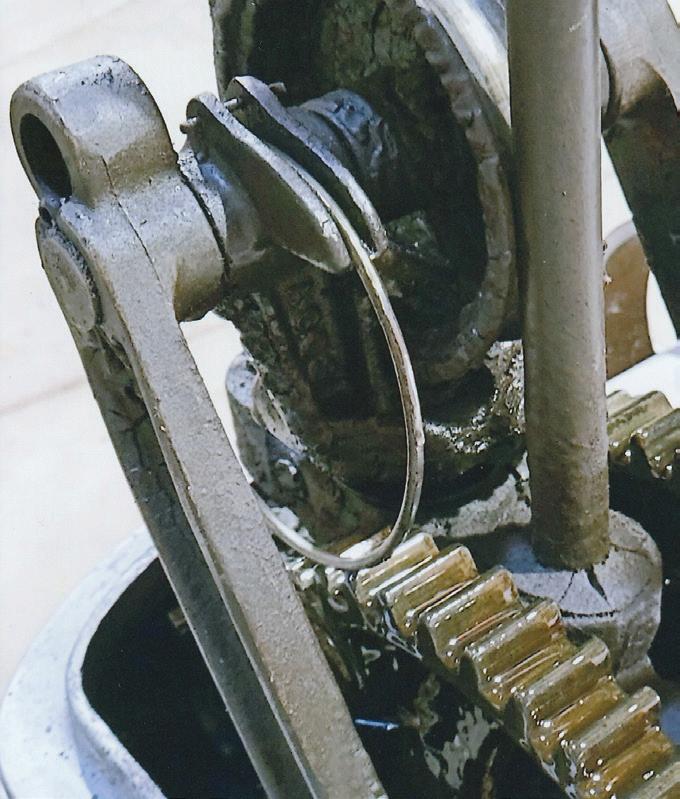
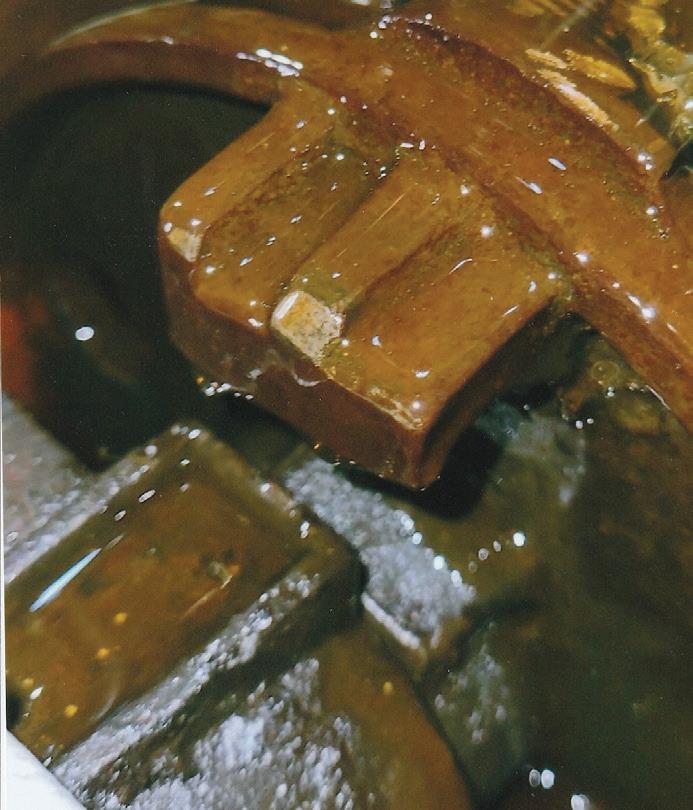
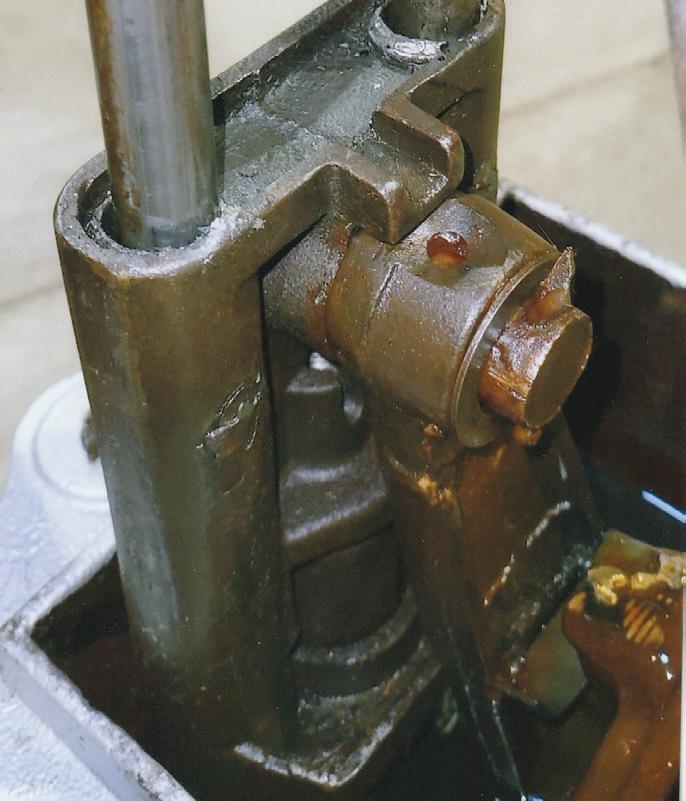
Some worked better than others
“Andrew,” a mill produced by Duplex Mfg. Co., is nicely engineered. The fan shaft gear drives an internal gear inside the pumping mechanism, thus two teeth contact the gear as opposed to external gears doing the job. Much of the oiling here is done via a scraper atop a large internal gear that simply scrapes copious amounts of oil off onto places where it is needed. Another interesting feature of this mill is the fact that the fan can be built up on the ground, taken up and secured to the fan shaft with three bolts.
Going further, the first back-geared, internally oiled Aermotor, the No. 502, did not fare so well. A spring wire arrangement was, in theory, supposed to flick oil to the upper works – which it didn’t. Most of these were called back. Luckily, we found one atop a 100-ft. tower, brought it home and had it restored at Dakota Windmill in Hurley, South Dakota. This mill only lasted a year, with the 602 coming out in 1916 with a simple oiler, as seen on pictures of the 702 accompanying this article.


Woodmanse, out of Freeport, Illinois, employed a toothed oil-pickup to bring oil to the upper works where it would flow out and catch pivoting points as shown.


The Beatty Pumper, a mill from Canada, looks similar to the Aermotor but is quite different when viewed up close. The upper works are oiled via a spring, wrapped around one pitman arm, which worked successfully. The mill itself is not fancy, the arms supporting the fan sections are simply pieces of gas pipe, screwed into the windwheel hub, bent and drilled on end to accept the outer blade supports, with a small bracket welded
on to catch inner support. Again, not fancy, but functional.
Self-oiling was a great leap forward for windmills, eliminating climbs on slippery, ice-covered towers in winter, as well as ending weekly greasing, which no one did anyway! So it goes. FC
South Dakota
Dell Rapids
Jim and Joan Lacey operate Little Village Farm, a museum of farm collectibles housed in 10 buildings at their home near Dell Rapids, S.D.
www.FarmCollector.com September 2023 29
✭
In a simple, smart fix, the oiling ring on the No. 702 Aermotor touches the gear, rotates and carries oil to the upper works.
Oil being delivered to the Timken bearings on the fan shaft of a No. 15 Dempster windmill. This photo also shows the oil scoop used to deliver oil to the connecting rod and from there, up the side shafts to oil the upper end of the connecting rod.
The Aermotor No. 702, showing the oil being forced out to babbitt bearings on the fan shaft and its return to the bowl via a galley in the casting.
The upward end of the connecting rod on the No. 15 Dempster showing the oil’s travel path.
The oil catcher on the backside of the connecting rod delivers oil to the pumping mechanism and the top of the connecting rod.
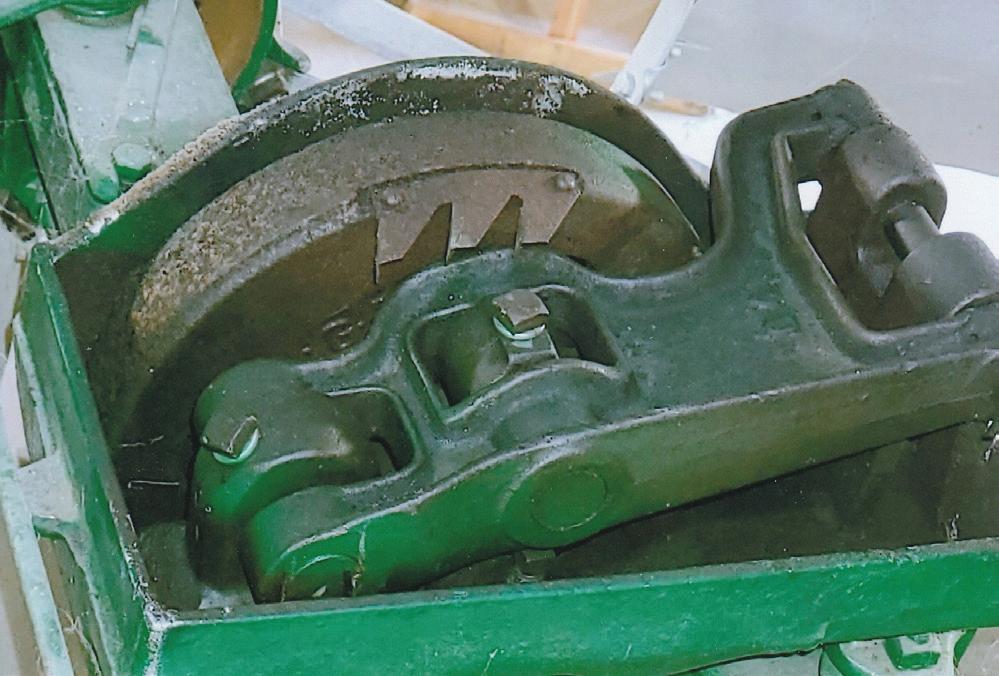
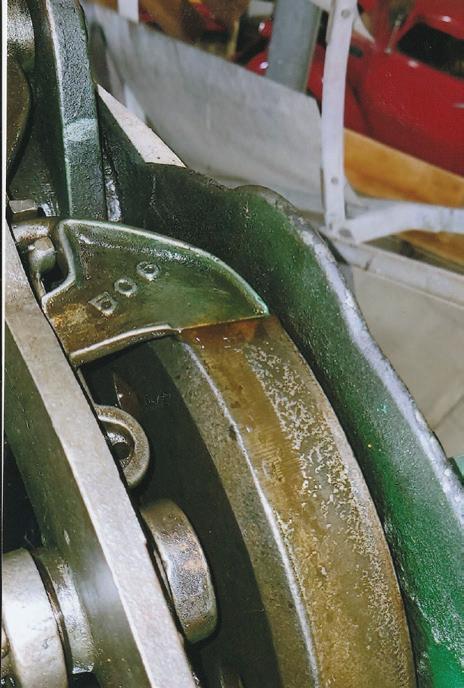



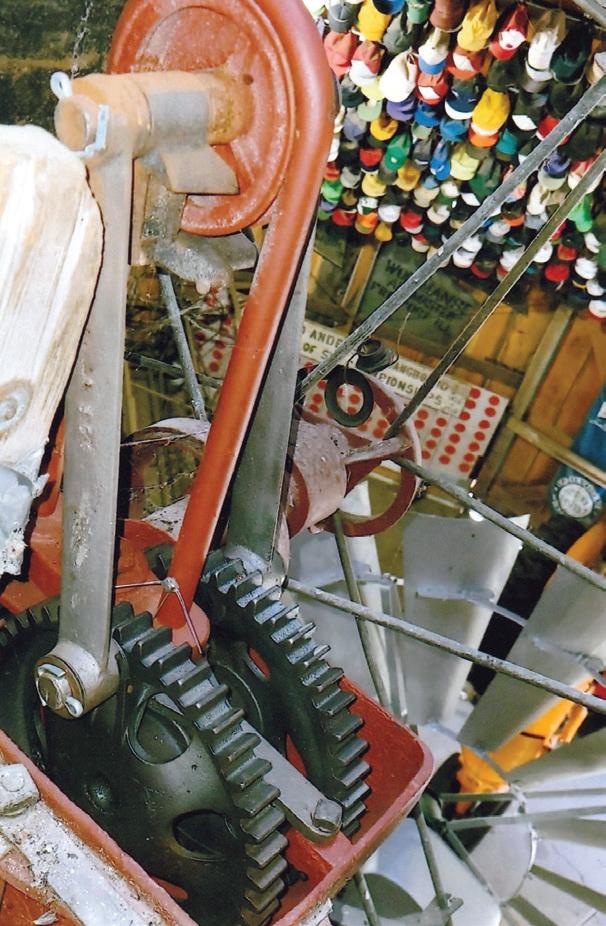


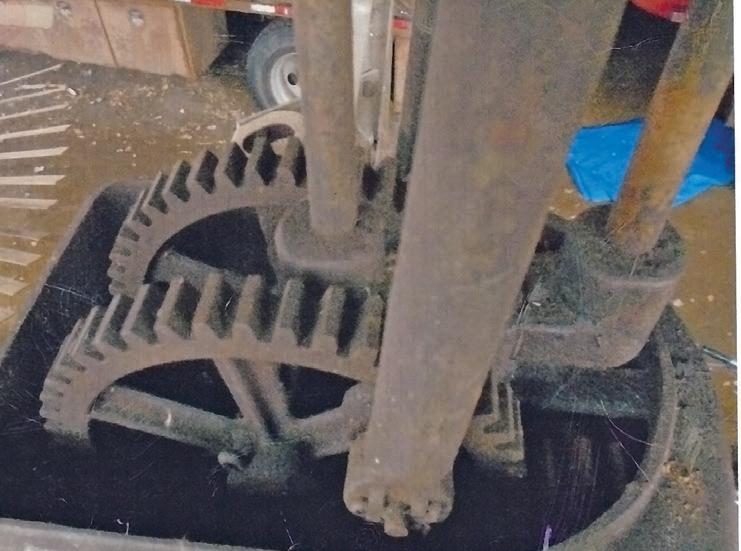
30 September 2023 Farm Collector
The oiling system for the No. 502 Aermotor as designed was not a success.
The Woodmanse’s oil carrier on the internal gear oils all you can see in the photo with oil dripping off onto the casting after each revolution.
The oiling scoop on the Andrew mill, taking oil to places needed.
Two windmill motors set up to show the oiling systems and screened to keep kids’ fingers out!
The upper works of the No. 502 Aermotor. It was a long way to flick oil.
Gas pipes – bent, flattened and drilled for outside blade support – on the Beatty.
Here, a gas pipe simply screwed into the fan hub, supports fan sections on the Beatty Pumper.
The gearing on the Beatty Pumper, complete with a spring around the connecting rod on the back.
“Chicken Soup for the Soil® improves your soil by feeding the microbes and supplying all the nutrients most fertilizers neglect.”

Grow higher quality fruits & vegetables with more color, better taste, less bug infestations & disease.


Contains all the elements in the periodic table (sea nutrients, amino acids, humic, fulvic, and other herbal extracts).

All natural, toxin free, & bioavailable.
Non-leaching formula / nutrients accumulate over time.



Perfect for gardeners, growers, and farmers. humic, ranchers and farmers.


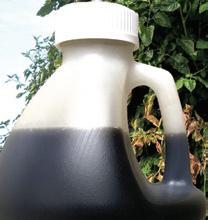


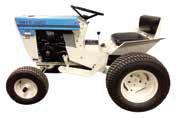







Visit Us Online or Give Us Call We
YesterdaysTractors.com
have the best
800-853-2651 YesterdaysTractors.com Antique Parts In Stock For All Makes & Models! MOBILE 952-237-2207 OFFICE 612-940-2800 ADDRESS: 2384 Hunter Dr. Chanhassen, MN 55317 EMAIL: toddfriedrich@gmail.com WEBSITE: friedrichtire.com FRIEDRICH TIRE & RIM All your classic tires and wheels- whitewall, motorcycle, military etc... We have all your Garden Tractor Tires GET YOUR ANTIQUE TRACTOR FRONT & REAR TIRES HERE! 3 RIB & OLD STYLE FRONT TIRES 8”, 12”, 15”, 16”, 18”, 28” available REAR TIRES 24”, 28”, 30”, 32”, 34”, 36”, 38” many more sizes are available. *Makes up to 128 gallons with 1 tablespoon per gallon. Full Money Back Guarantee! *Commercial quantities availableWorks On Pastures 888-394-4454 www.DrJimZ.com Best Natural Fertilizer On
carry parts for all makes and models including Allis-Chalmers, Case, Case IH, Ford, International, John Deere, Kubota, Massey Ferguson, Minneapolis-Moline, New Holland, Oliver, White and many more.
We
community forum for antique tractor discussions including repair tips, history of tractors and locating hard-to-find parts
Earth
64oz Jug 3495 +Free Shipping!!
Mike Thorne is a name known to many, many tractor enthusiasts, particularly those whose primary interest is in Ferguson and Massey Ferguson models, as Mike has assembled an almost unrivaled collection of the tractors of both marques. But before he decided to go down that route, he had been collecting tractors since the 1980s – machines of many makes, models, and vintages, some in good order, others wanting substantial work.
In his time, he has acquired no less than 100 examples, and in this book, he takes the reader through them all, with individual entries on each one –though he admits there are some that he has forgotten. So the reader will be treated to observations on a wide range of tractors, large or small, rare or common, good or less good, with information on where he bought them, problems, repair











and restoration, and the machines’ characteristics and specifications. Mike designed and constructed two fascinating buildings to house his collection at Coldridge in deepest midDevon, and these form his museum, which can be visited by appointment and offers enthusiasts a real treat.
Item #12010 $60.00





Order today by calling 866-624-9388 or by visiting Store.FarmCollector.com. Mention promo code MFCPANZ2. Price does not include shipping and handling. The Tractors in My
tells one man’s
a lifetime of rescuing
tractors and collecting live ones.
Life
story of half
halfdead
With over 180 pictures in color and black and white.
FC TractorsInMyLife FULLPAGE.indd 1 7/11/23 9:47 AM
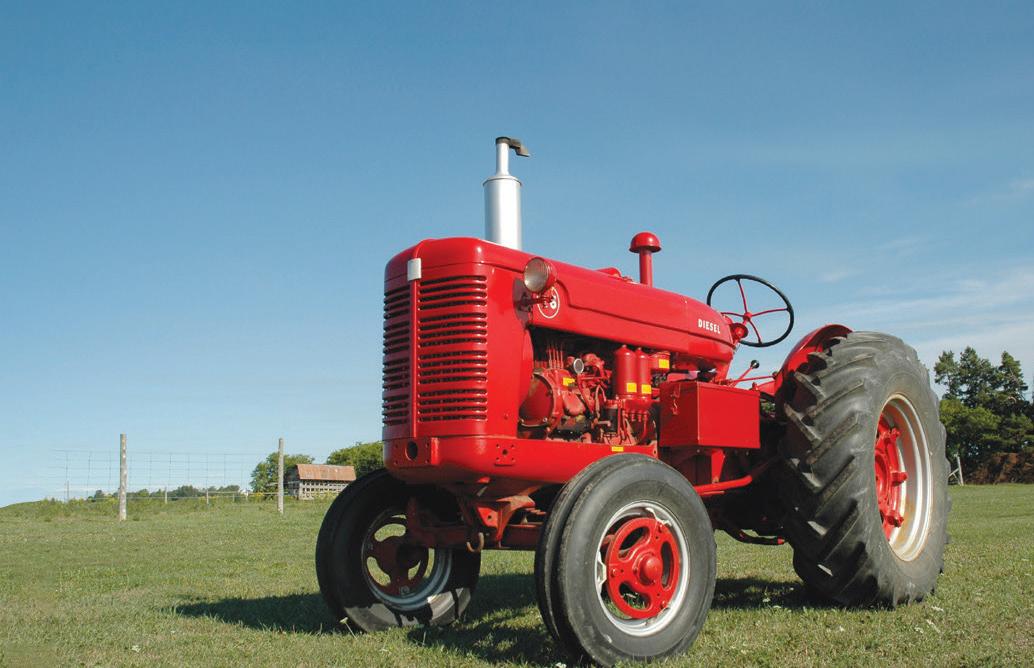


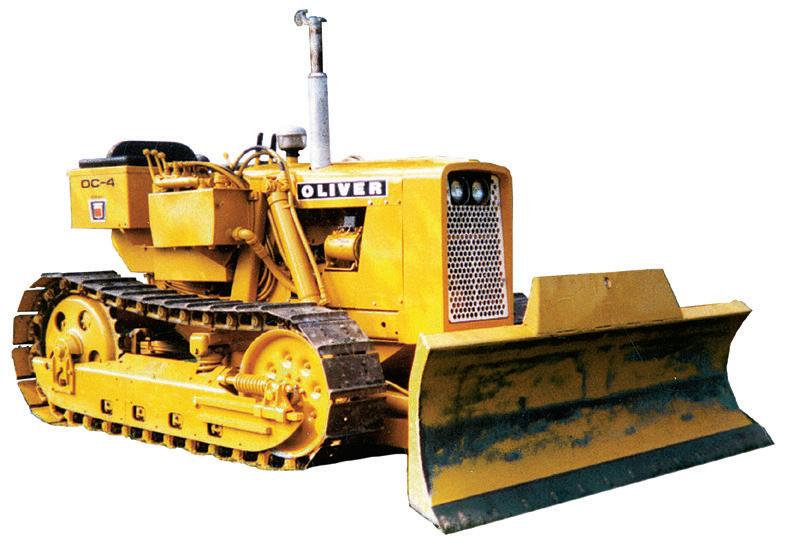



























































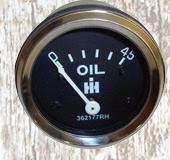




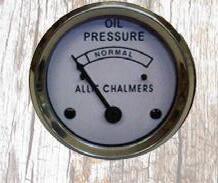


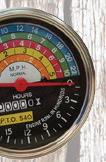




877-530-4430 TractorPartsASAP.com ALL STATES AG PARTS HAS MILLIONS OF PARTS IN STOCK & READY TO SHIP HARD TO FIND GENUINE USED PARTS & QUALITY REPLACEMENT PARTS AT AFFORDABLE PRICES We Have The Best Selection of New, Used and Rebuilt Ag Parts For All Makes & Models 1 YEAR WARRANTY ON ALL PARTS ZIMMERMAN OLIVER-CLETRAC 1450 Diamond Station Road, Ephrata, PA 17522 Phone: 717-738-2573 Fax: 717-733-3529 PARTS AND SERVICES FOR THE OLIVER-CLETRAC WHEEL & CRAWLER TRACTORS • NEW • USED • REBUILT NEED OLIVERCLETRAC PARTS? CALL TO REQUEST OUR 2020 CATALOG (800)634-4885 PLANTER RAKE & COMBINE PARTS 10%OFF WEBSITE CODE: Detail Order # Price AC Chrome Oil Gauge W/Stud 70228719H $18.95 $14.25 AC D14,D15, Early D17 Gas Tach 70277450H $79.95 $59.99 AC Temp Gauge Stem Style 226466H $24.95 $18.75 FD 5 Speed Transmission Tach C3NN17360KH $49.95 $37.50 JD Diesel 6V Pos Ground Fuel Gauge Kit 720730FG6VP $59.95 $44.99 JD Diesel 12V Neg Ground Fuel Gauge Kit 720730FG12VN $59.95 $44.99 JD Diesel 12V Pos Ground Fuel Gauge Kit 720730FG12VP $59.95 $44.99 IH 45psi Dash Mount Oil Gauge 362177RH $18.95 $14.25 IH 45psi Engine Mount Oil Gauge 362177RHNS $18.95 $14.25 IH 75psi Dash Mount Oil Gauge 364665RH $18.95 $14.25 IH 75psi Engine Mount Oil Gauge 364665RHNS $18.95 $14.25 IH 460 & 560 Tach 383093RH $99.00 $74.25 MF Voltmeter 6-20 Range 1672835MH $18.95 $14.25 Sale OR VISIT THE-CO.COM
A GROWING COLLECTION
LANDSCAPE ARCHITECT SURROUNDS HIMSELF WITH GARDENING TOOLS OF THE PAST
 By Sara Jordan-Heintz
By Sara Jordan-Heintz
Landscape architect Mark K.
Morrison is a pioneer in the green roof and infrastructure industry. Through his work, he has cultivated a passion for antique garden tools, amassing a collection of thousands of pieces.
Mark was born in Iowa, but his family relocated to Wisconsin soon after. He has resided in New York and Connecticut for the last 50 years. While he didn’t grow up on a farm, rural life influenced his interests.
“I used to visit my grandmother in Illinois and we would frequently visit Ellis Conklin’s farm between Wyanet and Princeton in the western part of the state,” he remembers. “My uncles had pig farms and my cousins showed pigs and sheep at county and state fairs, so I was exposed to farm life as a boy.”
His family had a cottage in northern Wisconsin on Manson Lake north of Tomahawk. While some young boys growing up in a rural setting might be found hunting or fishing, at age 14, Mark could be spotted driving back roads in a 1957 Volkswagen, stopping to dig up trees that he would replant on his family’s
Travels launch a collection
As a student at Carroll College in Wisconsin, Mark
34 September 2023 Farm Collector
lake property.
Far right: large dibbers used to plant corn, beans and any of the larger vegetable seeds. To the left of the dibbers are the potato forks and sifters. The balls on the ends of the tines eliminate
puncture wounds to the harvest and allow potatoes to be sifted out, leaving the soil in place. To the left of the potato forks is an assortment of forks used to turn over soil and work clay soils.
considered a career in dentistry but soon changed his mind. “With fortuitous guidance from my high school guidance counselor, I transferred to the University of Wisconsin at Madison and earned a degree in landscape architecture in 1973, with an emphasis in horticulture and regional planning,” he says. “When I graduated, it was the early days of landscape architecture. I’ve been in the profession for 50 years.”
He launched a construction company in 1970 and a landscape architecture firm in 1983. Today he specializes in educational environments, urban parks, rail trails, green roofs and residential gardens and frequently incorporates recycled materials designed to reduce the carbon footprint.
His work takes him around the globe, giving him opportunity to experience many cultures and visit distinctive sites. During travels in 1983, he bought his first vintage gardening tool in Stellenbosch, South Africa – a 19th century garden fork manufactured in Sheffield, England. “I brought it home in the overhead bin on the airplane,” he says. “The Sheffield garden fork really piqued my interest and started the collection.”
Tools showcase artistry of another era

Although Mark’s collection stretches from the late 1600s to present day, his primary focus is 18th and 19th century European pieces, all hand-forged and restored. The collection includes tools used in vegetable gardens, flower grades and formal gardens.
There are handblown glass cucumber straighteners, asparagus knives, metal sprayers, daisy rubbers, hand shears, fibbers, spades, potato and beet forks, along with seed packets, garden seed racks and seed boxes. Most pieces are from England, Scotland, France, Italy and the Netherlands, but some come from as far away as Africa.

“The British, French and Italians really started and maintained gardens as we know them,” he says. “During the many wars over the centuries, tools and metals were collected and melted down for munitions. But some were saved, just like art. People would hide their tools so they wouldn’t be confiscated.”
Mark takes the most pride in his collection of copper and brass watering cans. Newer pieces are crafted from galvanized steel. “The cans would be heavy,” he says. “It’d be like going to Munich and seeing women carry 12 steins of beer at one time.”
Modern gardening tools offer little in comparison. “It’s sad because most tools today are plastic and made with inferior metals,” he says. “I have watering cans from the 18th century that are made out of copper, brass and tin
www.FarmCollector.com September 2023 35
The glass containers at back were used to store grapes in a root cellar. The drawer at front holds a selection of pruning shears dating primarily to the 19th century. Looking for a better way to tend his vineyard, a French man invented shears in the 1820s. “They haven’t really changed much,” Mark says, “although many derivations have been tried.”
A selection of antique hedging tools. Although Mark’s collection focuses on garden tools, he has a few larger pieces such as a horse-drawn ice-cutter and hay rakes, as well as a section of greenhouse sprinklers and heaters.
that are absolutely gorgeous. Most people miss out on the beauty of what garden implements used to be.”
New acquisitions turn up online and in antique shops and auctions. “I have people who search for me in England and France for tools that come to market,” he says. “I have gardening tools previously owned by the British royal family.” French-made tools are easy to spot. The handles of French garden shears are typically marked with a heart and the familiar fleur de lis symbol often appears on mistletoe cutters. “The French pieces are truly works of art,” he adds.
Uniquely tailored to the gardener
Mark’s fascination with antique garden tools is linked to their versatility. “People were very inventive,” he says. “It’s fun to come across tools and try to figure out what they were used for. The British and French were at the forefront and tried so many different tool designs.”
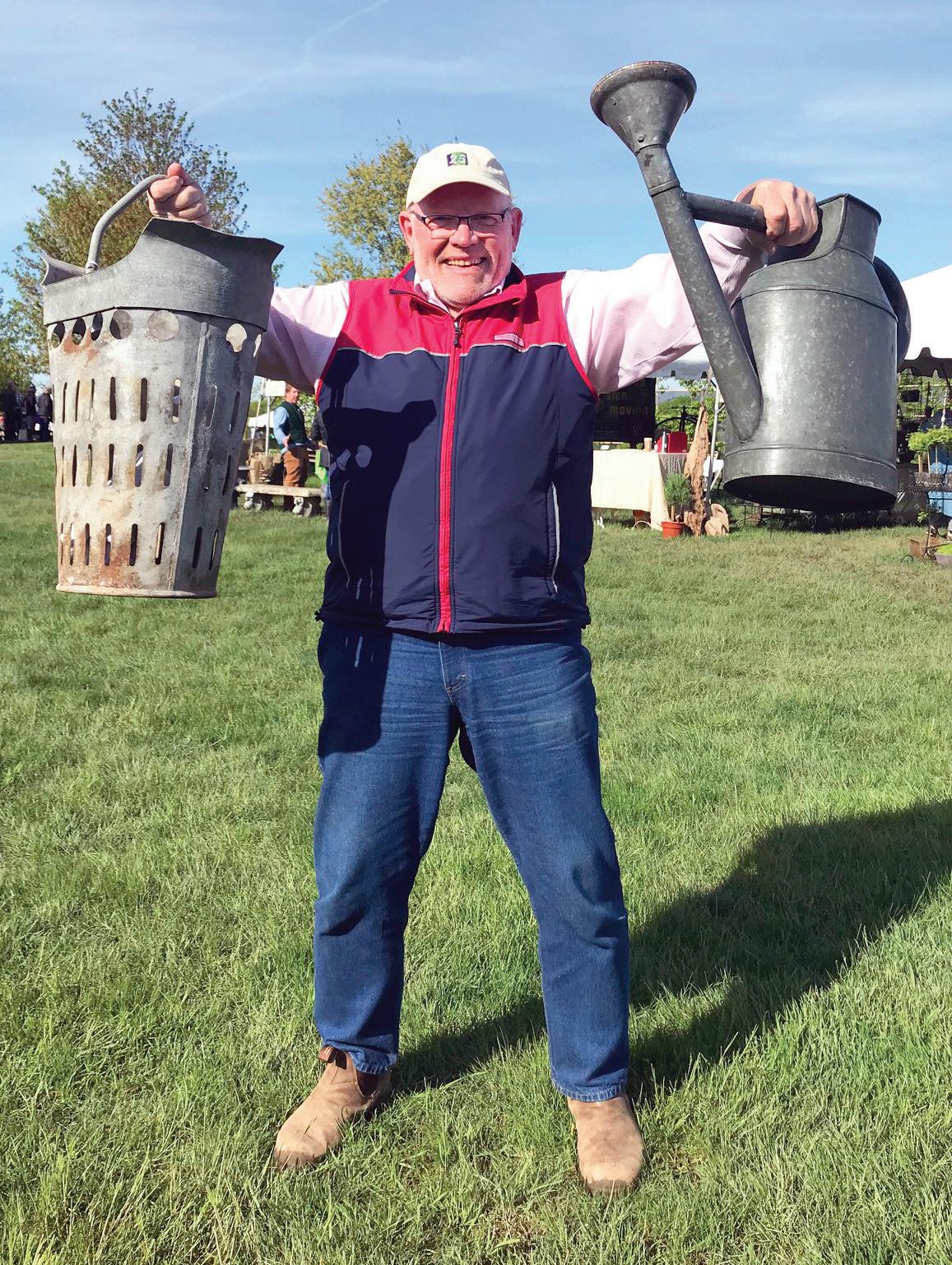

Take clay spades, for example. “They didn’t have one or two types,” he says. “They had dozens. I have a lot of tools with people’s initials on them. A lot of my tools are oneof-a-kind, blacksmith-made, with shears and hoes mea-

sured to fit the length of a specific man’s arm. The users would clean, oil and properly store the tools at the end of a work day.”
These pieces sometimes reveal whether the user was left- or right-footed or left- or right-handed. “You wonder how many lives did they save, how many mouths they fed,” he says. “It’s interesting because women had ergonomic tools before they had the vote in 1921. It’s amazing how much things have really remained the same.”
The functions performed by many of the tools have largely faded from memory. “Many people today probably wouldn’t know about raspberry or gooseberry hooks,” he notes. “They wouldn’t know about potato and beet forks. I have a whole selection of rabbiting spades, mole forks and mole traps, and beautiful glass wasp traps. Multi-cutting-head shears don’t exist anymore. I’ve also added a good selection of electric tools from the 1940s and ’50s. Ironically, they’re very similar to manual tools.”

Today, his focus has extended to 20th century tools and ephemera. He prefers tools with original labels. “I’ve found items for a dollar that are junk, but they make a point in comparison with the tools hand-made long ago,” he says. “I’m telling the history of gardening tools from the late 1600s to today.” FC
For more information, email Mark Morrison at mkm@markkmorrison.com
Sara Jordan-Heintz is an author, editor and award-winning journalist. She writes for a variety of newspapers and niche publications. Email her at rose111@netins.net

36 September 2023 Farm Collector
What is a more universal garden need than water? Here, a part of Mark’s collection of watering cans, as well as greenhouse heaters and florist ephemera.
An exubertant gardener and collector: Mark Morrison with a couple additions to his collection.
✭
New York Wassaic

RECOMMENDED PRODUCTS FOR THE VINTAGE FARM COLLECTOR


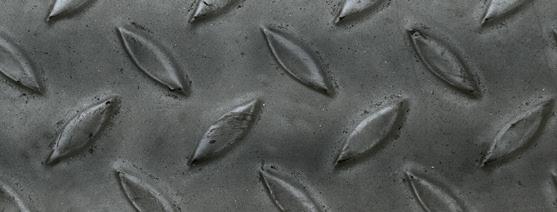






GAS ENGINE RESTORATION
From start to finish, Peter Rooke’s revised, easy-to-follow narrative will impress and educate both new and experienced hobbyists with exhaustive coverage of the process. In 112 pages, Rooke meticulously leads you through stripping and rebuilding each component of the engine, from bearings to cylinder heads to ignition. Tips along the way cover everything from repairing damaged threads to removing rust and zinc plating. #5463 $19.95 $15.96
MORE GAS ENGINE RESTORATION
A follow-up to his highly regarded first book (pictured above), this newest gas engine restoration guide from veteran vintage engine restorer Peter Rooke offers a wealth of information for both the new and experienced engine hobbyist. Drawing from his experience repairing and restoring gas engines, Rooke shares the tips and techniques he’s acquired to aid engine restorers in almost every facet of the restoration process.

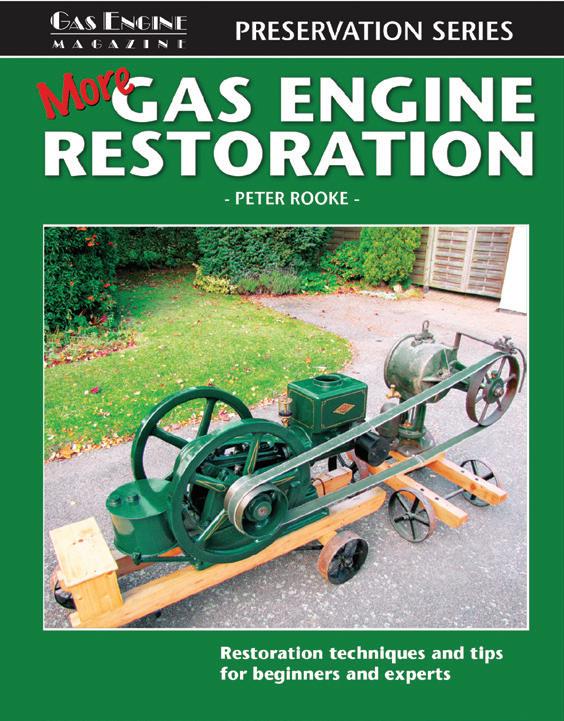
#7949 $19.95 $15.96






Save and Buy as a Set!

This Legacy Old Favorite Trucker Hat will quickly become an old favorite for everyday wear! Embroidered with the Farm Collector logo, the dirty-washed cotton gives it the perfect worn-in look. Made from 65/35 cotton/polyester, it is soft to the touch and allows for days of comfortable wear. It features a low profile with ample space for the ears and plenty of ventilation.

#12087 $27.99 $24.99
In this comprehensive and readable book, tractor expert Jonathan Whitlam tells the story of the development of International Harvester from its North American roots in the 1900s. The book covers developments from the early combustion-engine machines to the merger with Case in 1985 and ownership by Fiat in 1999.

#10907 $24.95 $21.95
THE COMPLETE BOOK OF CLASSIC FORD TRACTORS

In this comprehensive addition to Motorbooks’ Complete Book Series, tractor historian Robert Pripps provides an amply illustrated, detailed and complete account of Ford tractors, from the earliest Fordsons to the Ford-Fergusons, the Ford N Series, and the Ford “World” tractors manufactured into the 1970s. The only book offering comprehensive coverage of the breadth of collectible Ford tractors, The Complete Book of Classic Ford Tractors is a must-have volume for every tractor enthusiast’s library. #11212 $45.00 $38.25
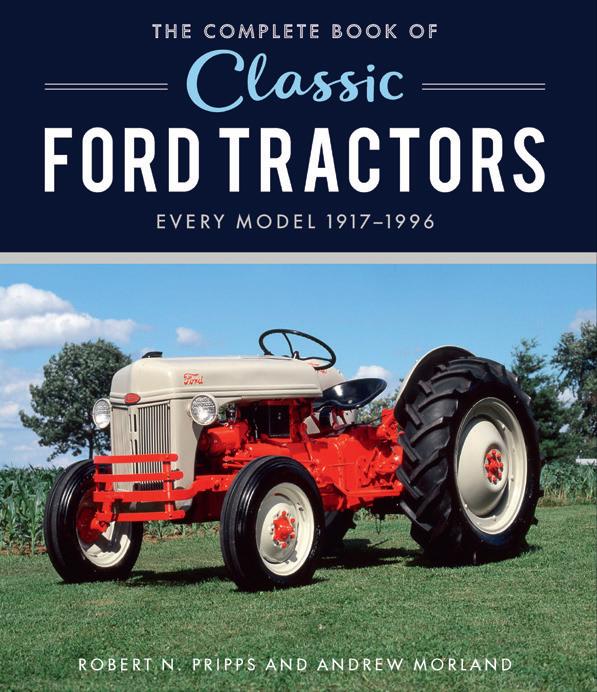 INTERNATIONAL HARVESTER TRACTORS
GAS ENGINE RESTORATION & MORE GAS ENGINE RESTORATION PACKAGE #9975 $39.90 $29.99
FARM COLLECTOR LEGACY HAT
INTERNATIONAL HARVESTER TRACTORS
GAS ENGINE RESTORATION & MORE GAS ENGINE RESTORATION PACKAGE #9975 $39.90 $29.99
FARM COLLECTOR LEGACY HAT
FC Products September 2023.indd 2 6/28/23 10:53 AM 38 September 2023 Farm Collector
ULTIMATE TRACTOR POWER
As the third volume in author Peter D. Simpson’s Ultimate Tractor series, this 206-page book dives into all the high horsepower, four-wheel-drive articulated machines currently produced worldwide while adding a unique look at rubber track machines, both articulated and rigid framed. Included is company history, and technical specifications, and an abundance of wonderful, full-color photography. #11831 $55.00 $46.75

FARMALL 100 YEARS
In Farmall 100 Years, award-winning tractor author, photographer, and historian Randy Leffingwell and prolific tractor historian Robert N. Pripps offer a richly illustrated and detailed book that captures the full story of the iconic tractors. Beautiful photos and rare historical images accompany in-depth analyses of milestone tractors. The engaging text examines engineering developments, their historical context, and key figures. #11801 $50.00 $45.00

HANDY FARM DEVICES AND HOW TO MAKE THEM, SECOND EDITION

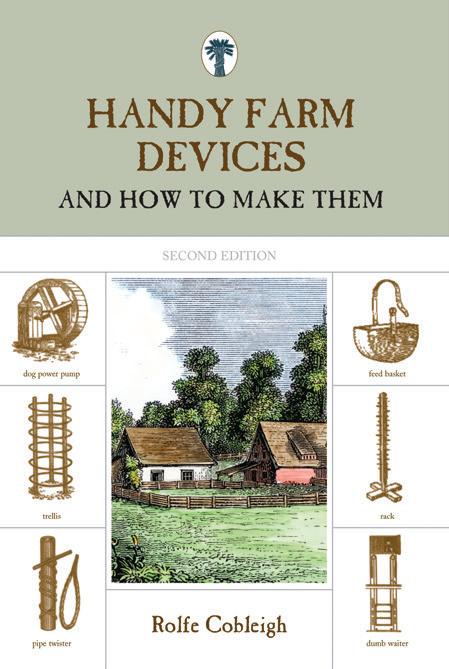
Handy Farm Devices, Second Edition, is as useful and pertinent for homesteaders and small-scale farmers today as it was when it was first published nearly 100 years ago. A wealth of labor- and money-saving projects fills this century-old guide to low-tech property maintenance along with easy-tofollow instructions and practical illustrations.

#10715 $14.95 $13.45
METALWORKING










With more than 2,000 black-and-white illustrations and clear, practical instructions given by expert handyman and blacksmith Paul N. Hasluck, Metalworking offers everything you need to know to turn a chunk of metal into a useful and well-crafted product. This ultimate, do-it-yourself guide to metalworking is ideal for all handymen, handywomen, and industry professionals — amateur and seasoned alike! #5453 $17.95 $15.95
INTERNAL FIRE
Internal Fire is the captivating history of the internal combustion engine and the creative individuals who brought it to life. From gunpowder to diesel, the development of these early powerhouses has been recorded from all sides. The influences of new technologies, patents, and obtainable fuels, as well as a growing understanding of the very nature of heat, are all explored.

#11824 $39.95 $33.96
HOW TO RESTORE TRACTOR MAGNETOS

How to Restore Tractor Magnetos is the essential guide to farm tractor electrical systems and offers the tractor restorer all the information needed to restore, repair, and diagnose magnetos. Authored by the late Neil Yerigan, who was a master of working with vintage electronics, the book comprehensively covers how magnetos function as well as how to troubleshoot and repair common problems.
#6384 $24.95 $21.21

www.FarmCollector.com September 2023 39
To order, call toll-free 1-866-624-9388 (outside the United States and for customer service, call 785-274-4366) or go to Store.FarmCollector.com Mention code MFCPANZI. Promotion Expiration Date: Sept. 18, 2023 Free Shipping* for book orders over $50.00!
Domestic/US orders only.
*
FC Products September 2023.indd 3 6/28/23 10:53 AM
RECOMMENDED PRODUCTS FOR THE VINTAGE FARM COLLECTOR

AMERICA’S RURAL YESTERDAY
VOLUME 1: FIELDWORK
America’s Rural Yesterday transports the reader to another time, when life moved slower and family and community was important. More than 100 photos by famed photographer J.C. Allen show fieldwork, including planting, tilling, harvesting, and more. Also included are shots of threshing, corn shelling, milling, and haystacking. Horses, mules, oxen, vintage tractors, and steam engines provided the power back when rural life was the norm.
#7554 $24.95 $21.95
VOLUME 2: BARN & FARMYARD
Volume 2 of America’s Rural Yesterday includes photos of farmwork performed in dairy, poultry, and hog barns, as well as the wide variety of tasks performed in the barnyard: ensilaging, stock feeding and watering, haymow loading, threshing, corn grinding, butchering, collecting eggs, root cellaring, and much more.


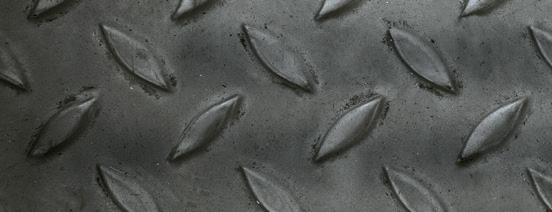
#7555 $24.95 $21.95
VOLUME 3: AT HOME & IN TOWN
This book, the third in the three-volume series, showcases what people did when they weren’t working in the fields, barns, or farmyards in the 1920s-1940s. More than 120 photos show rural families in their kitchens, parlors, and dining rooms. There are photos of going to town and spending time at the library, grocery, general store, school, doctor’s office, and more.
#7556 $24.95 $21.95
VOLUME 4: EARLY TRACTORS
The fourth installment in this series of books using J.C. Allen photos to illustrate how rural life in the first half of the last century, America’s Rural Yesterday Volume IV: Early Tractors, takes the reader back to when these machines were brand new additions to the farmer’s fleet. Featuring over 250 photos from tractors working in farm fields and barnyards from the first half of the 20th century, this book is a must-have for any fan of early tractors and agricultural history.

THE DAVID BROWN TRACTOR STORY: PART ONE 1936-1946
This closely-researched, highly-illustrated history tells the story of the remarkable David Brown Ltd., one of the largest tractor producers in England during the 20th century. Author Stuart Gibbard interviewed many of the surviving engineers, designers, and other staff involved in the development and marketing of David Brown’s products. Altogether, this is essential reading for anyone interested in English industrial history or tractor history as a whole. This is the first in a trilogy profiling David Brown and its products. #11625 $48.95 $42.95
#11921 $24.95 $21.95
AMERICA’S RURAL YESTERDAY 4-VOLUME SET

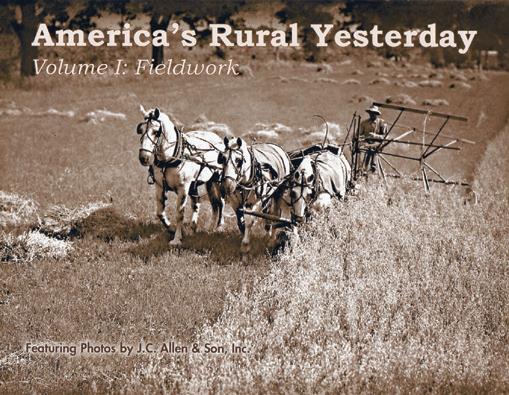

Have the entire collection of America’s Rural Yesterday
Volume 1, 2, 3, and the newly published volume 4 for one discounted price.
AUSTIN TRACTORS
Like Henry Ford, Herbert Austin had farming roots. Both brought motoring to the masses and both attempted to take the physical drudgery out of farming by introducing mechanization. This book tells the fascinating and largely untold story of the tractors made by one of Britain’s biggest car makers, and also looks at other uses of Austin engines in the Austin Champ and Gipsy.

#10909 $22.95 $19.99
THE DAVID BROWN TRACTOR STORY: PART TWO AGRICULTURAL TRACTORS 1949-1964
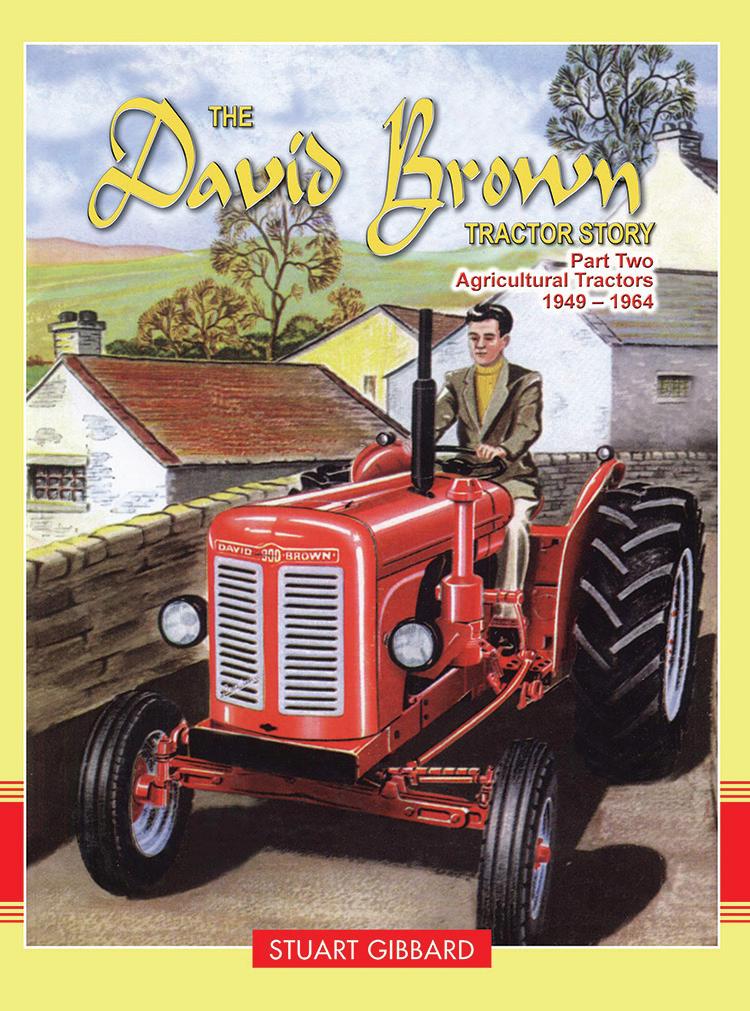

THE DAVID BROWNTRACTOR STORY: PART TWOAGRICULTURAL TRACTORS1949-1964
In the second installment of this trilogy, Stuart Gibbard tells the story of arguably the most significant period in David Brown Ltd. history. In this period the company became a serious contender on the global market, subsequently establishing their new motto of “mechanizing the world’s farms.” Many of the illustrations have been taken directly from David Brown’s archives and never before seen by the public, making this the perfect read for those interested in the evolution of the tractor industry.
In the second installment of this trilogy, Stuart Gibbard tells the story of arguably the most significant period in David Brown Ltd. history. In this period the company became a serious contender on the global market, subsequently establishing their new motto of “mechanizing the world’s farms.” Many of the illustrations have been taken directly from David Brown’s archives and never before seen by the public, making this the perfect read for those interested in the evolution of the tractor industry.

#11626 $54.95 $49.95
#11626 $54.95 $49.95
the 40 September 2023 Farm Collector











#11938 $99.80 $79.99 FC Products September 2023.indd 4 6/28/23 10:53 AM
HOW TO RESTORE FARMALL TRACTORS
How to Restore Farmall Tractors walks you through the complete restoration of your red machine, from disassembly to engine rebuild, electrics, painting, and final detailing. Packed with hundreds of helpful step-by-step photographs, proven tips and techniques, and money-saving advice from restorers who know what works, this will be the only guide you need to restore your favorite red tractor.

#10564 $32.99 $29.99
THE COMPLETE BOOK OF JOHN DEERE TRACTORS: THE FIRST 100 YEARS
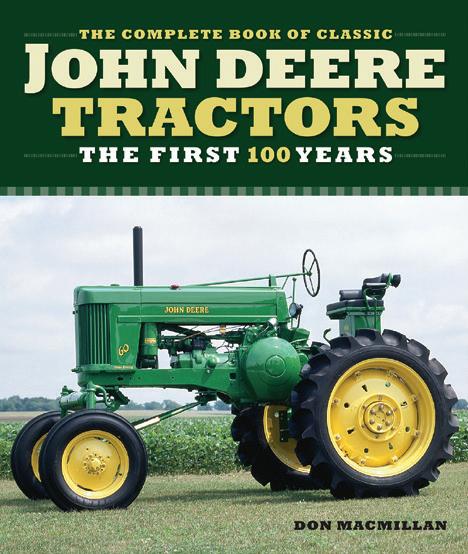
SEVENTY YEARS OF FARM TRACTORS
Seventy Years of Farm Tractors traces the evolution of the farm tractor. Covering a total of 100 manufacturers in alphabetic order, author Brian Bell gives a history of each company and its major models. Illustrated with a wealth of photographs and extracts from sales literature, this informative text provides a complete overview perfect for any tractor enthusiast.

#10040 $27.99 $25.99
FARM ENGINES AND HOW TO RUN THEM

This book fully describes every part of a farm engine and boiler, giving complete directions for the safe and economical management of both. Included are chapters on farm engine economy (with special attention to traction and gasoline farm engines) and a chapter on the science of successful threshing. The book abounds with precision artwork and cutaway illustrations showing the different parts of a boiler and engine, and nearly every make of traction engine.
#8263 $12.95 $10.95
FARM COLLECTOR FIELD GUIDE TO MYSTERY FARM TOOLS








DIESEL’S ENGINE
’S ENGINE
This book is a fantastic resource for serious fans of engine evolution and a great read as well. If you are interested in how the combustion engine came to be, this work by C. Lyle Cummins Jr. is vital reading. Cummins covers in dramatic detail the entire sweep of Rudolf Diesel’s original ideas and uses black and white photos and period line drawings to further transport you into Diesel’s world.

esource for ine evolution and a ead as well. If you are interested in ine came to be, ork by C. Lyle Cummins Jr. is vital . Cummins covers in dramatic e sweep of Rudolf Diesel’s e os and period line drawings to t you into Diesel’s world.

This fact-packed volume takes you through dozens of John Deere farm models, beginning with the 1892 Waterloo Boy and ending with the game-changing New Generation and Generation II lines. Illustrated with incredible color photography and period advertising, this is an essential edition for the library of any Deere fanatic.
#10151 $45.00 $38.25
Take a trip to a simpler era, when inventors crafted solutions that required neither chips nor circuit boards – just plain old American ingenuity. This collection features a variety of tools, presented with original photos and text. All of the tools come from 12 years of Farm Collector’s monthly What Is It? feature, where readers contribute photos of objects and others pitch in to identify the items. Can you identify these mystery items without looking at the descriptions?
#4850 $7.99 $6.99
#11825 $75.00 $64.99
75.00 $64.99
UTIONARYRED TRACTORS
REVOLUTIONARY RED TRACTORS

e how the invention and evolution ricultural technology transformed the ’s day-to-day life in Machine Marvels: y Red Tractors. The book takes you ney that begins in 1830, exploring the tors and harvesting machines built ase IH and their heritage brands. Each piece o life with rich historical emporary photographs of , accompanied by an engrossing e and detailed graphics that illustrate the y, mechanics, engineering, and physics of round-breaking tractors. For ages 8-12. 29.95 $27.95
Explore how the invention and evolution of agricultural technology transformed the farmer’s day-to-day life in Machine Marvels: Revolutionary Red Tractors. The book takes you on a journey that begins in 1830, exploring the pivotal tractors and harvesting machines built by Case IH and their heritage brands. Each piece of equipment comes to life with rich historical and beautiful contemporary photographs of the machine, accompanied by an engrossing narrative and detailed graphics that illustrate the history, mechanics, engineering, and physics of these ground-breaking tractors. For ages 8-12. #11827 $29.95 $27.95
To order, call toll-free 1-866-624-9388 (outside the United States and for customer service, call 785-274-4366) or go to
OILY HANDS

AND
THE SMELL OF DIESEL: TALES OF A FORD DEALER ENGINEER IN THE 1960S



Oily Hands and the Smell of Diesel provides a view that no book has before — the inside story of the agricultural machinery repair trade. First employed as an apprentice, then moving his way up to an engineer, David Harris gives an entertaining, informative personal account of his time at a Ford main tractor dealership.

#11624 $24.95 $21.21

Store.FarmCollector.com Mention code MFCPANZI. Promotion Expiration Date: Sept. 18, 2023 Free Shipping* for book orders over $50.00! * Domestic/US orders only. FC Products September 2023.indd 5 6/28/23 10:53 AM www.FarmCollector.com September 2023 41
Connecticut
Goshen Flywheel & Tractor, Inc. Antique Tractor Show. September 15-17, 2023. Goshen Agricultural Society Fairgrounds, Goshen, CT. Displays and Vendors wanted. Hands on demos, family friendly, cider press, pick your own pumpkins, Saturday tractor pull. Antique construction equipment, heavy duty truck show, slowest truck race, food truck fest. Contact: Dan Belmonte 860-307-3473, bells8127461@gmail.com
Indiana















































28th Annual Franklin County Antique Machinery Show Sept. 28-Oct. 1 Brookville Features: Lesser known classics and Ford, Fordson, and Ford-Ferguson, plus Fairbanks-Morse engines. Directions: 11225 County Park Road, zip code 47102. Contact: General information, 765-265-2882; email: fcamcinc@yahoo.com Flea market, 765-265-6245. www.fcamc.org Facebook: fcamc








































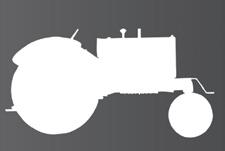
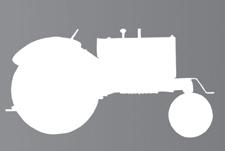
Kansas
Sept. 23th-24th, 2023: Meriden Fall Festival & Swap Meet Show. Meriden, KS. Meriden Antique Engine & Threshers Association, 8275 K-4 Highway. Sorghum, apple butter & cider making, sawmilling, various demonstrations, all building exhibits open, stock garden tractor pull both days. Contact: Lisa Cain 785-501-5547 or visit: www.meridenthreshers.org




Nebraska
The 41st OLD TRUSTY ANTIQUE ENGINE & COLLECTORS SHOW - September 9-10, 2023. Fairgrounds-Clay Center, NE. Featuring Avery Steam Engines, Tractors and Equipment, B.F. Query Tractors - also Lawn and Garden Tractors. Tractor pulls, threshing, corn shelling, ensilage cutting, sawmill, heritage craftsmen, parade daily, antique autos, trucks and military vehicles. Kids pedal pulls, wheat weaving, Museum Quilt Show daily. Ride the FREE shuttle to museum. New steam tractor building, see Big Allis in Ag Hall. Indoor/ outdoor ea markets, antiques, crafts, collectibles and many treasures. County music, Blacksmith, dutch oven cooking, home-made root beer, trail ride - tractor drive. Grand stand shows included in gate admission. For additional information call 402-726-2487 or visit www.oldtrusty.org.
42 September 2023 Farm Collector
In The John Deere Century, acclaimed author and photographer Randy Leffingwell uses his unique brand of storytelling to chronicle the company and the tractors that have carried the distinctive green and yellow livery for the past century. Item #8804 $40.00 Call 866-624-9388 to order, or visit Store.FarmCollector.com Promo Code: MFCPANZ2 THE JOHN DEERECENTURY JOHN DEERE THROUGH THE YEARS FC -The John Deere Century_4.69x6.86.indd 1 7/14/23 8:58 AM


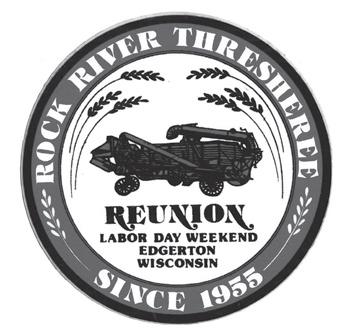













www.FarmCollector.com September 2023 43 ROCK RIVER THRESHEREE ADMISSION- $10, CHILDREN UNDER 12 FREE 67TH ANNUAL REUNION • LABOR DAY WEEKEND SEPTEMBER 1-4, 2023 ATTRACTIONS Museum of Agriculture & Industry • Classic Construction Equipment • Sorghum Mill • Steam Pile Driver • Plowing Threshing and many more Power Demonstrations • Gas Engines • Models • Wheelwrights & Blacksmiths Shops • Grist Mill • Craft Demonstrations • Collector Car & Truck Show • Large Flea Market • Kid’s Activities Daily Parade of Power at 2 PM • Free Onsite Parking Food Vendors Throughout the Grounds Ride The Rock River Canon Ball “I Drove My First Tractor” County Hwy. M just off US Hwy. 51 Between Janesville and Edgerton, Wisconsin See Our Website For Directions Information: 608-868-2814 • Flea Market: 608-728-3407 51 East Cox Road, Edgerton, Wisconsin 53534 www.thresheree.com FEATURING: FORD/FORDSON TRACTORS & EQUIPMENT LAUSON GAS ENGINE TRI-STATE GAS ENGINE & TRACTOR ASSN. PORTLAND, IND. SHOW DATES: 19TH ANNUAL SWAP & SELL OCT. 12-14, 2023 58TH ANTIQUE ENGINE & TRACTOR SHOW AUG. 23-26, 2023 www.tristategasenginetractor.com POWER OF THE PAST ANTIQUE ENGINE & TRACTOR SHOW Forest Park, Ottawa, Kan. ◆ Off I-35 SEPTEMBER 8 -1 0 , 20 2 3 EVENTS: Parade of Power ◆ Hay Baling ◆ Kiddie Tractor Pull Shingle Making ◆ Garden Tractor Pull Free Bean Supper W/ Gate Fee is Friday Night Sunday Church Service ◆ Homemade Ice Cream Musical Entertainment ◆ Rock Crushing Threshing & Much More! – Food on Grounds! –ADMISSION : $5 for all 3 days, children 12 and under are free NO DOGS PLEASE! FOR MORE INFORMATION: President: (785) 241-0834 CRAFT/FLEA MARKET SPACE & GAS ENGINES: David Reeves: (785) 241-0834 www.Powero ft hePast.net 28TH ANNUAL FEATURING JOHN DEERE Item: #9375 Promo code: MFCPANZ2 $59.99 866-624-9388 www.Store.FarmCollector.com Read the gripping story of the development of the Wheel Horse tractor! Item #9375 $59.99 $49.99 Promo code: MFCPANZ2 FC-Straight_Horses_2.29x4.03.indd 1 7/14/23 10:04 AM
COST: Classified ads are $1.35 per word with a 20 word minimum. For photo with your ad, enclose $25 per photo. For classified display ads –those with special borders or type – call Terri Keitel at Farm Collector, 785-274-4384. Classified display ads are $65 per column inch (color). Bold words only $2 per word.
CLASSIFIED COMBO SPECIAL
Place your ad in both farm collectible publications

– Gas Engine Magazine and Farm Collector – for $2.25 per word. Save up to 22 cents per word with double the exposure!


SEND PAYMENT TO: Farm Collector, Attn: Classified Advertising, 1503 S.W. 42nd St., Topeka, KS 66609.
IMPORTANT! Don’t forget to indicate ad classification and mark with “For Sale” or “Wanted.” Classifications appear below. Please write neatly. We reserve the right to edit your ad for consistency and clarity, and may reject any ad.
BEARINGS
JOHN DEERE MAIN BEARINGS FOR ALL 2-CYLINDER ENGINES! 100% Manufactured in the U.S.A. Made like the originals! Center Cam Bearings, Center Main Bearings and Rod Bearings Made-to-order / special I.D. & O.D.s / Installation & machining available. MANITOWOC MOTOR MACHINING COMPANY, LLC www.motormachining.com / toll free 1-800-666-9129
TO PLACE AN AD: CALL US TOLL-FREE AT (800) 678-5779,
PAYMENT POLICY: Ads must be prepaid by check in U.S. funds, or charged to MasterCard, VISA, Discover or American Express credit card. Remember to include your name and address, and/or phone number in the word count.
MAIL YOUR AD TO: FARM COLLECTOR MAGAZINE

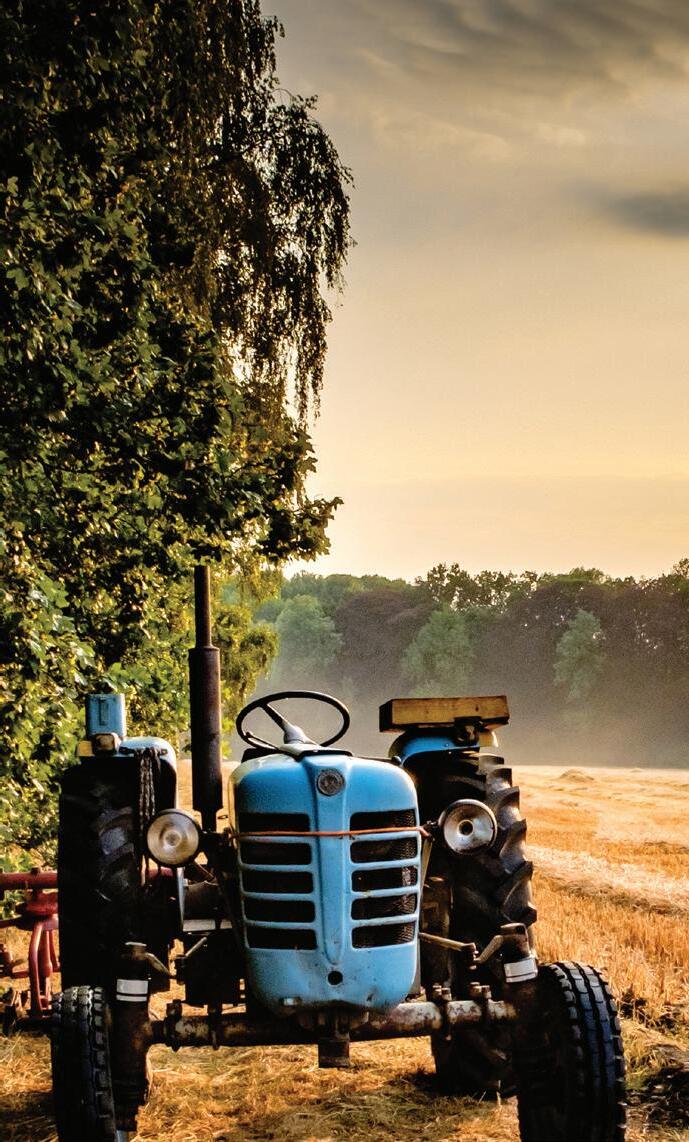
1503 SW 42ND STREET TOPEKA, KS 66609 classifieds@FarmCollector.com
Ads received after the deadline will be held over for the next issue unless indicated otherwise.
BOOKS
PLEASE NOTE THE DEADLINES BELOW FOR THE NEXT FOUR ISSUES.
ISSUE
October 23
November 23
December 23
January 24
DEADLINE
August 1 2023
September 1 2023

October 2 2023
November 1 2023
Farm Collector may refuse to publish any advertisement at any time, according to our discretion. However, we are dedicated to providing our readers with the broadest range of alternatives possible. We believe our readers are generally intelligent, and trust them to exercise their own good judgment when choosing whether to patronize our advertisers. We cannot verify all claims made by advertisers. Please consider any advertiser’s claims carefully before buying.
– Bill Uhler, Publisher, Farm Collector
BOOKS
THE FARM WRENCH BOOK-Volume I $80. Volume II $55 Volume III $55 Volume IV $60 Combinations I, II, III & IV $240 Volumes I, II, III $180 Please send check to P. T. Rathbone, 6767 Pershall Road, Marsing, Idaho 83630
3 books for sale of collected thoughts and rural humor.

Behind the Muf er $20
Behind the Fence $30
Behind the Motometer $10
Total of 300 pages. All 3 for $50. Mail check to Bob Frey, 104 Snyders Rd., Phillipsburg, NJ 08865
44 September 2023 Farm Collector
or send check
Purchase online at Amazon.com
for $26 to Linda Laird, 1432 S. San Luis, Green Valley AZ 85614
HORSELESS CARRIAGE Replica: Use riding lawnmower motor, transmission and differential. 26" wheels, 52" wide, 82" long and 36" wide seat for two. 1" square steel tube frame, centrifugal clutch, 8-10 MPH speed, 5 -8 hp engine. Twenty pages computer-drawn detailed plans, parts supply and photos. Plans $20 each model. Check or money order. Jimmy Woods, P.O. Box 216, Coker, AL 35452; 205-339-8138.

CARBURETORS
Carburetor, Water Pump Rebuilding, 6 Month Warranty. Farmers Service Incorporated. 8:30 a.m. to 5:30 p.m. EST; 330-482-4180
P.O.
ENGINES
Wanted: Looking for old hit-and-miss gas engines to buy. 614-306-0908 or gasenginetom@hotmail.com
Wanted: Always buying hit-and-miss flywheel gas engines, big or small, one or whole collection. 419-789-1159 or jon@sideshaft.com (OH)
FOR SALE
Plow for sale for G Allis-Chalmers. Excellent condition, new paint. $500.00. 3-14 3-point Eagle hitch plow for Case tractors. very good condition, $700.00. 217-345-3839.
For Sale: 1950 Oliver Cletrac HG68. Overhauled, new hydraulics, converted to 12 volt, has loader bucket. 719-740-1858. Flagler, Colorado.
FOR SALE: Ferguson TO35 tractor w/Standard Motors Diesel Engine. Rebuilt injectors, all new piston rings. 1 new piston & sleeve, new glow plugs. All new filters and engine oil. Almost no rust. Starts a little hard. It does smoke quite a bit until warmed up but runs good when warmed up. Brakes may need a little work. $4,500. 740-623-0843. Leave voice mail. OH
JD Tractor parts for G, D, A, B, H, MT, 50, 60, 70, 70D, 420, 530. power steering units, 420W, 520, 620, 620LP, 720, 720LP, 730, 830, 840, 4010, 4020. L Belly Pans for $95, 1958 620LP, runs good $4,000. Darwin Gingerich, 620-386-0071.
GASKETS
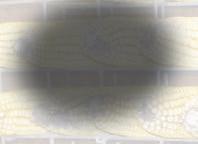
Any type, no tooling or minimum for most gaskets. Free online quotations. www.gasketstogo.com

LITERATURE/MANUALS
Tractor Manuals and Literature. Large selection available. Jim Robinett, 5141 Kimball Rd, Ontario, OR; 97914. E-mail: tractrmnul@aol.com. 206-713-3441.


ORGANIZATIONS
Dues: $25 per year 810 South Main Mt. Pleasant, IA 52641 641-919-2042

duckcall1961@yahoo.com
Quarterly “Bang Board” newsletter. Corn History Informational Books Available Find us on Facebook


PARTS
Spur, helical and worm gears. Pinion and spline shafts. Made to specs or duplicate original. Elmridge Machine & Gear, 94 Fairview Rd, Lititz PA 17543 717-664-1079

BUY
READ THE CLASSIFIEDS
1941 John Deere LA serial #4990 with rear PTO & LUC engine mounted on custom trailer. All manuals, umbrella, toolbox, muffler, radiator, fan, step & miscellaneous parts.
This is a package $7000. Trailer not included. mladolan88@gmail.com MN 612-616-1820

SELL
www.FarmCollector.com September 2023 45
BUILDING
www.FarmCollector.com
PLANS/BLUEPRINTS
(800) 286-2171 www.tractordecal.com jonsal@threeriverwb.net
DECAL
Box 373 Ainsworth, NE 69210
Life size Aluminum Elk Statue $2,500, delivery possible.785-488-5150. (KS)
TURBOCHARGER KITS ANTIQUE GAS TRACTORS













FARMALL M, SUPER M 400 450. W9 600-650. FARMALL H, SUPER H, 300-350. INTERNATIONAL 460-806, FARM KIT AND 4 BARREL PULLING KITS. ALLIS CHALMERS WC-WD45. OLIVER 77-88-1650. Oliver diesel. MASSEY HARRIS 44-444. KEYSTONE TURBO LLC, SMICKSBURG PA Please call 724-664-8642 duddy1@windstream.com keystoneturbollc.com







RESTORATION/ REPAIR
Next Generation Magneto Repair, 3rd generation, Dave Temple 856 Willow Brook St. N.E. Owatonna MN, 55060; 507-339-1470.
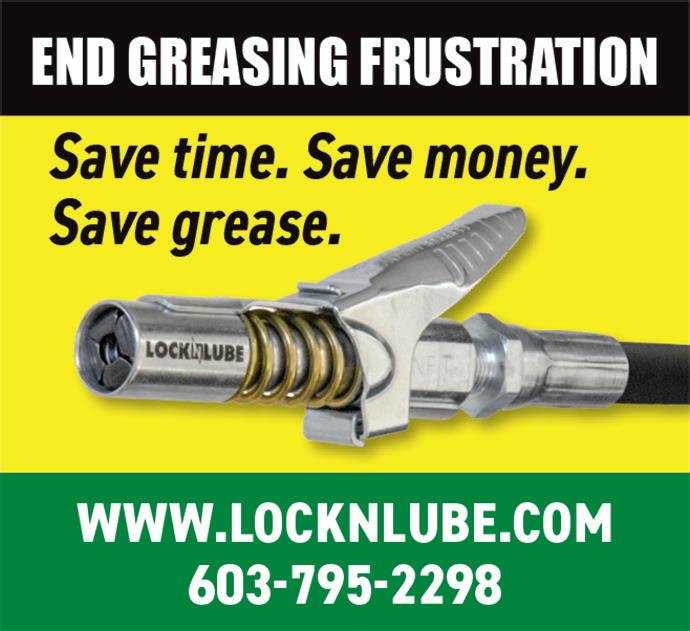
Steering cylinder repair, New replacement parts manufactured by us. Case200,300,400,500 series tractors. Ford 700,800,900 series tractors. New pistons, rods, seals and cylinders. Bob Hunter, Pioneer Hydraulics, 5807 E Hayward Rd, Waukomis, Okla.73773. bhunter772@gmail. com, 580-603-0063.

Carr's Repair: We got you Covered! Restore those powerhouses back to original! New IH sleeves & piston kits for IH 9, IH 6 and IH MD, 450 D, W-9- 650 series gas and diesel tractors and John Deere, D and R piston kits, 720 and 830 Diesel kits. Int'l Falls, MN No Sunday calls. Ph 807-487-2548, www.carrsrepairvintageparts.com.
For Sale: Grade One plow handles, $50 per pair, postpaid. Beverly Egbers, 326 County Road 24, Hooper, NE 68031; 402-567-2588.
Obsolete water pump? Let me rebuild yours. Mark, 623-205-4482; waterpumprebuilder@gmail.com
RESTORATION/ REPAIR

WANTED
Wanted:" Want to buy Chase Manufacturing Company, Mason City, Iowa made engines and advertising" My registry of Chase Mfg. Co. engines contains engines: 9, 49, 52, 96, 101, 599, and 805 as of July, 2022. Email: rogerwhite57@ gmail.com. WY


















TRACTOR DISPLAY SIGNS
Personalized, Magnetic, Weatherproof Display Signs Perfect for Antique Tractor Parades and Shows! Visit www.TheBadgeFactory.com or call 410-239-3368 to order. Take 10% Off with Promo Code: COLLECTOR

WANTED
Like to buy any type of old farm equipment, one piece or whole collection, salesman samples, country store, corn shellers, anything farm related, advertising signs, old wood signs. Leave message 574-304-4587




Parts for Athens Disc Plow for Model F Fordson. Also looking for information on WEHR Super Power Unit for Model F Fordson. Mark Kline, 507-210-4393. Leave Message.
Looking for old hit miss engines, parts,
46 September 2023 Farm Collector
PARTS
models and/or entire collections. 614-3060908 or gasenginetom@hotmail.com. (OH) KEVIN’S MAGNETO SERVICE PARTS • SERVICE • REBUILDS 25930 N Co Rd 2600 East • Manito, IL 61546 309-303-2634 www.magneto-repair.com kevinsmags@yahoo.com Ridge View Tractor Restoration Painting & Sandblasting All Makes & Models Complete Restorations General Repairs Eu G E n E Bu R khold E R 3376 170th Ionia, IA 50645 • 641-228-4558 Paul’s Rod & Bearing BABBITT BEARING SPECIALIST Since 1952 LET US REPOUR YOUR ROD, MAIN AND CAM BEARING! (816) 587-4747 • Fax: (816) 587-4312 6212 NW Bell Rd., Parkville, MO 64152 www.paulsrodandbearing.net WANTED HIT MISS ENGINES Looking for rare and unusual engines, spark plugs & signs for my small personal museum ** Farm fresh or restored ** ** One or entire collection ** www.edsoldiron.net Ed Laginess 734-755-3609 Do you have an old tractor, restoration project or any farm related equipment or tools to sell? (800) 678-5779













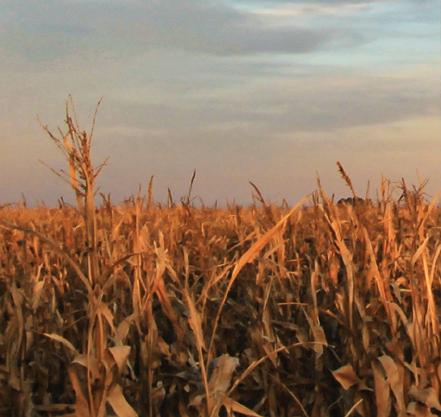
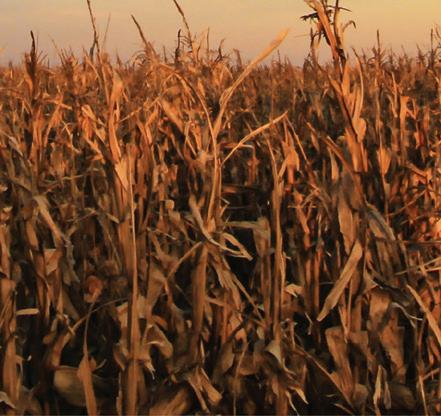
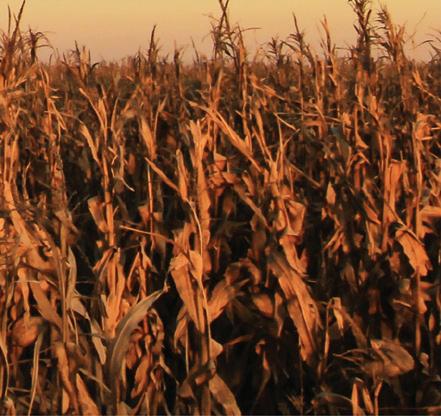
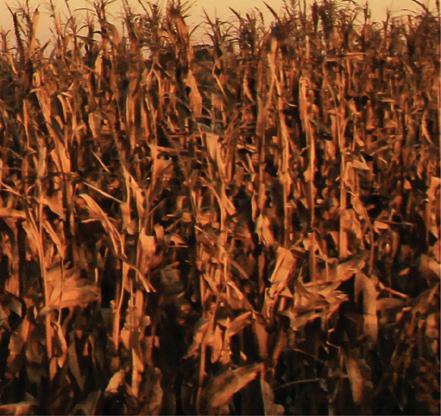





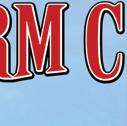
















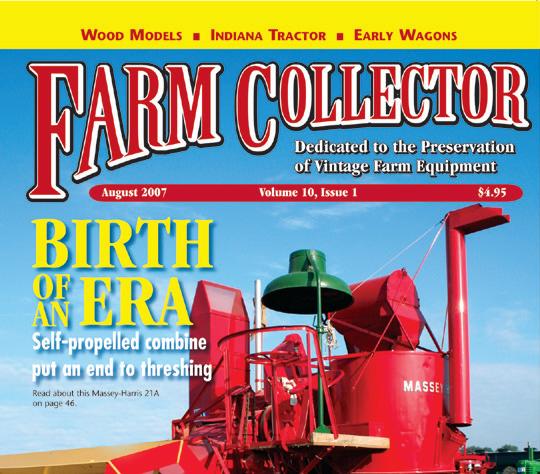



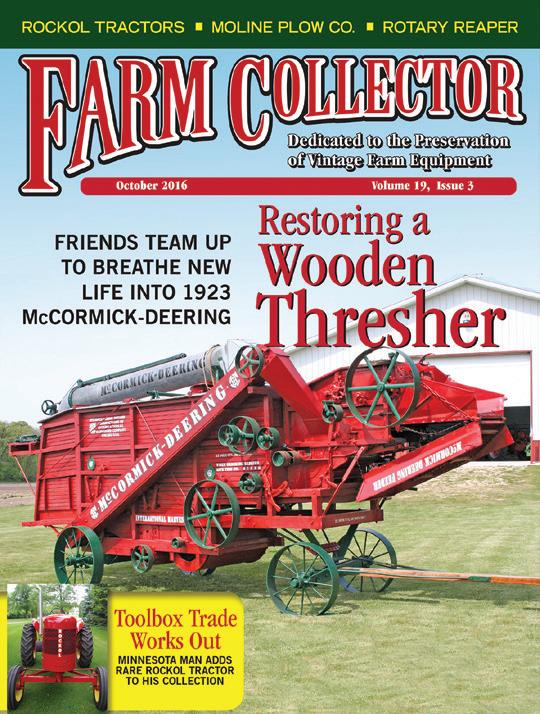













www.FarmCollector.com September 2023 Order today by calling 866-624-9388 or visiting Store.FarmCollector.com Mention promo code MFCPANZ1. Price does not include shipping and handling. Whether you’re interested in antique tractors and farm equipment or stationary gas engine information, use our search function to bring up all relevant content! For collectors and enthusiasts, dreamers and restorers, newcomers and lifelong collectors, we have you well covered. This digital archive features almost 20,000 articles - all originally published in Farm Collector, Gas Engine Magazine and The Iron-Men Album (Steam Traction) - spanning the years 1951 to 2022, formatted for optimal viewing on computers. Item #11854 $39.95 NOW INCLUDES 2022 ARTICLES! Enjoy 72 Years of Content at Your Fingertips! Cockshutt CRAZY WISCONSIN MAN’S COLLECTION INCLUDES TWO ULTRA-RARE TRACTORS March 2018 Volume 20, Issue 8 $4.95 C1-0318-FC cover-subscription-newsstand.indd AM FCM_FC-GEM ARCHIVE.indd 1 12/7/2022 8:37:12 AM



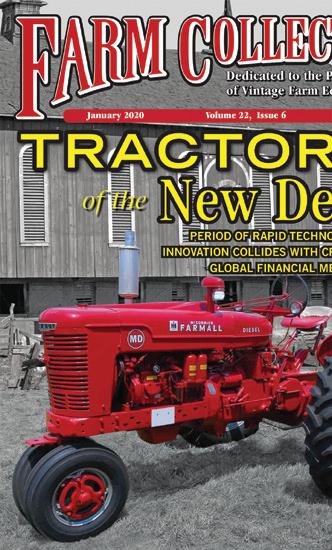






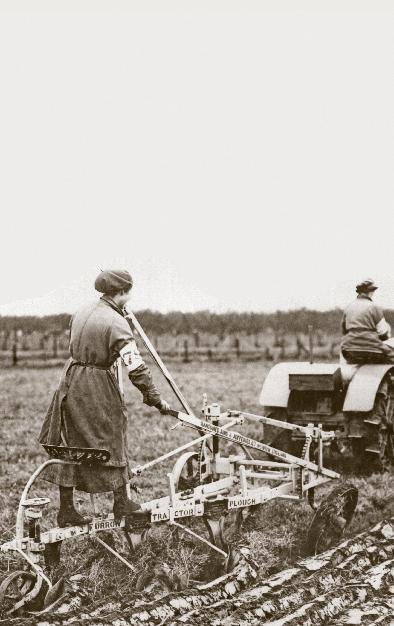
















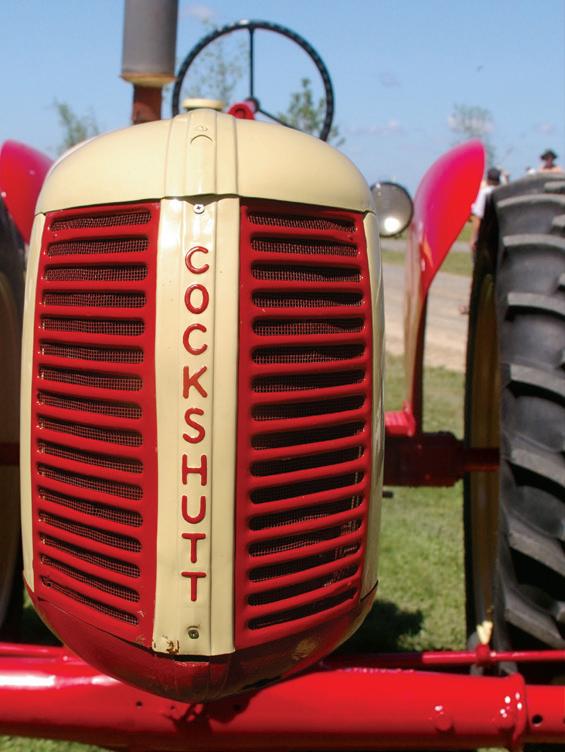





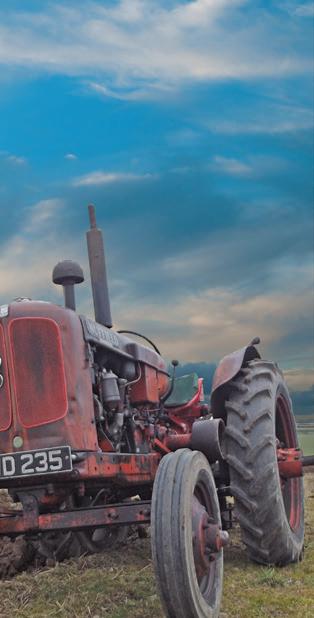








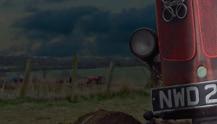













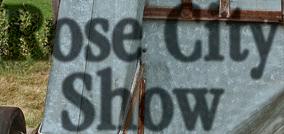








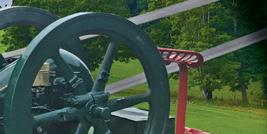



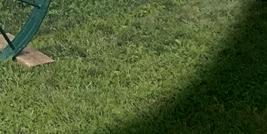
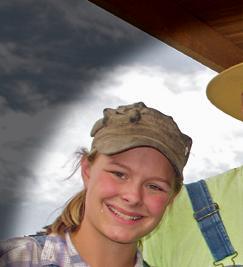






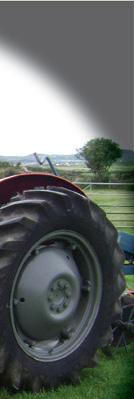






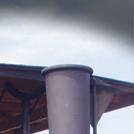






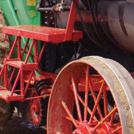



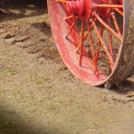
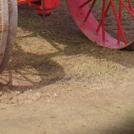


June 2018 Volume 20, Issue 11 $4.95 LOOKING AT Rural Life a Century Ago FC-0618-cover-nwstnd-subscript Cockshutt CRAZY WISCONSIN MAN’S COLLECTION INCLUDES TWO ULTRA-RARE TRACTORS March 2018 Volume 20, Issue 8 $4.95 C1-0318-FC cover-subscription-newsstand.indd 1 8:09 AM Unlock expert advice on how to navigate the world of antique machines in the pages of Farm Collector ! We explore the unique origins of the tools, tractors, and mechanical devices that shaped the trajectory of the international scene – its industry, landscape, and culture. In addition to our exclusive content, we also bring together thousands of collectors to buy, sell, and trade. Don’t miss out on your next deal – connect with our thriving network today! ATTENTION: SPECIAL OFFER! SUBSCRIBE TODAY AND SAVE! SUBSCRIBE TODAY AND SAVE! Simply mail in your discount voucher below! Volume 19, Issue 5 Volume 19, Issue 8 KC LIGHTNING ENGINES ■ PLOWING 101 Rust, or restoration? MAKING THE ARGUMENT FOR TRACTORS LEFT IN THEIR WORK CLOTHES 1/11/17 May 2018 Volume 20, Issue 10 $4.95 RoseShowCity KEEPS BLOOMING BY PRESERVING THE PAST, VOLUNTEERS KEEP MINNESOTA MAN’S DREAM ALIVE FC-0518-cover-options.indd Promo Code: HFCHSN91 (866) 624-9388 | WWW.FARMCOLLECTOR.COM Name Address City State Zip E-mail Address MAIL TODAY! Bill me Payment enclosed 1 year (12 issues) for $59.40 Only $34 .95 Farm Collector Magazine PO Box 1583 Lincolnshire, IL 60069-9834 Canada: $46.75/year | International: $82.75/year It’s faster to order online!



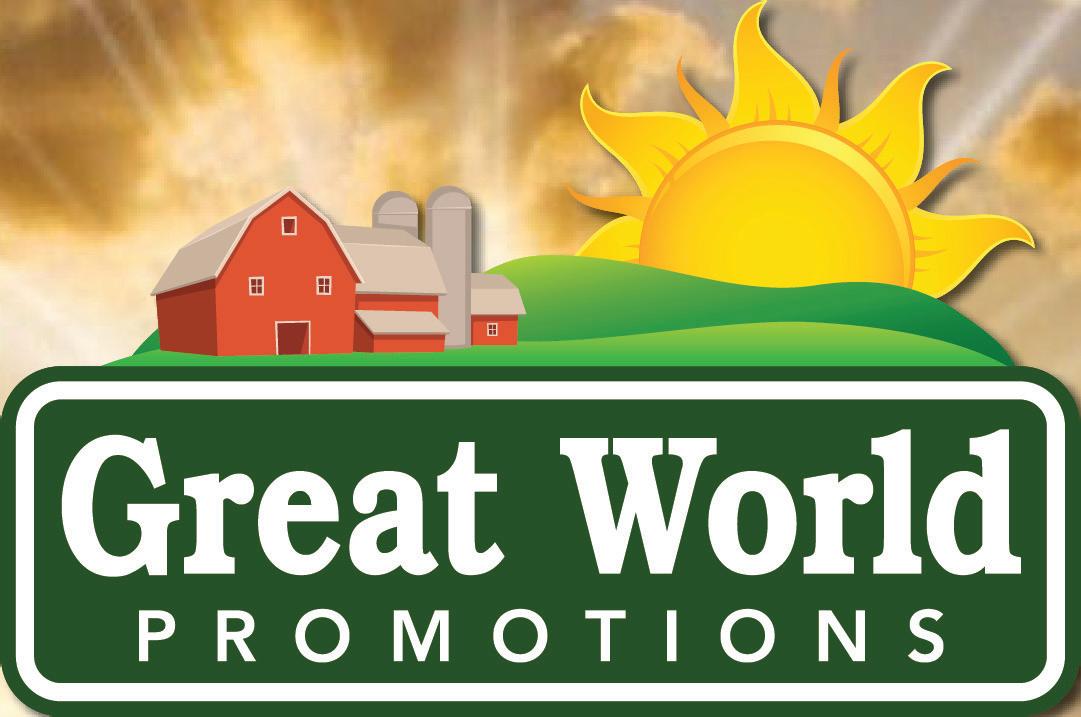




PROVIDING QUALITY PRODUCTS FOR 38 YEARS CALL TODAY! 1-800-397-6067 GreatWorldPromo@gmail.com BUTTONS PLAQUES Acrylic, Award, Metal & Magnetic RIBBONS BANNERS COFFEE MUGS LICENSE PLATES VINYL DECALS WRISTBANDS T-SHIRTS Use any or all of these products to promote your event! No extra charges for layout or setup.






























 Barry Tuller, Stevensville, Michigan
Barry Tuller, Stevensville, Michigan











































































































































































































 Collector
Collector








































































































































 By Sara Jordan-Heintz
By Sara Jordan-Heintz























 INTERNATIONAL HARVESTER TRACTORS
GAS ENGINE RESTORATION & MORE GAS ENGINE RESTORATION PACKAGE #9975 $39.90 $29.99
FARM COLLECTOR LEGACY HAT
INTERNATIONAL HARVESTER TRACTORS
GAS ENGINE RESTORATION & MORE GAS ENGINE RESTORATION PACKAGE #9975 $39.90 $29.99
FARM COLLECTOR LEGACY HAT
























































































































































































































































































































































